Join me on an adventure through North India where I caught sight of Mount Everest from my flight window to kick off a journey filled with awe and wonder. From the peaceful serenity of Rishikesh with its treks, temples, cafes, and invigorating Ganga baths to the vibrant energy of Ganga Aarti, the spiritual essence of the region captivated me. Then, in Kasol, I found solace in its cosy cafes, majestic mountain views, and thrilling treks, a magical stay in the snow-covered village of Grahan. Bathing in the hot springs of Manikaran and witnessing a Himachali festival, making memories to last a lifetime. Come along as I share tales of adventure, spirituality, and delicious food from Rishikesh to Kasol and extending up to the pink city of Jaipur!
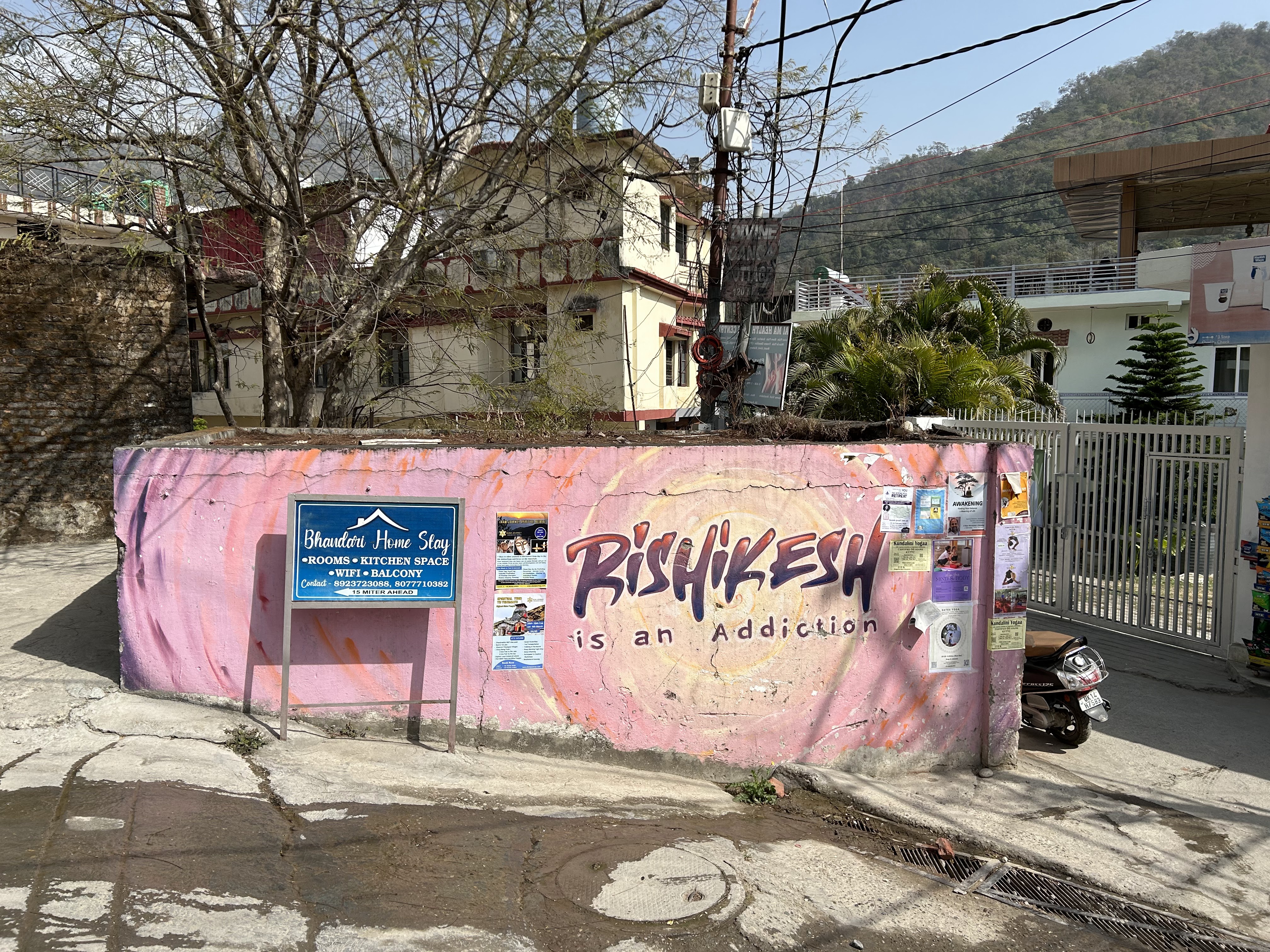
My trip began solo from Bengaluru as I boarded the 0515 Air India Express flight to New Delhi with a short layover at Bagdogra, West Bengal. After spending the night in the magnificent T2 of the Kempgowda International Airport, I dozed off in the flight to be awakened by the pilot’s announcement to look out of the left window of the plane to catch a glimpse of Mt Everest along with Kanchenjunga, Makalu and other prominent mountains as we reached Bagdogra. Out of pure luck, I was seated in the window of the plane’s left side from where I had a beautiful sight of the mountains. This marked the beginning of an amazing trip.
Following a quick layover in Bagdogra, the gateway to the northeast of India, I reached New Delhi by 1430. I collected my baggage and hurried to catch the Airport Metro, making my way to ISBT Kashmere Gate. From there, I boarded a bus bound for Rishikesh at 1700. The bus reached Nepali Farm, the nearest bus stand to Rishikesh a little late owing to the Farmer’s Protest on the borders of New Delhi. I took a shared auto from Nepali Farm to Zostel Rishikesh, my home for the next few days. I was joined by my friend and colleague who was back from a successful trek to the Brahmatal Lake.
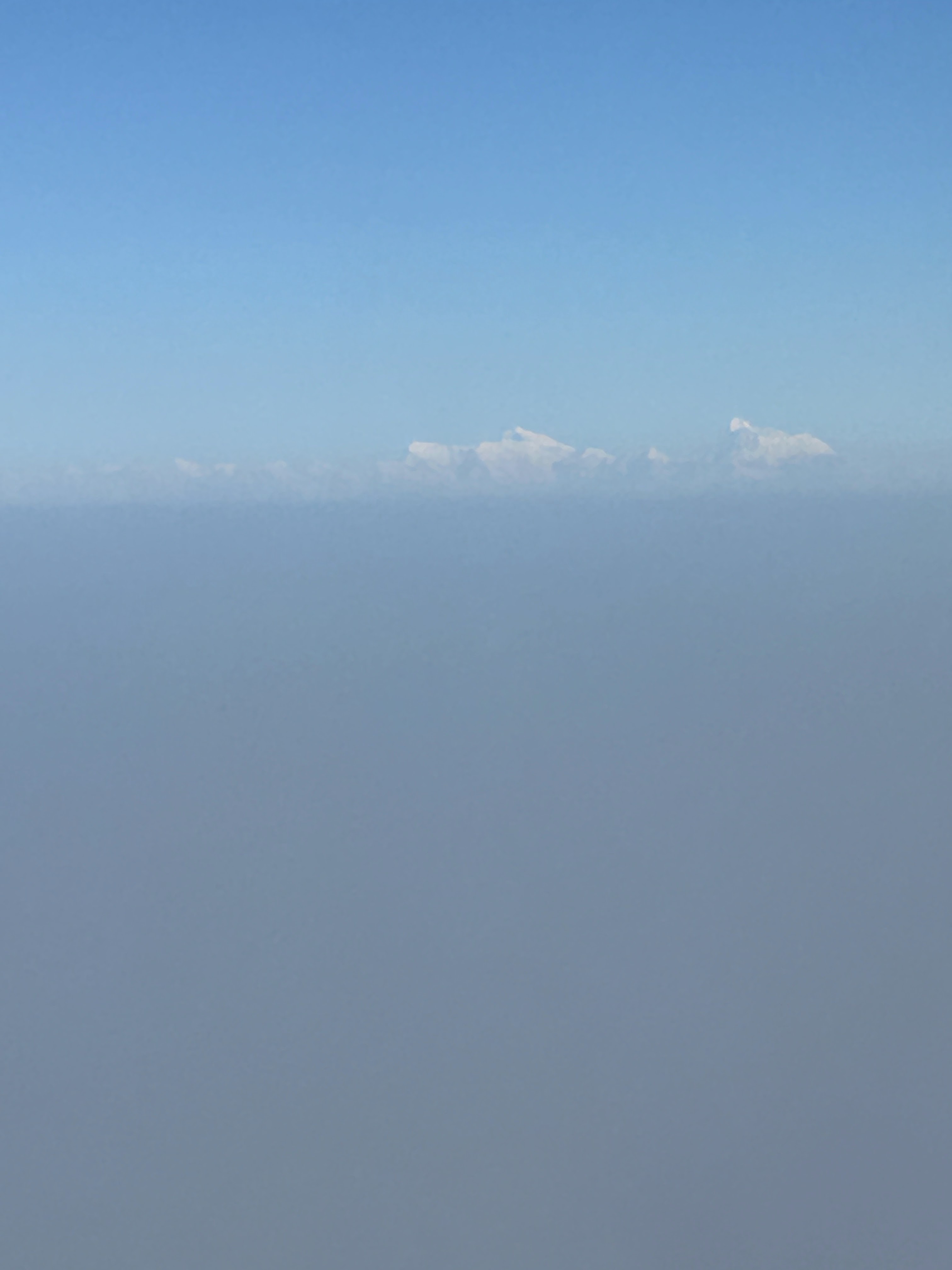
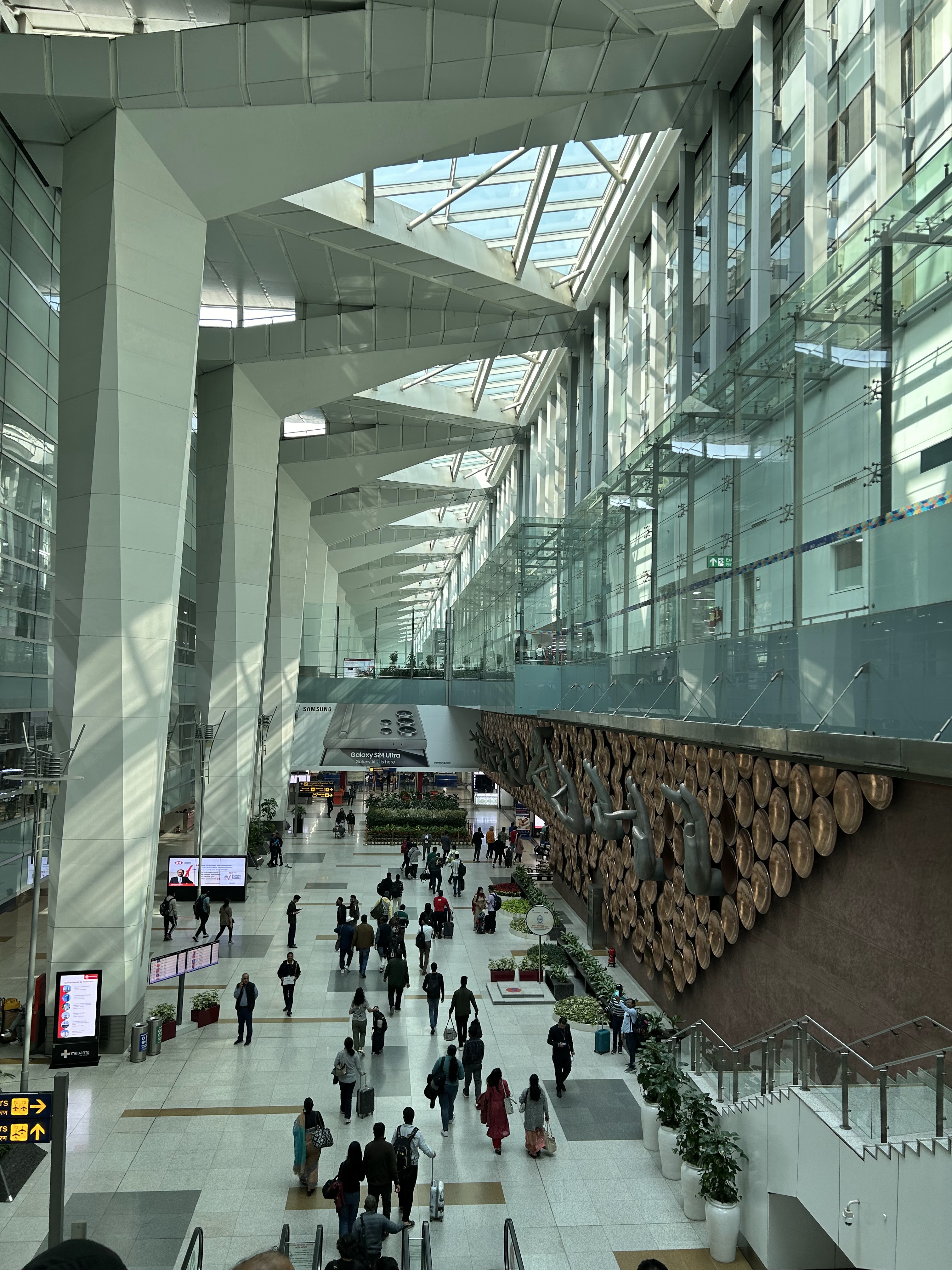
The next day, we set out on foot to explore the serene and holy place of Rishikesh. Upon reaching Ram Jhoola, an iconic suspension bridge spanning the serene waters of the Ganges which offers a picturesque crossing, we strolled through the bank. We then decided to take a dip and bath in the holy river (to wash away the uncountable sins) which was a flowing ice bucket in the morning air. Though it took me some time to summon the courage to step into the water, once I did, it was an incredibly beautiful experience. The crystal-clear water, the refreshing cold air, and the sound of prayers from the nearby temples in the background were exactly what I had been longing for. We sat in the sunlight after our bath, letting its warmth dry us off. The nearby Kali temple caught our attention. We went into the small temple which was warm and soothing with a huger deity of Mahakali with her feet on Lord Shiva. Finding a spot on the mat, we settled in and took a moment to meditate. The gentle music and the scent of dhoop filled the air, creating a serene atmosphere that was beyond compare.
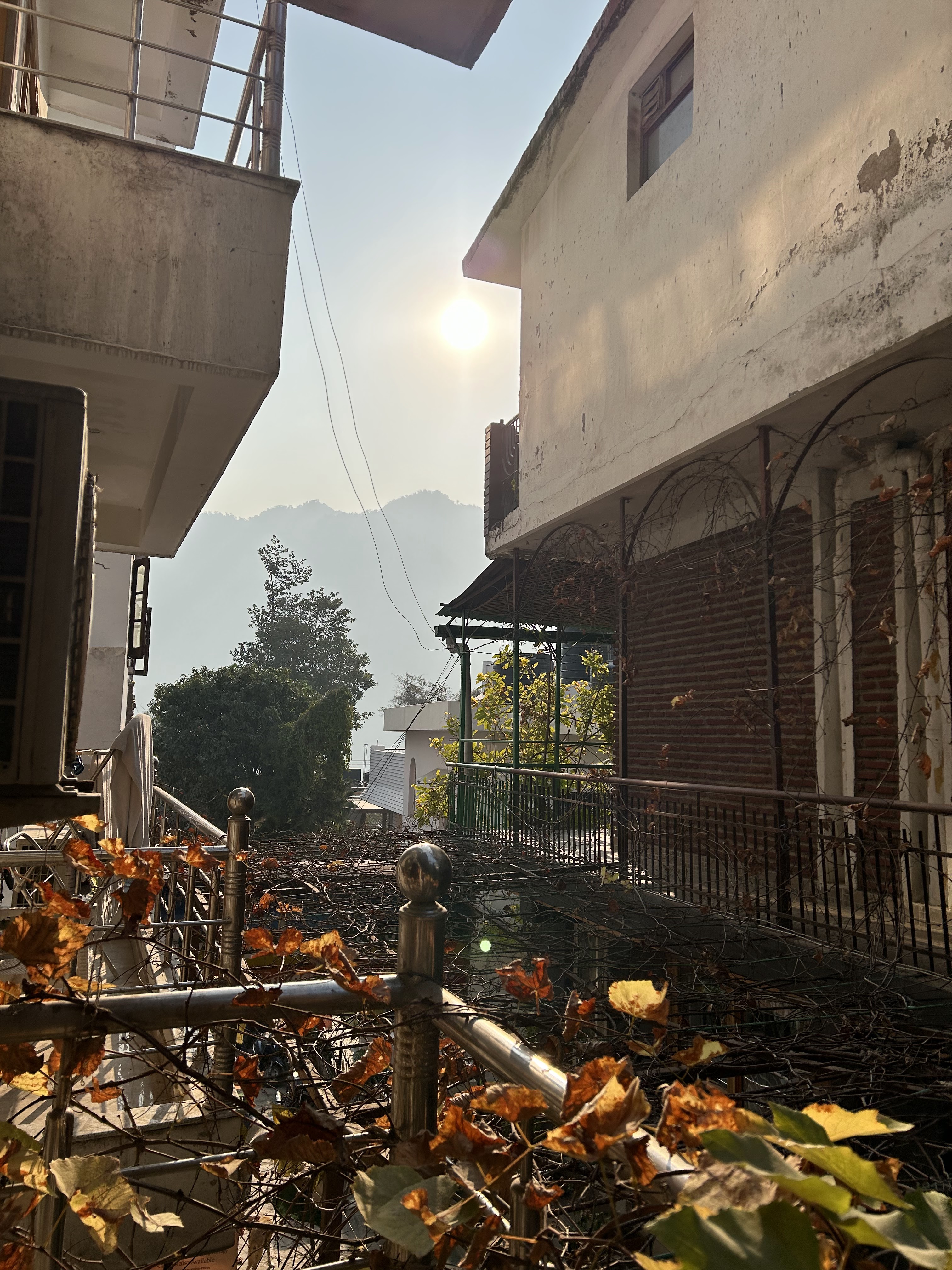
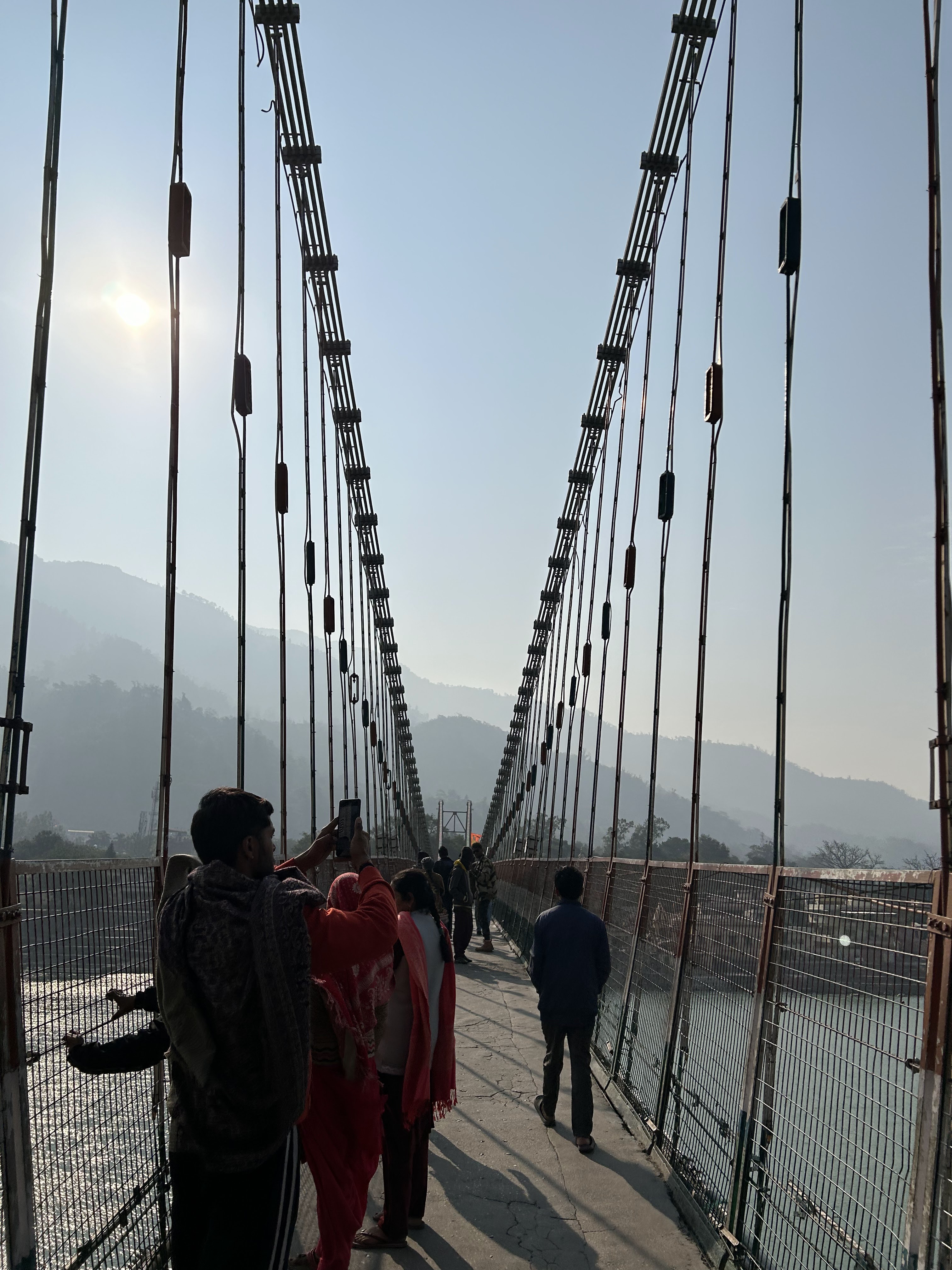
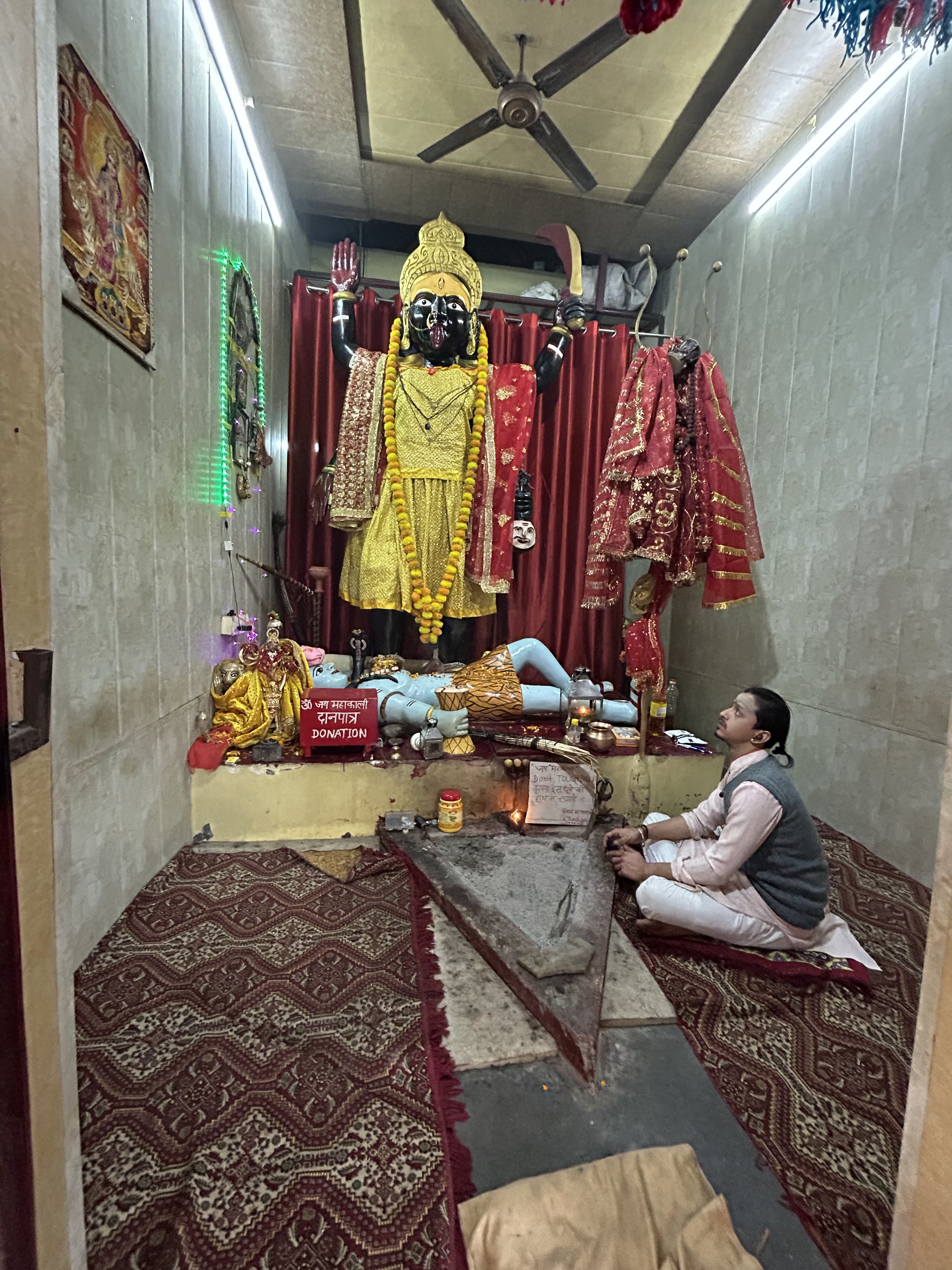
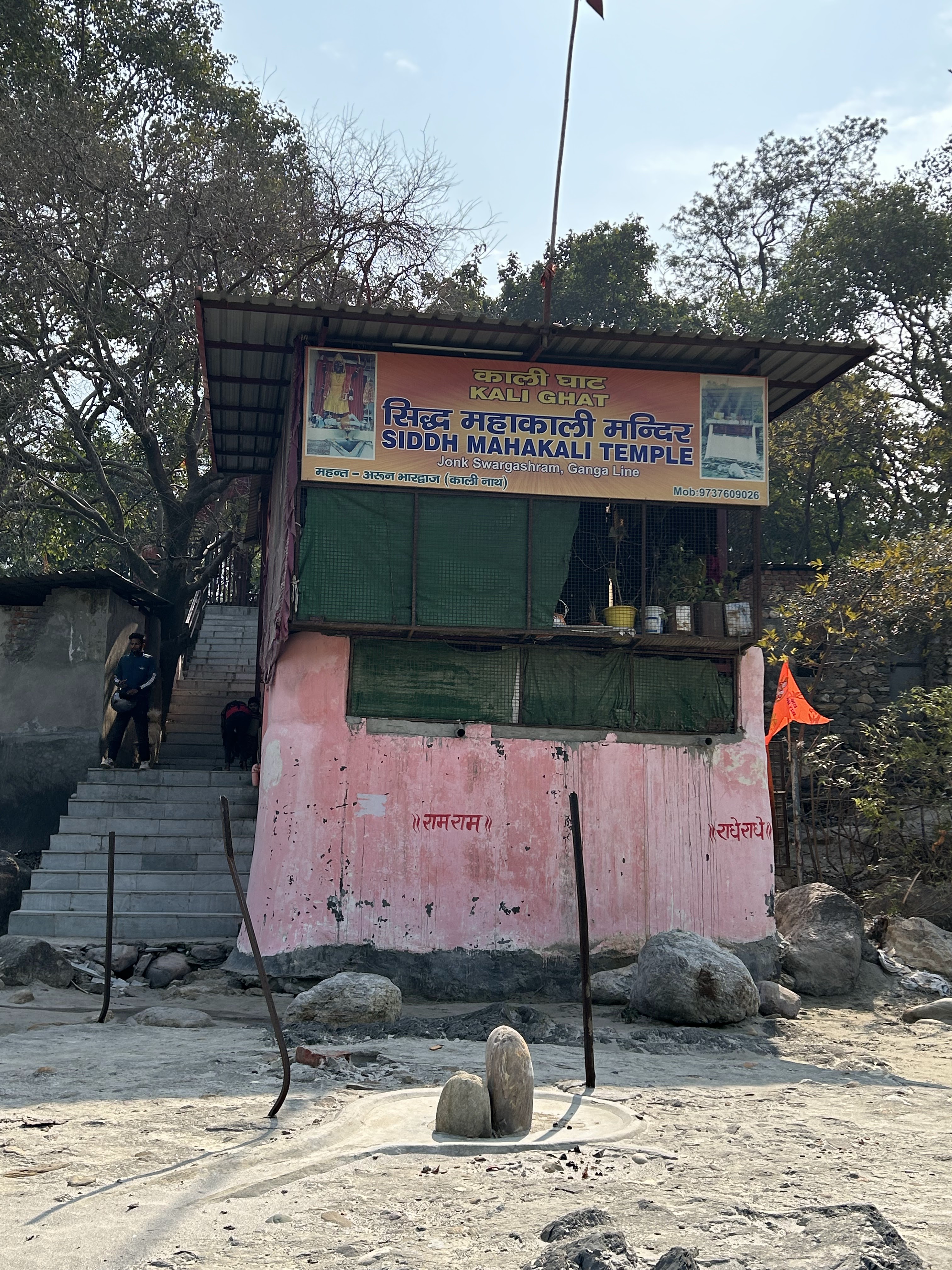
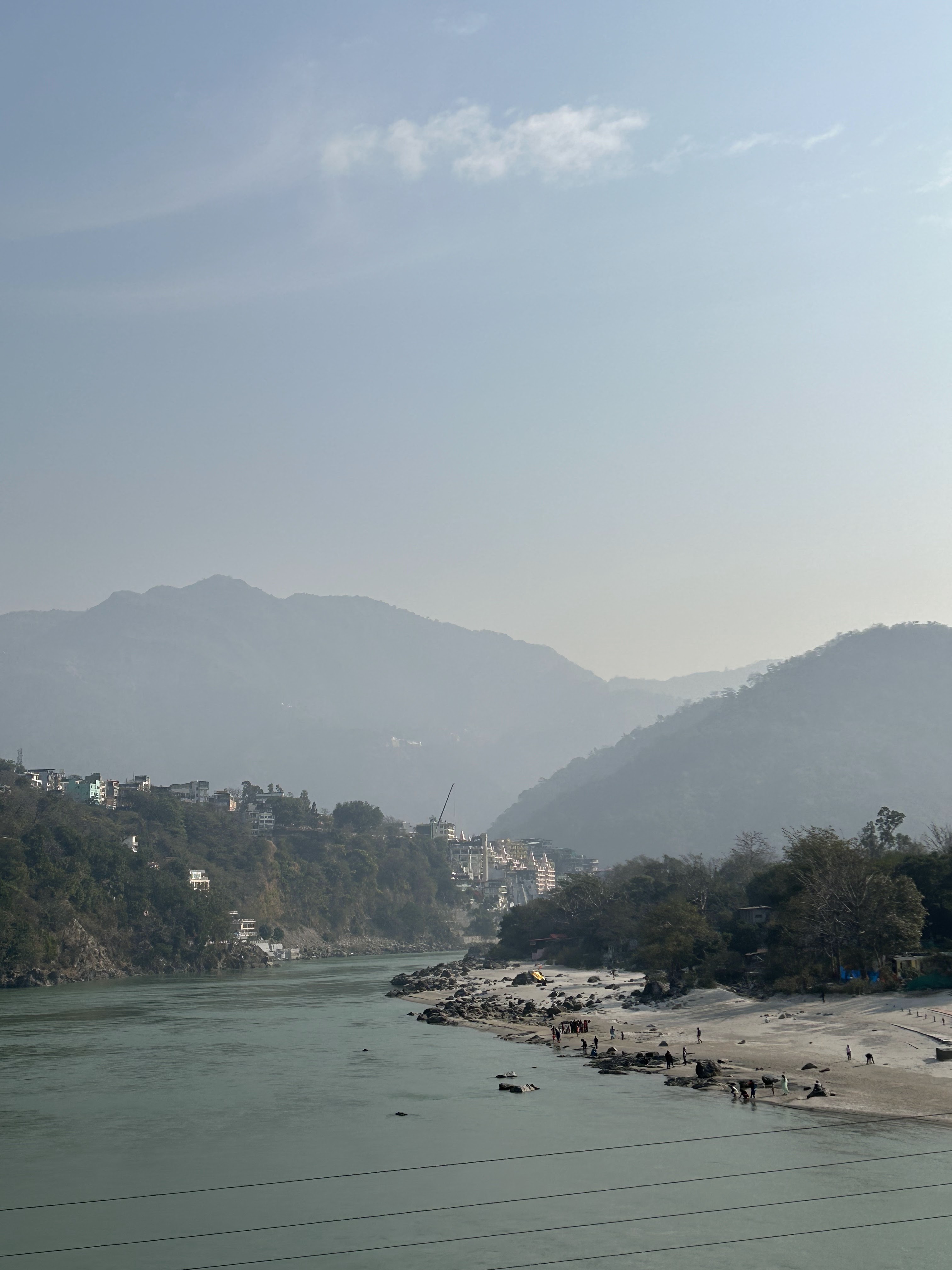
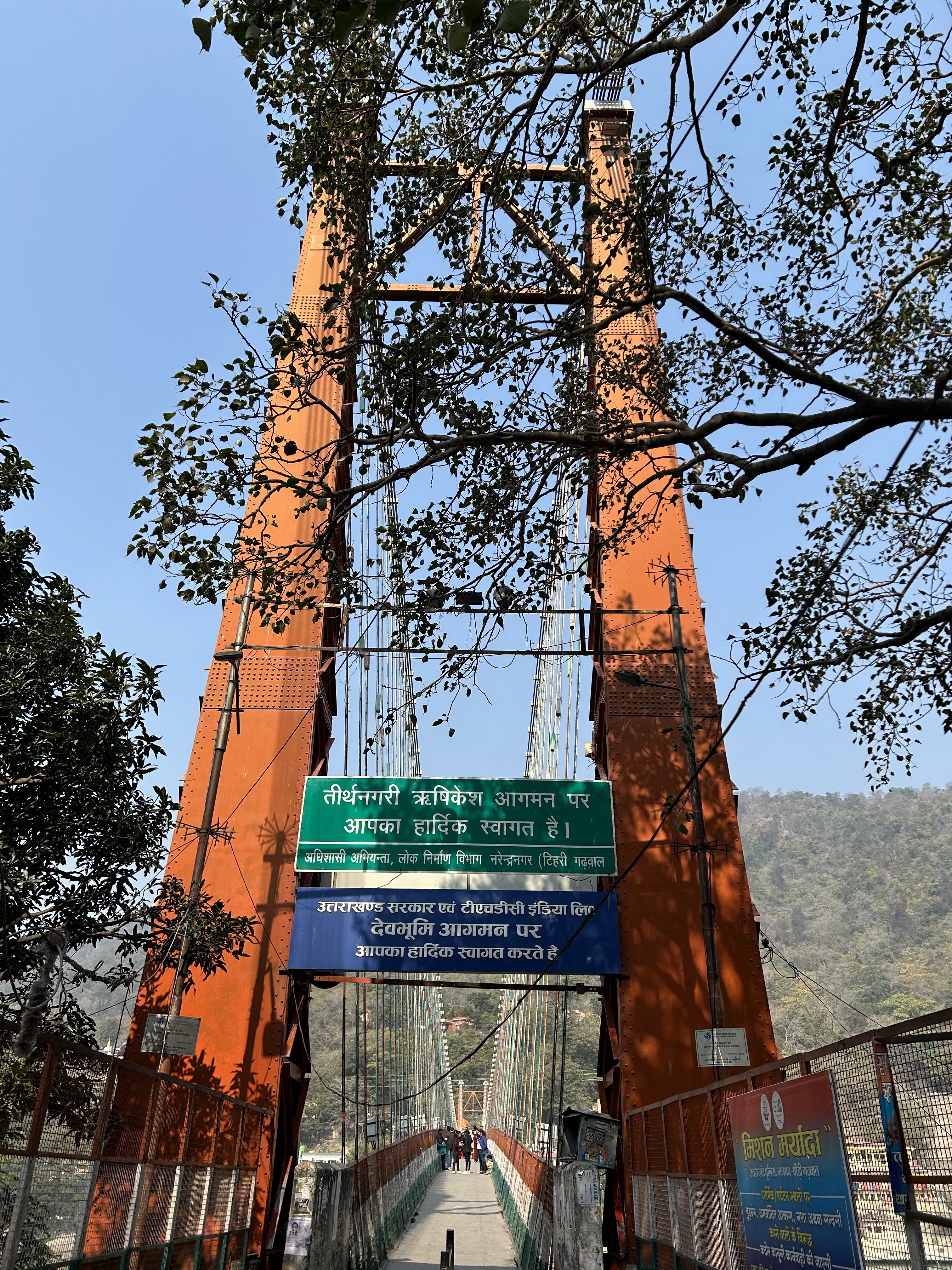
We continued to have breakfast at the famous Chotiwala restaurant and then headed to Parmarth Niketan. Parmarth Niketan, nestled on the banks of the sacred Ganges in Rishikesh, is a renowned spiritual retreat offering solace to seekers from around the world. At its forefront stands a majestic deity of Lord Shiva. We then headed to the Beetles Ashram which is also present inside the Rajaji Tiger Reserve. In the Beatles Ashram or the Chaurasi Kutia, we stumbled upon unique igloo-like huts. Offering a blend of comfort and simplicity, these huts provided a distinctive accommodation experience within the serene surroundings of the ashram. Steeped in historical significance due to its association with the Beatles’ visit in 1968, where they composed a lot of their music. Surrounded by the natural beauty of the Himalayas, whether through meditation, yoga, or cultural activities, the Beatles Ashram offered a sanctuary for those seeking to deepen their spiritual journey.
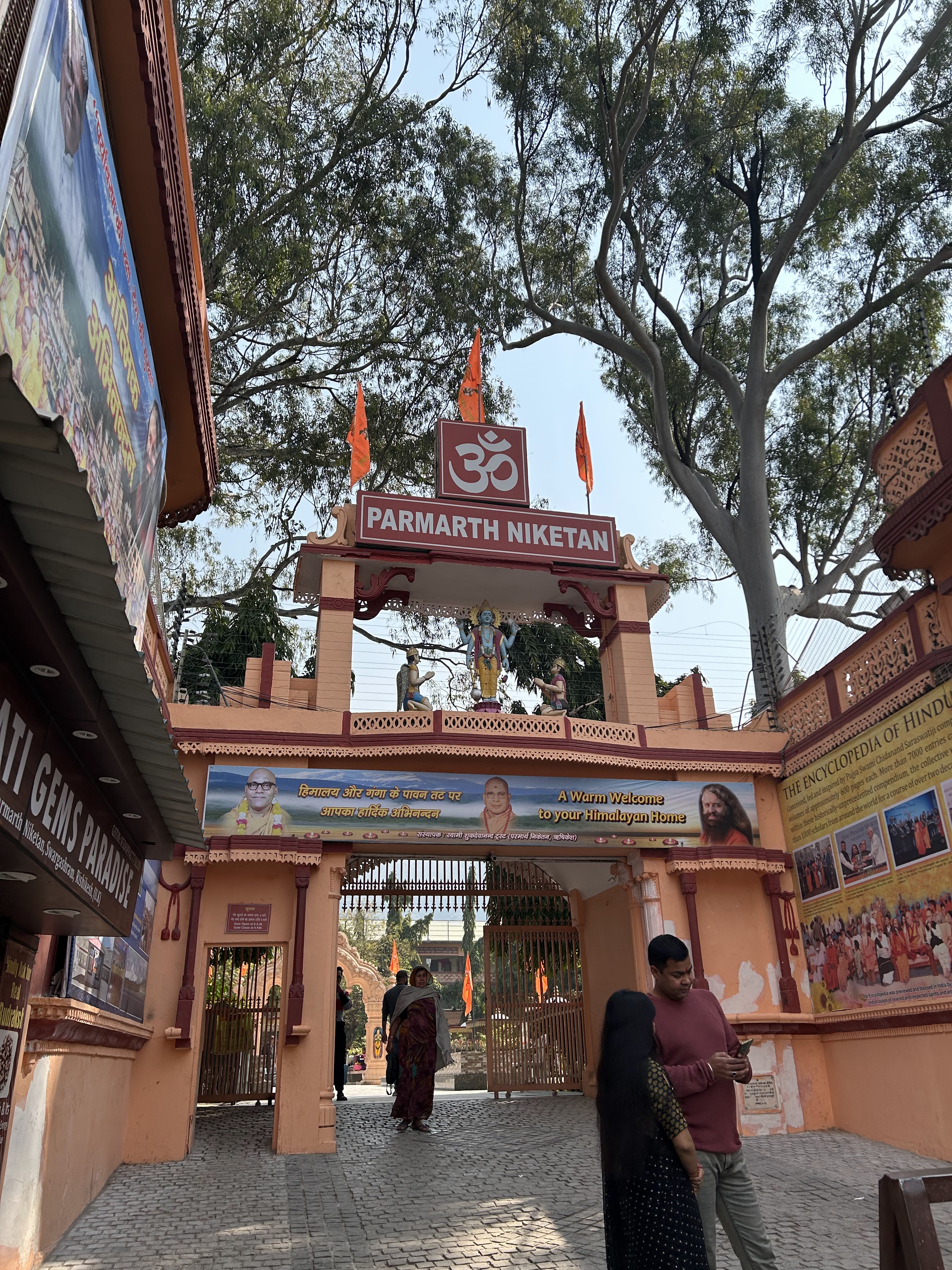
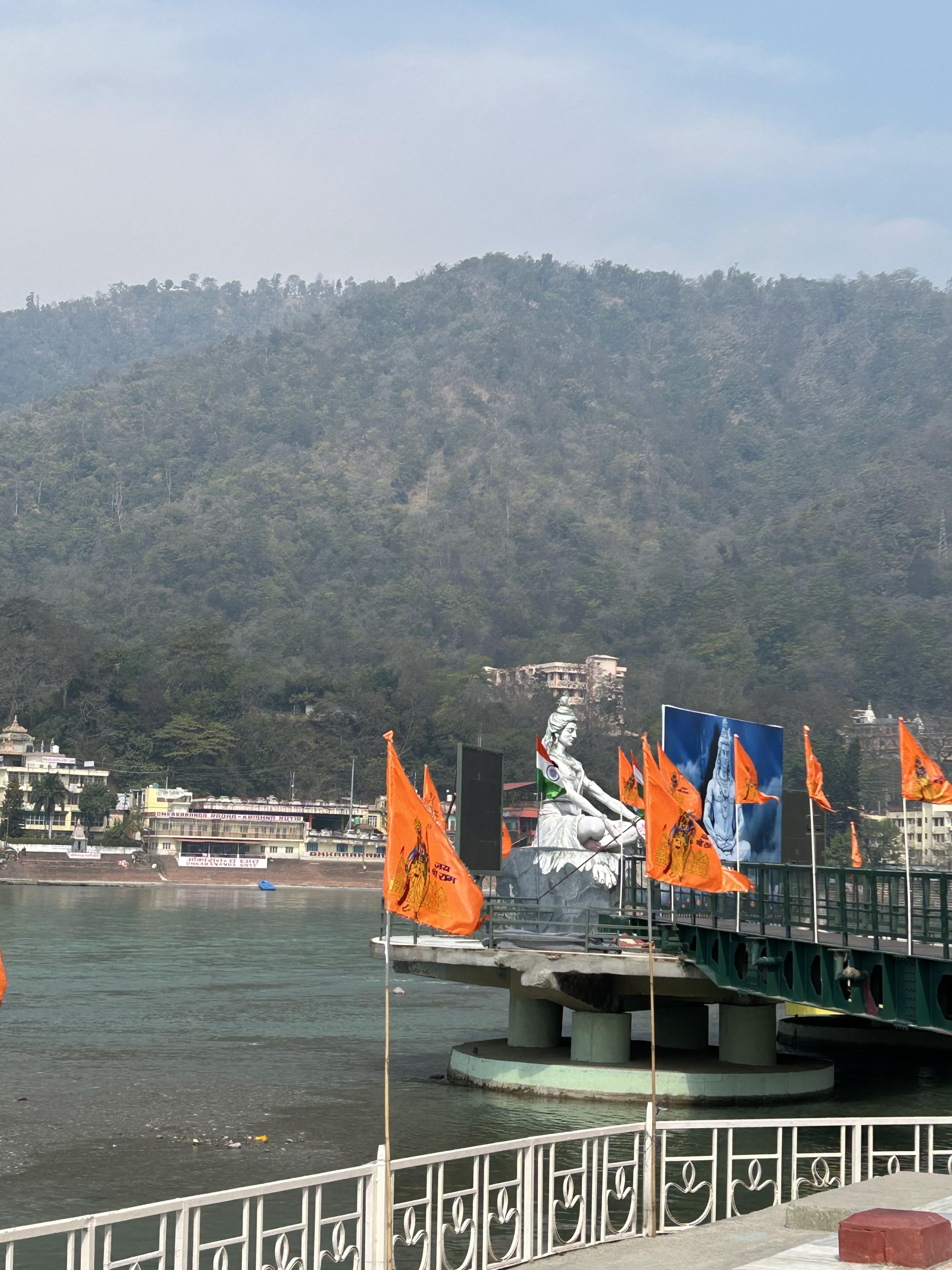

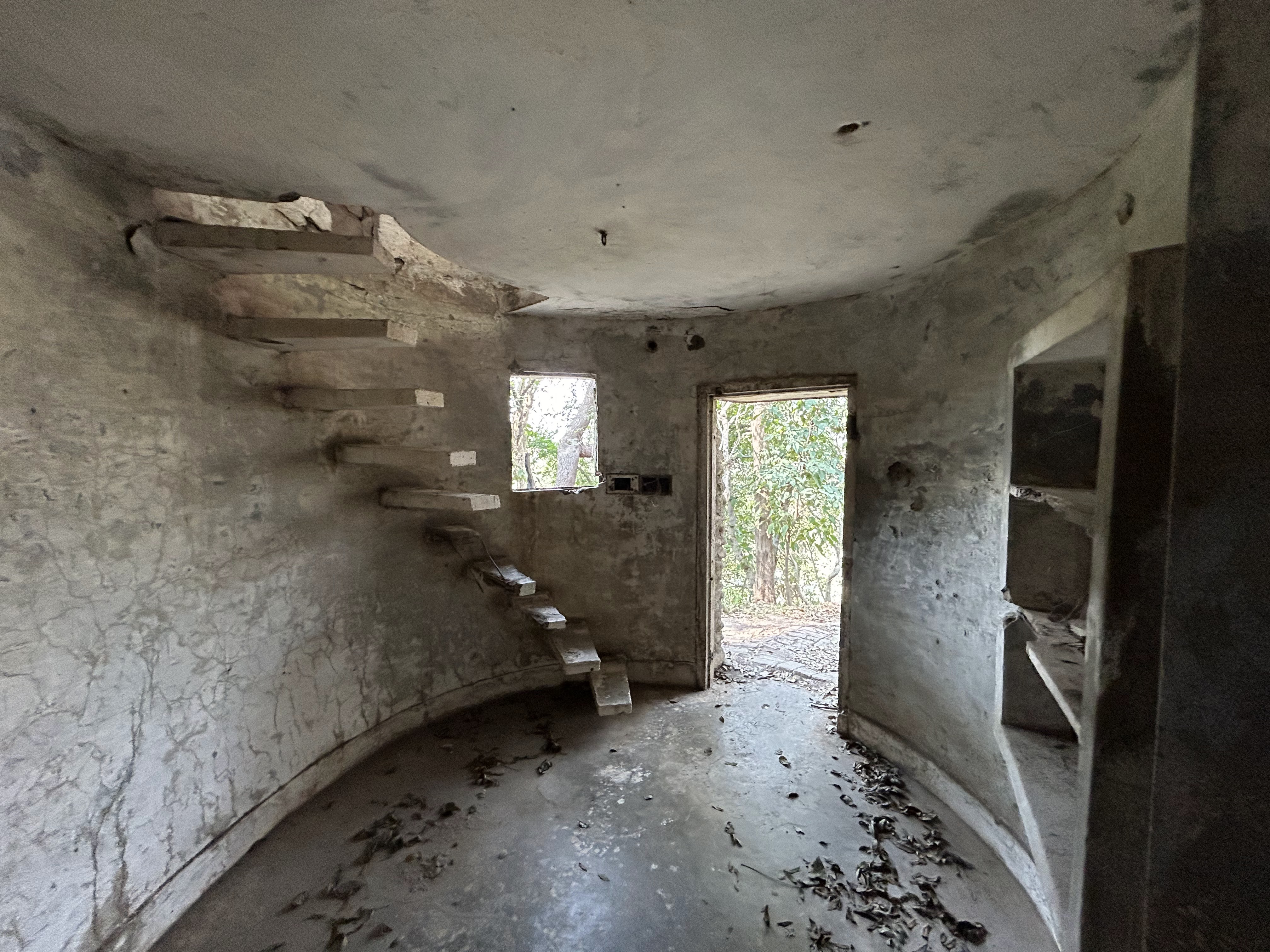
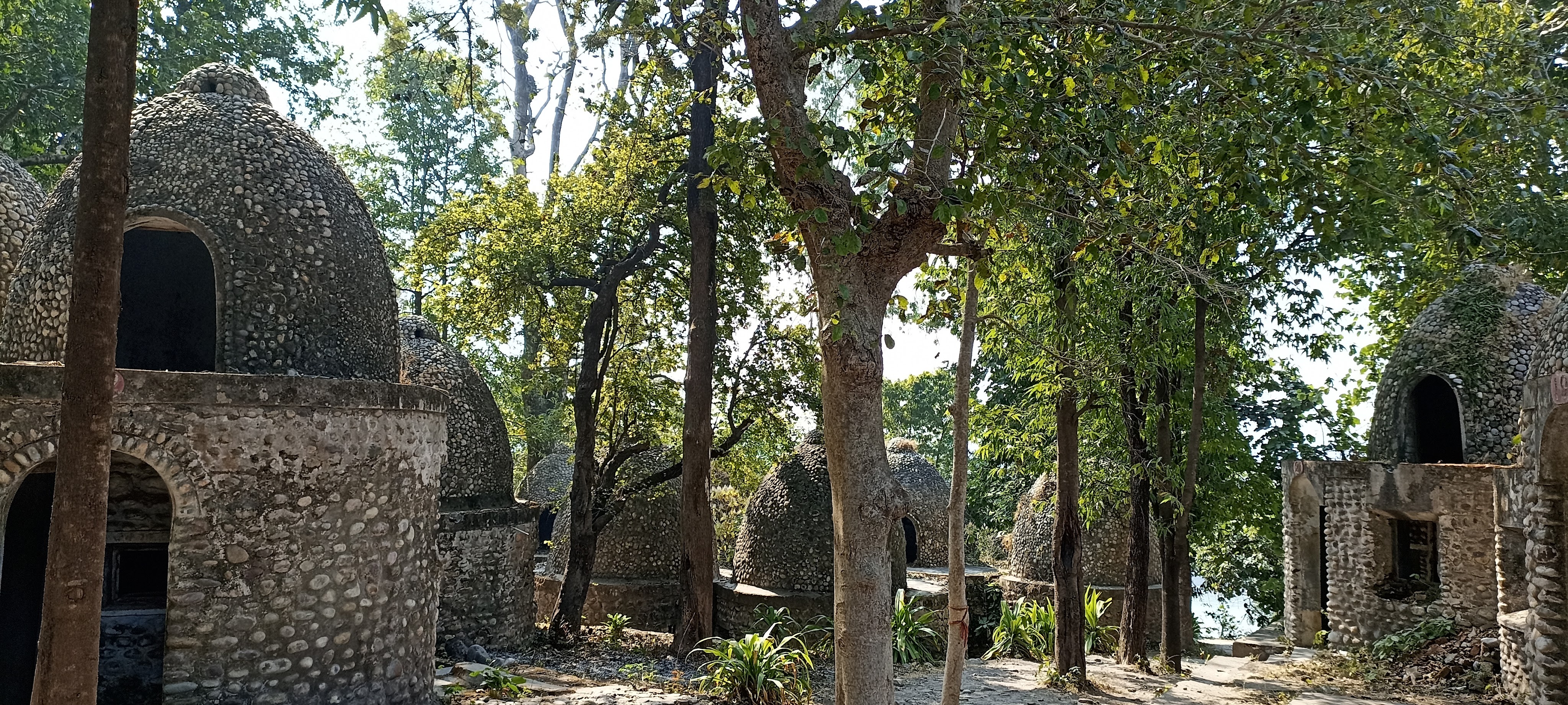
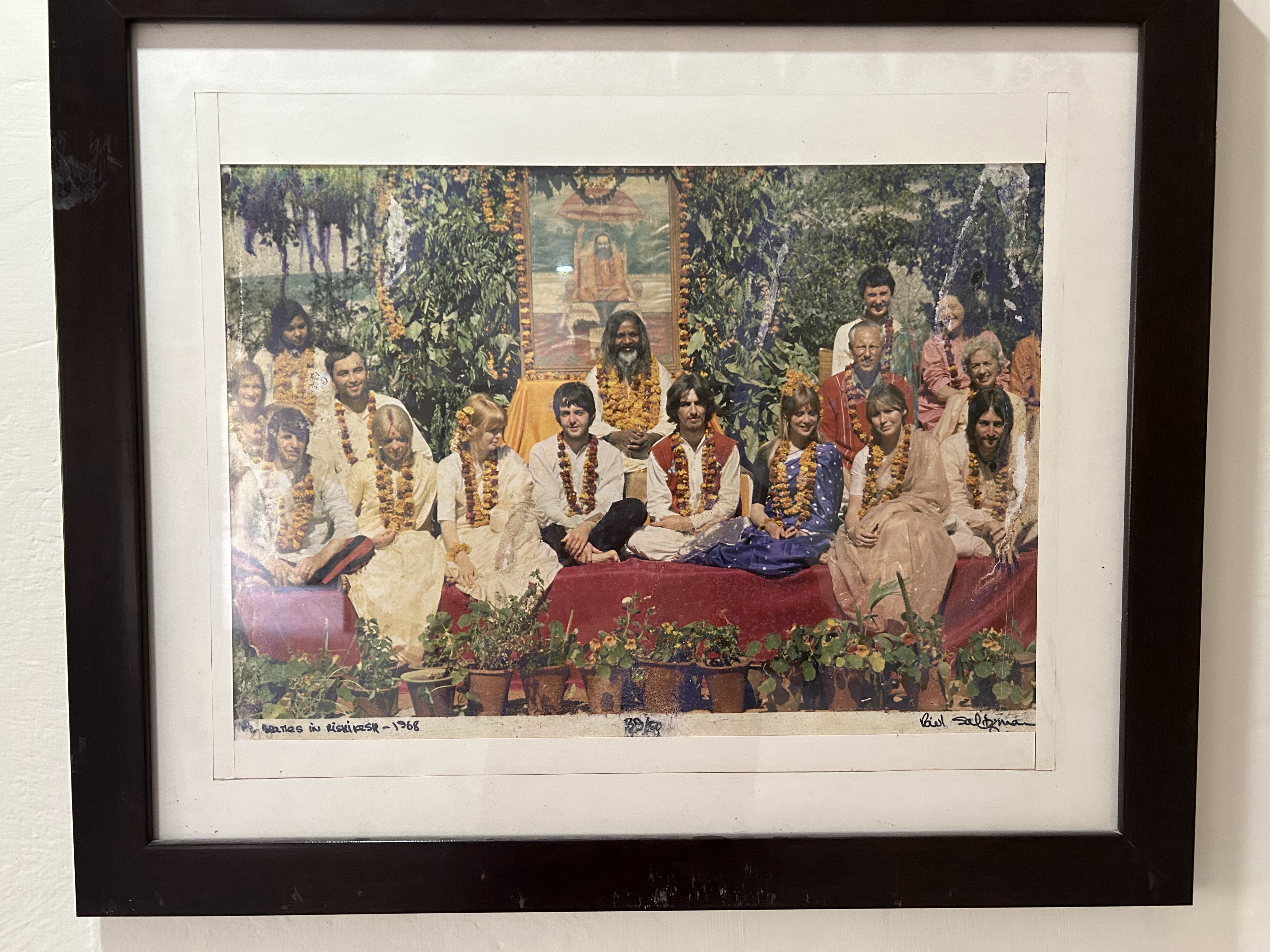
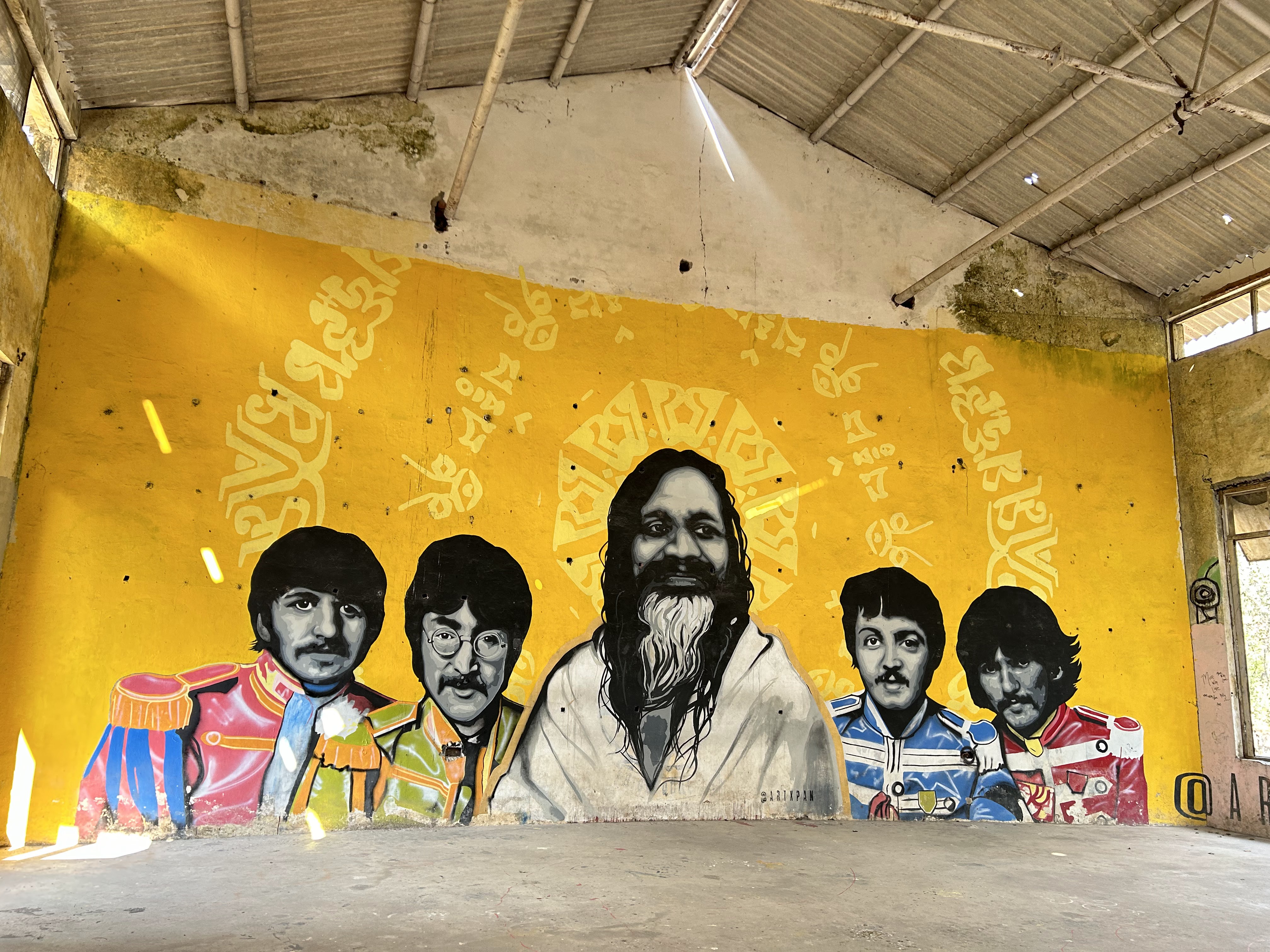
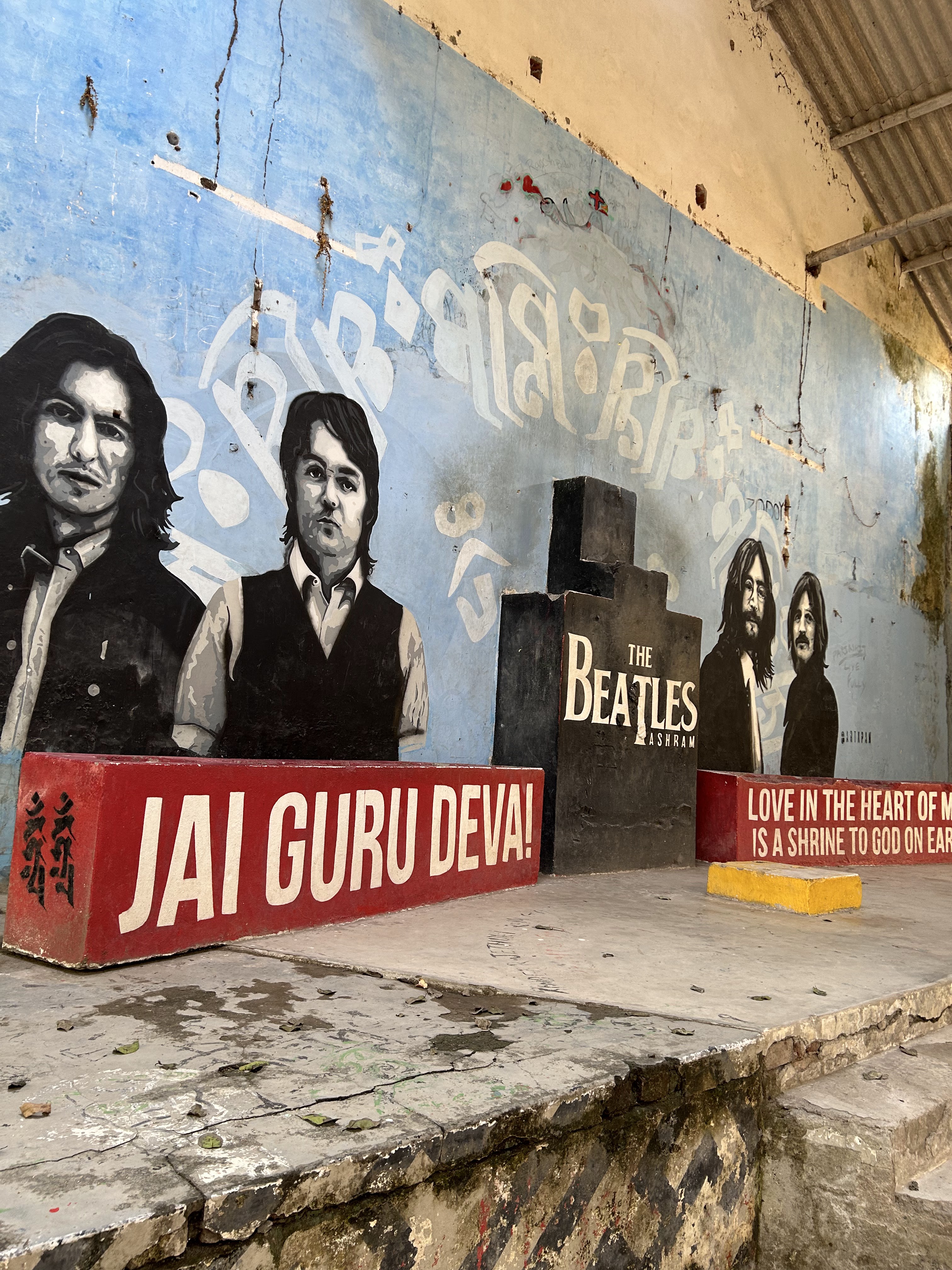
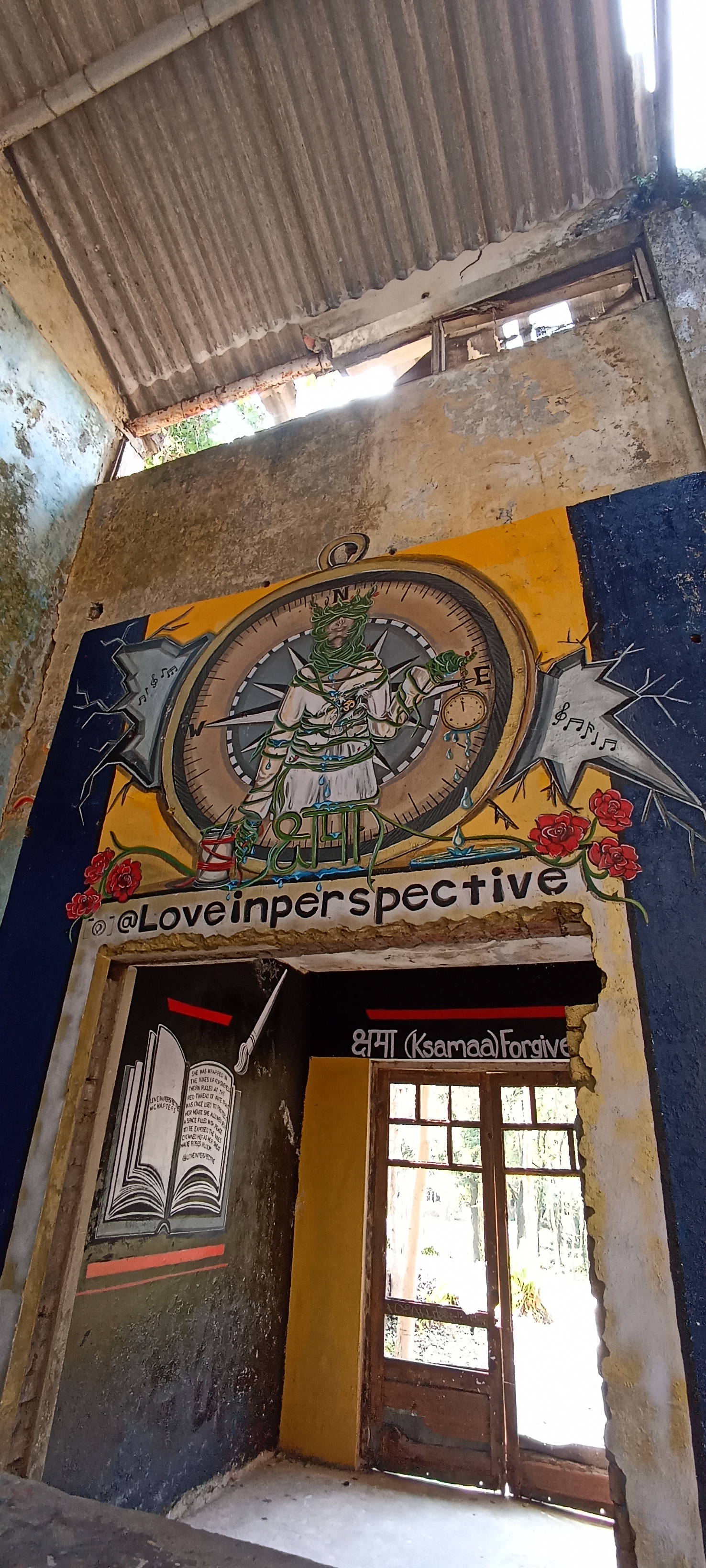
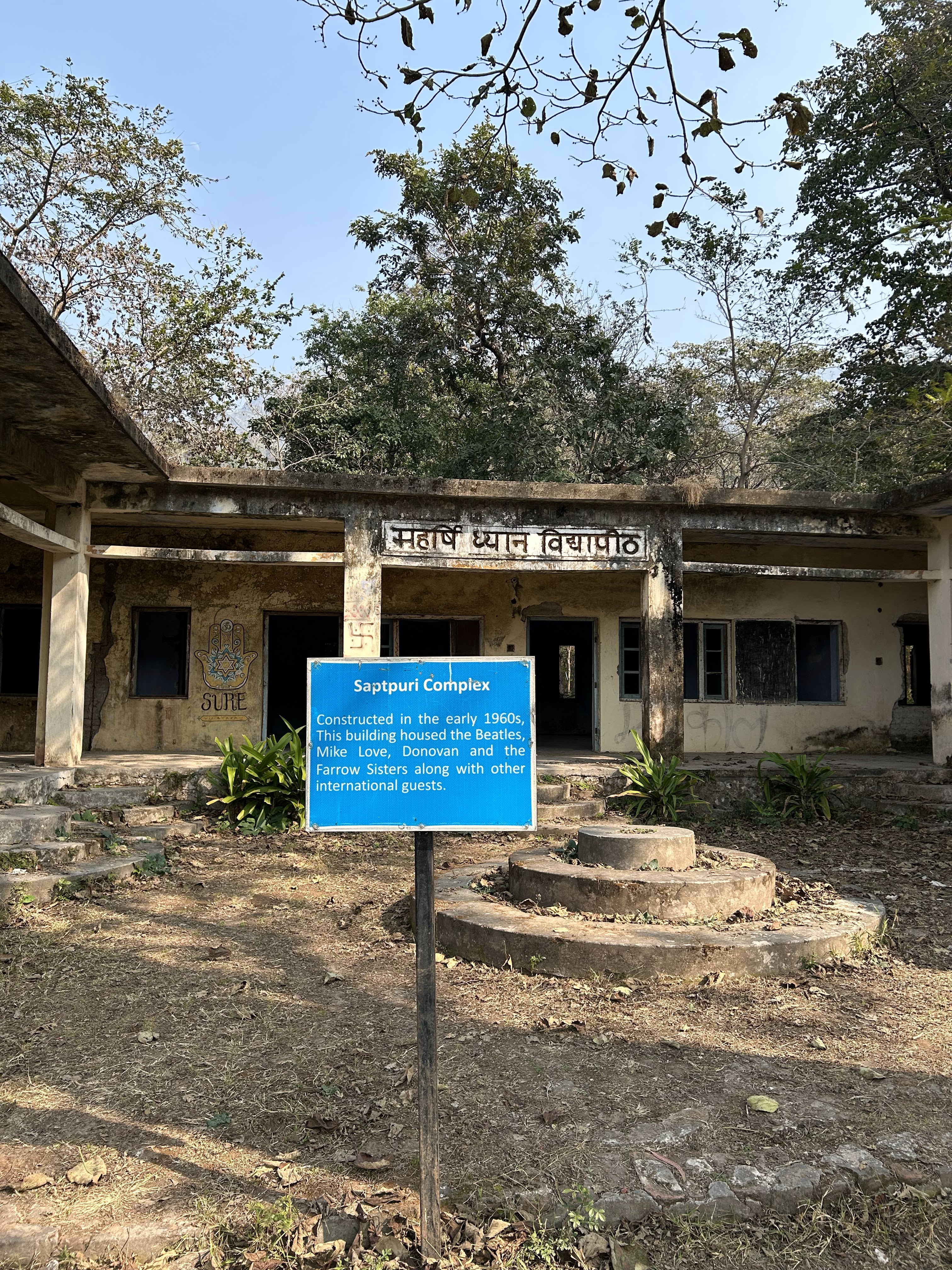
We then visited the Bhoothnath temple, dedicated to Lord Shiva situated at a higher altitude and has multiple floors. It is said that Lord Shiva took a rest here before going to marry Sati. The main temple is on the top floor from where you can get a panoramic view of Rishikesh. After coming back to Tapovan, we spent the late evening chilling at Tat Cafe situated on the bank of the river Ganga which offers an amazing view of the sun setting over the river.
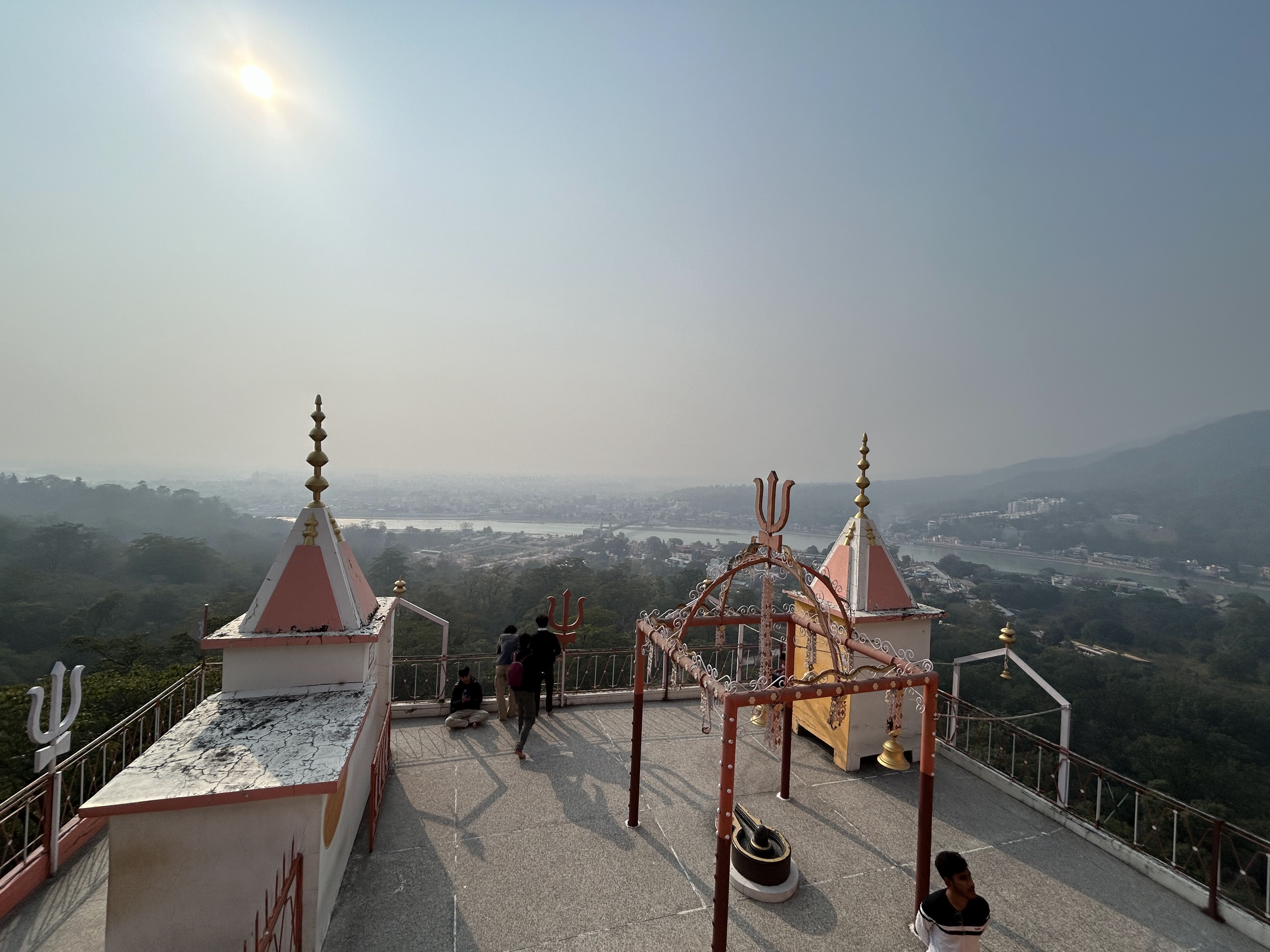
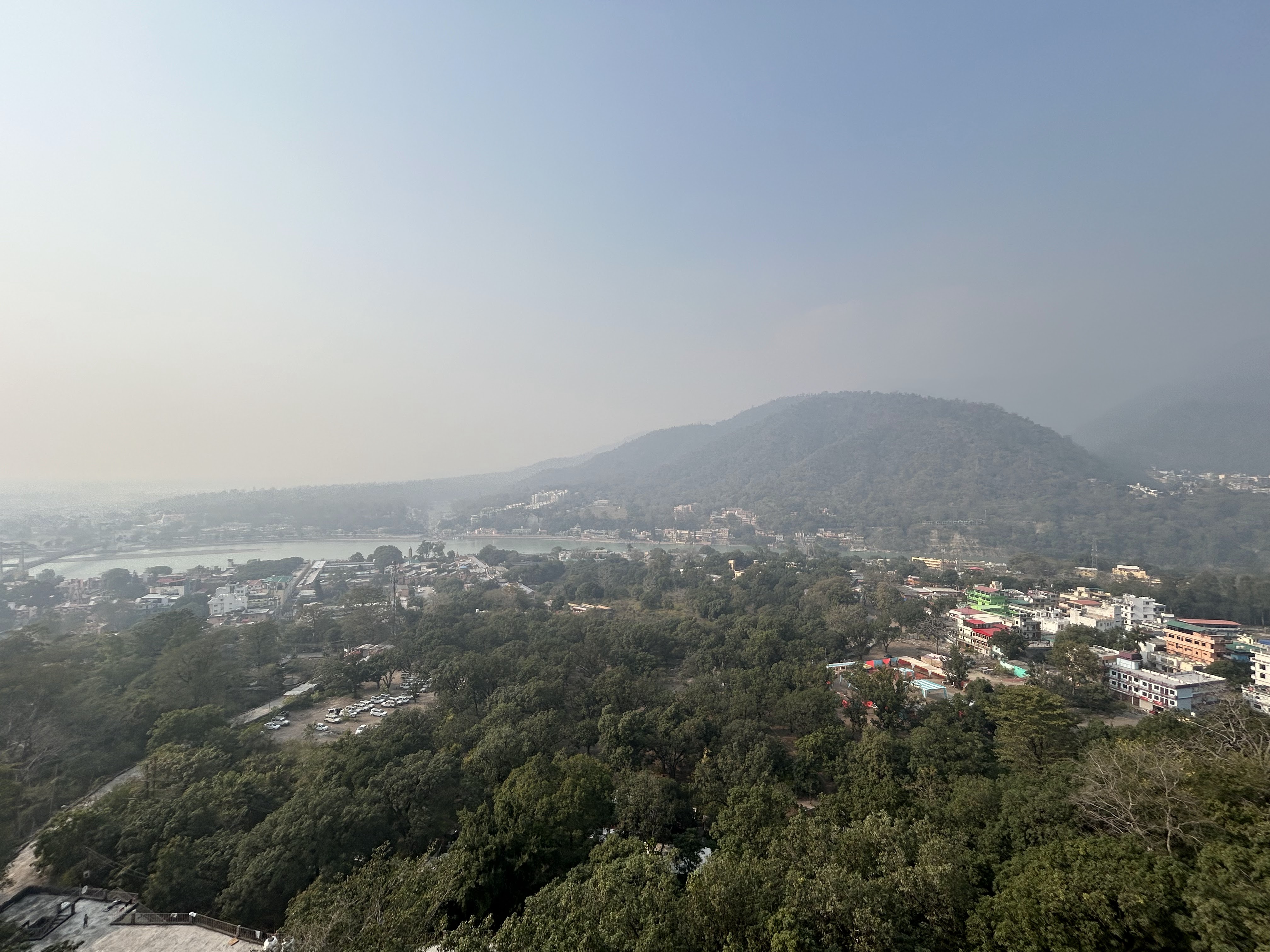
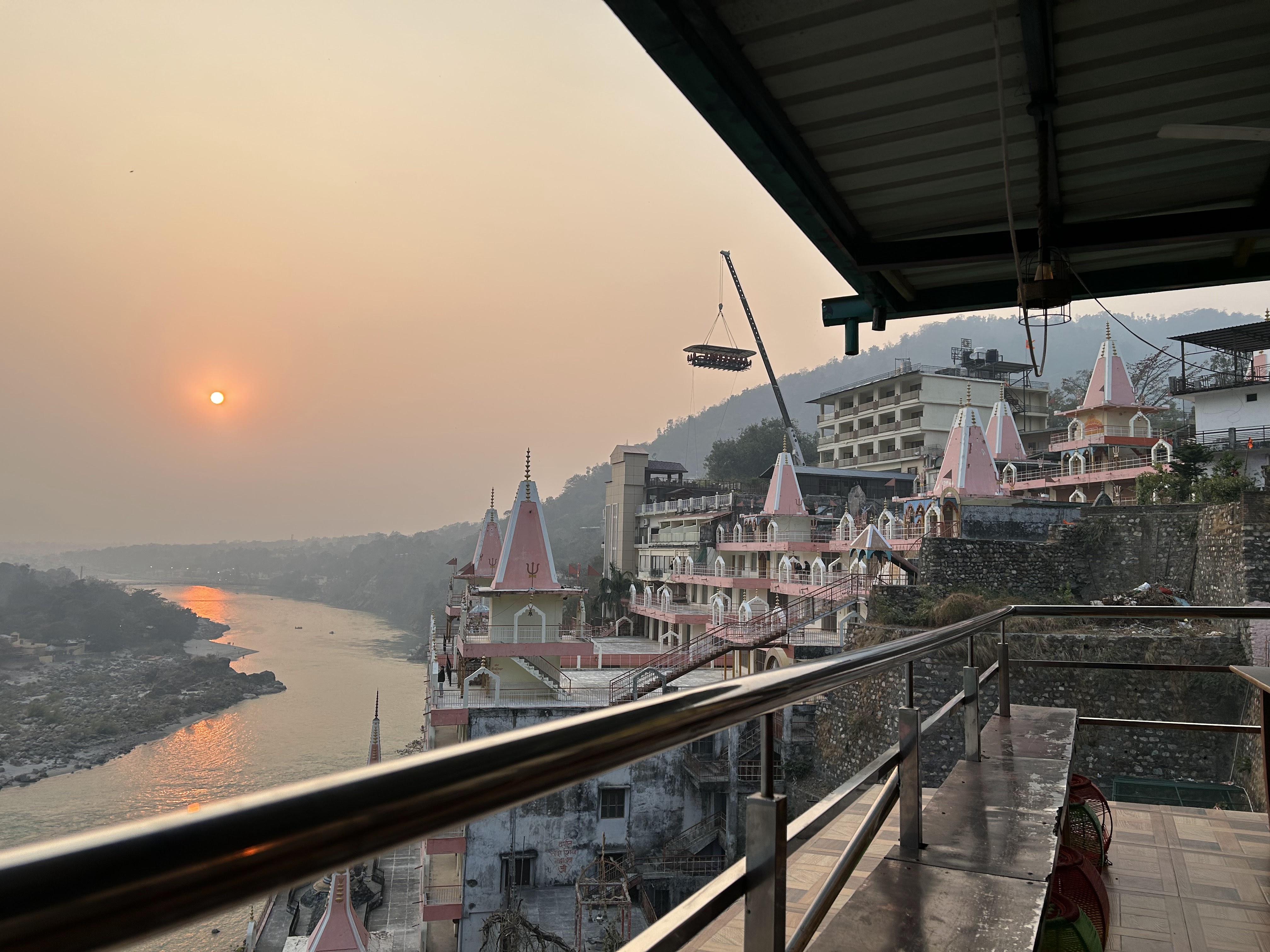
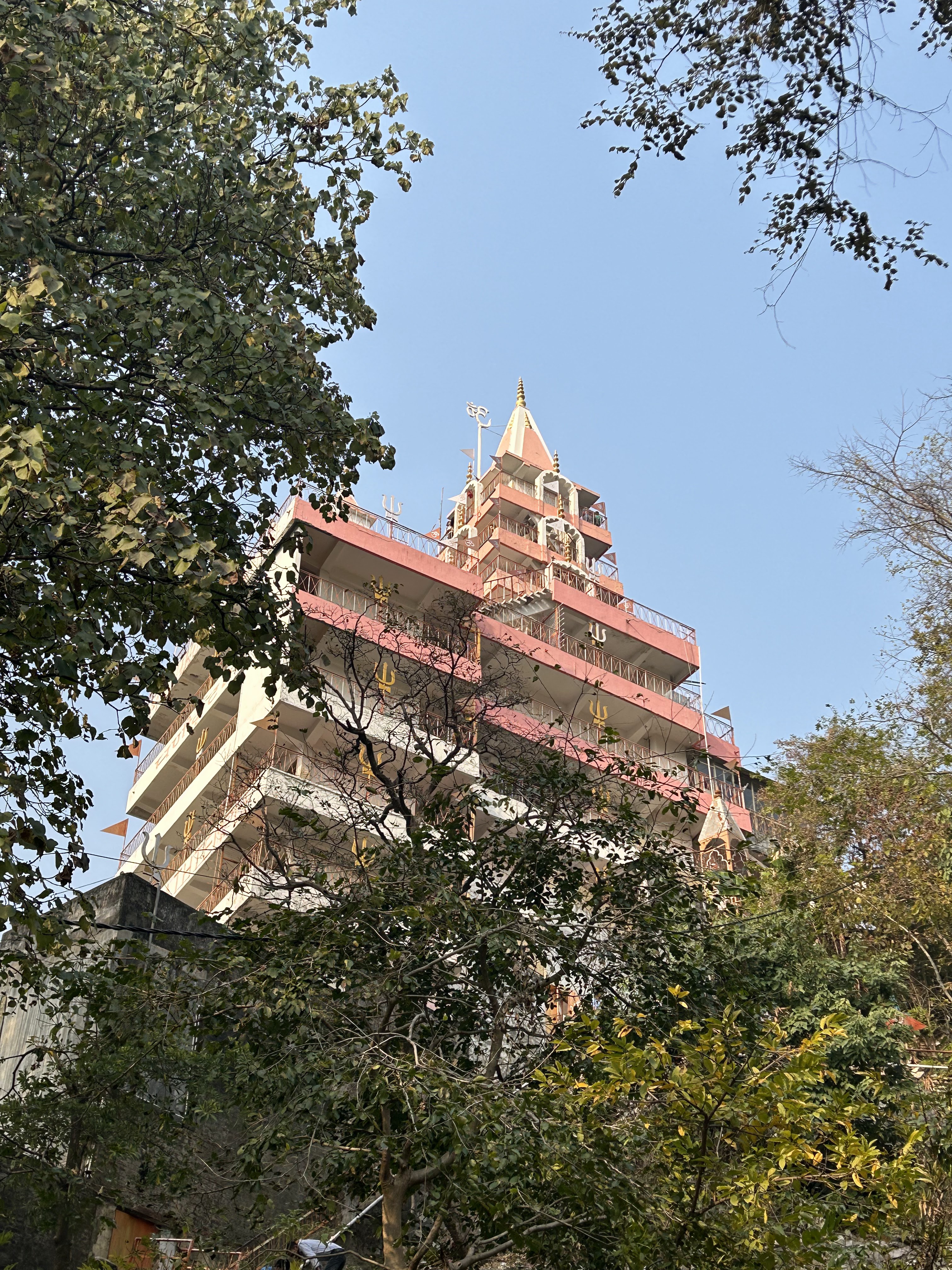
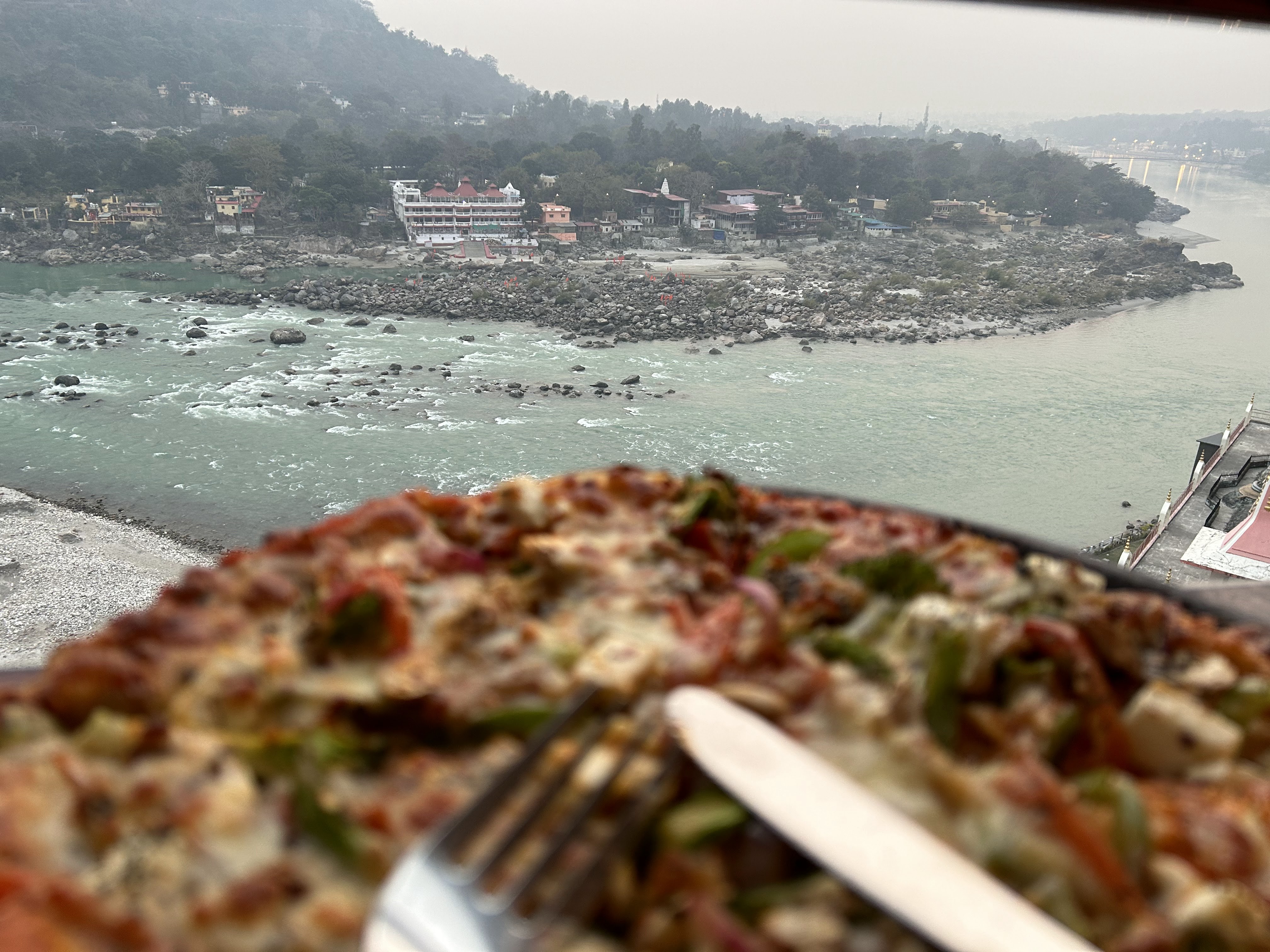
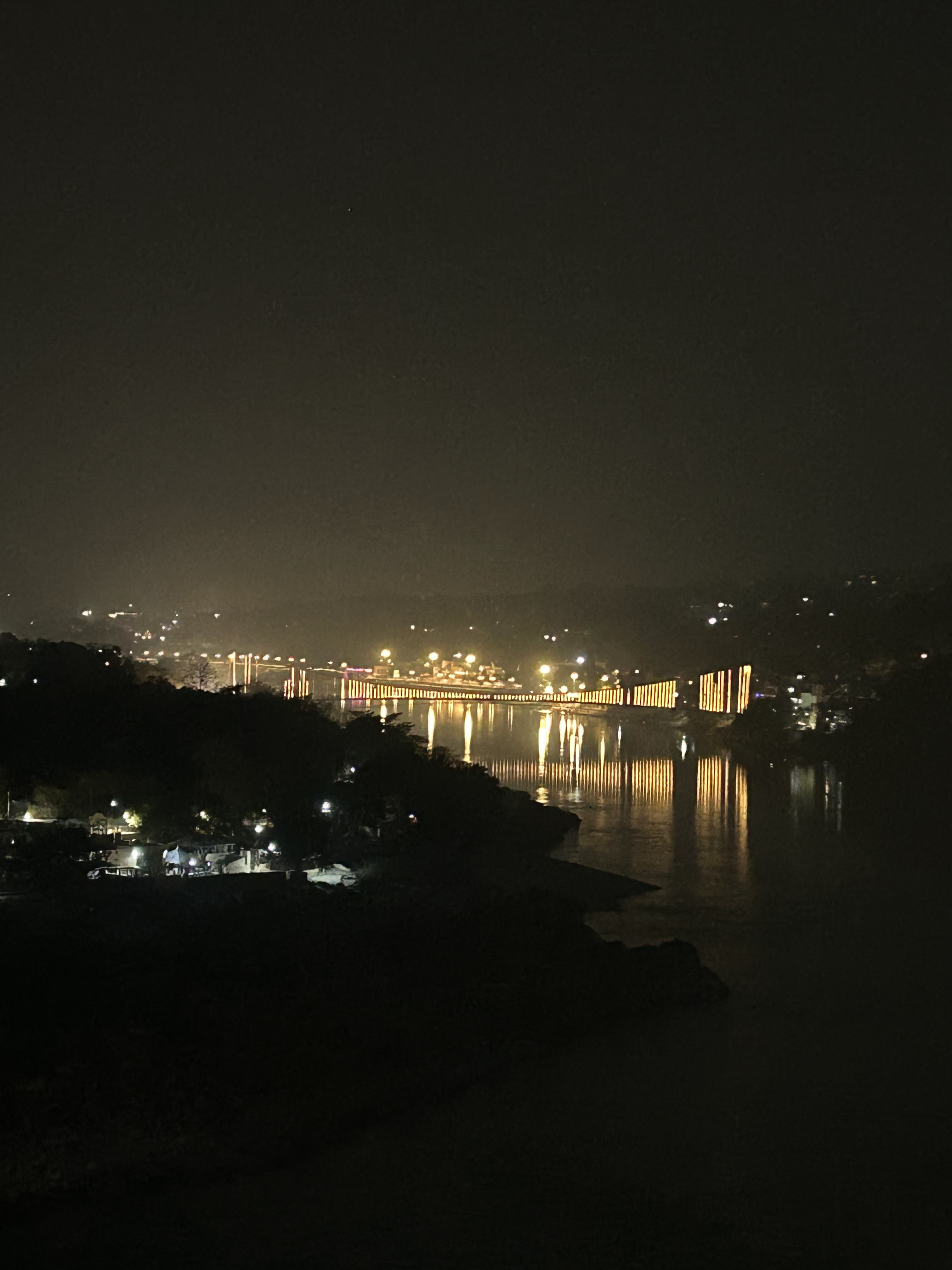
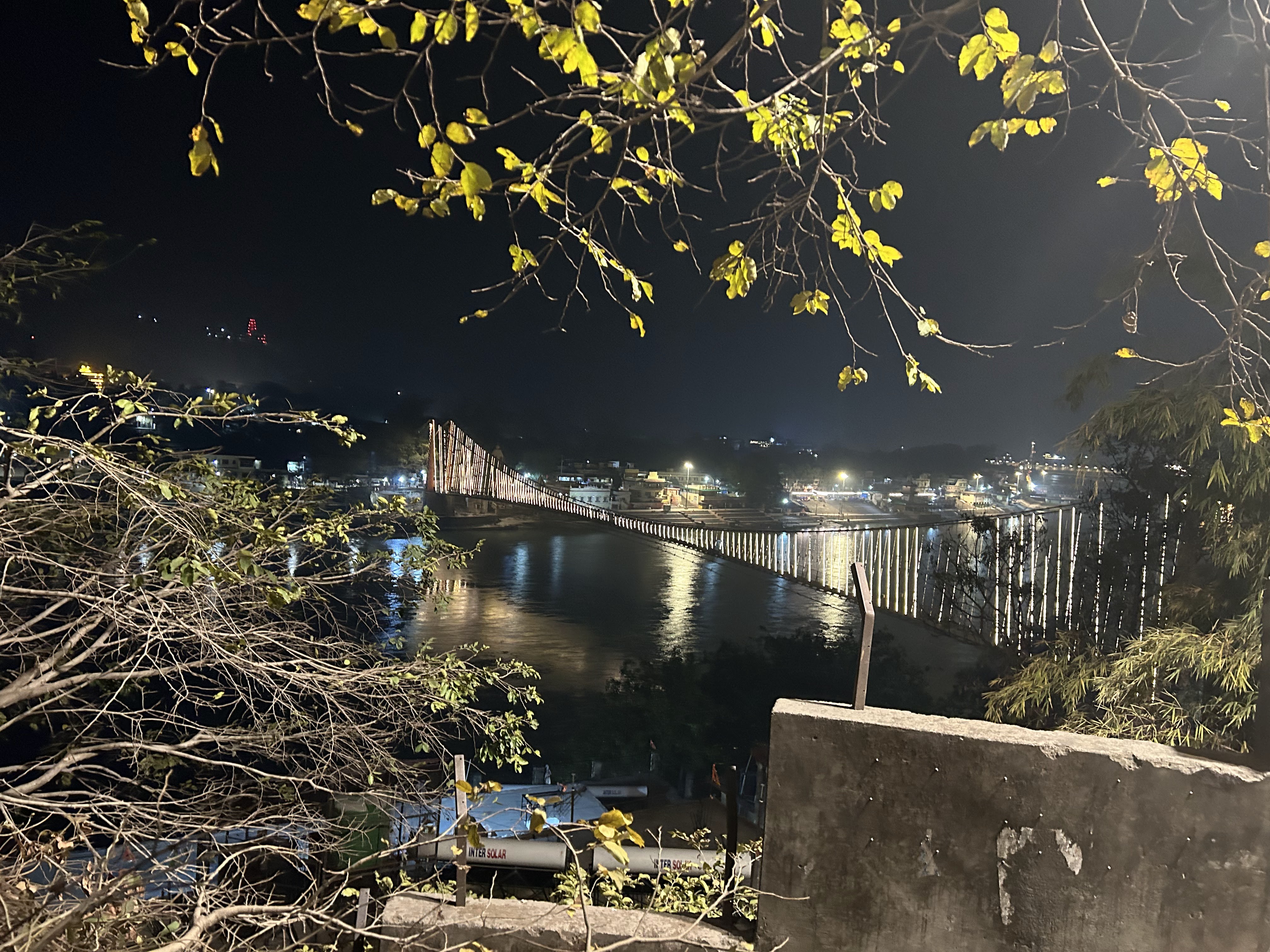
The next day we planned to trek and visit the Neelkanth Mahadev temple which is a sacred and famous temple surrounded by three valleys Manikoot, Brahmakoot and Vishnukoot. My other friend, a couple from the Netherlands, and a girl from the USA, whom my friend had met during the trek to Brahmatal Lake, joined us. After a cup of Kulhad chai, we proceeded to trek the 12 km stretch of steep and green hills to reach the temple. As the temple can be reached via road, it was crowded with devotees from all over. We decided to get back via the shared cab as it was pretty late and we were hungry.
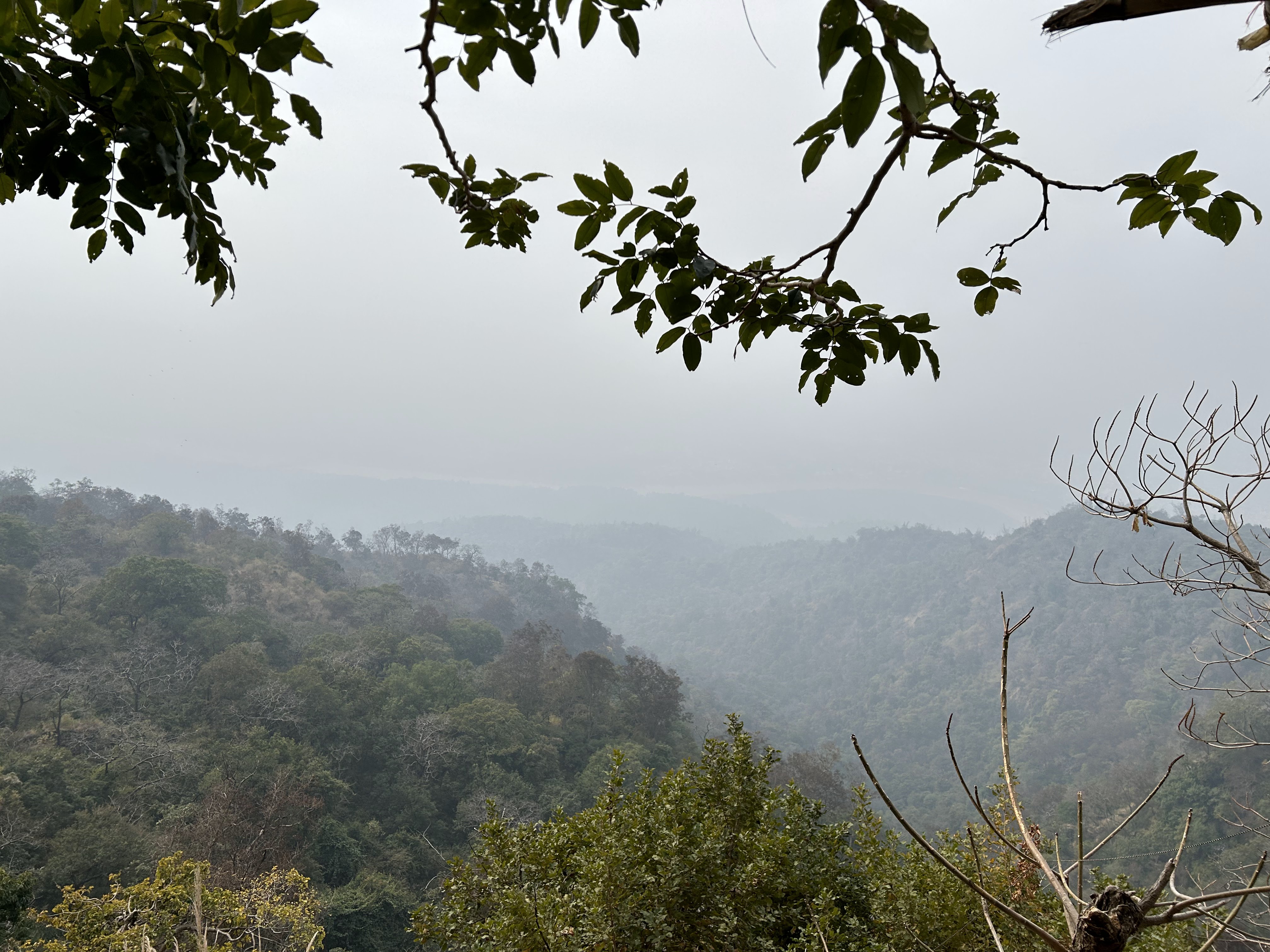
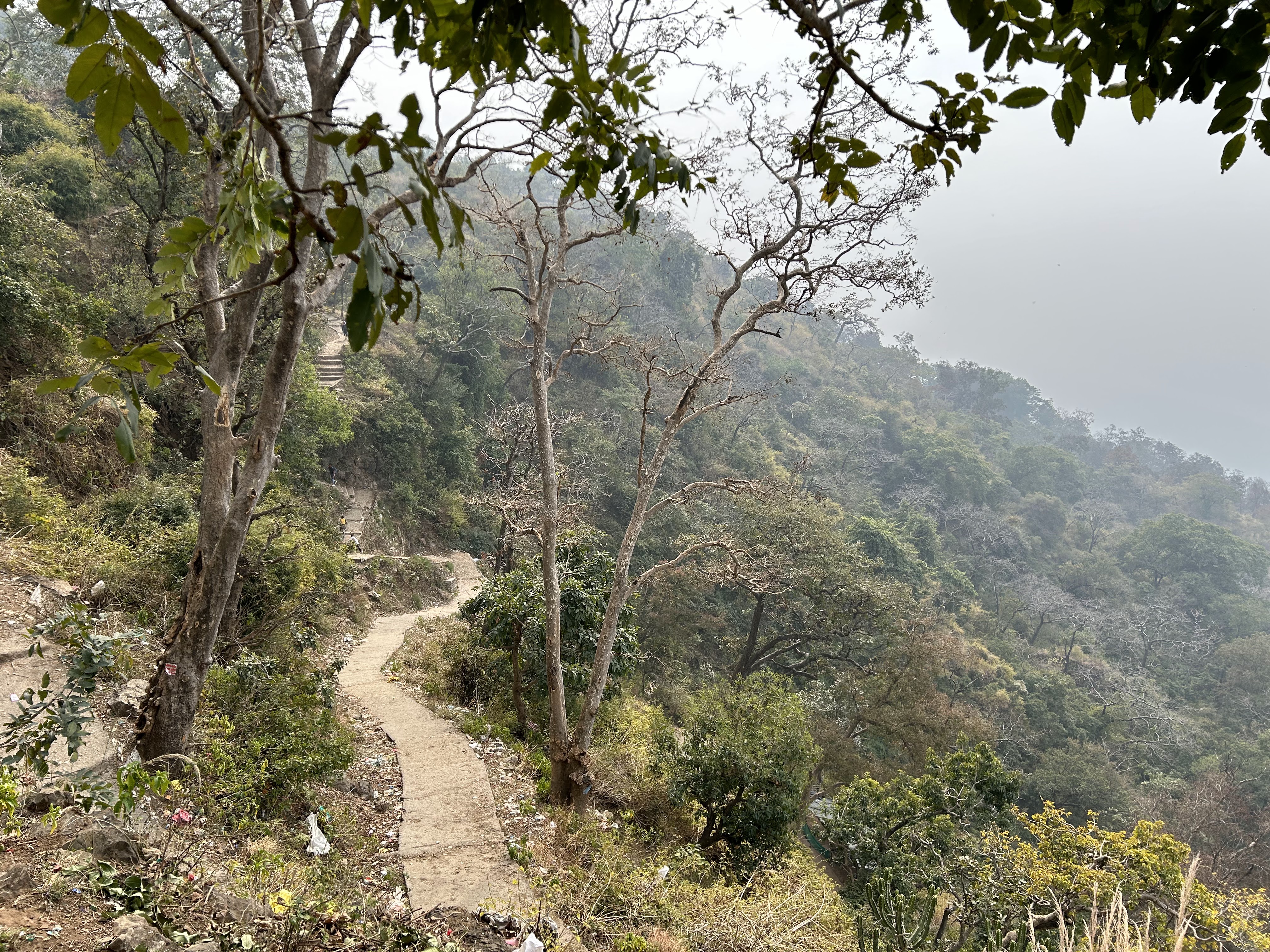
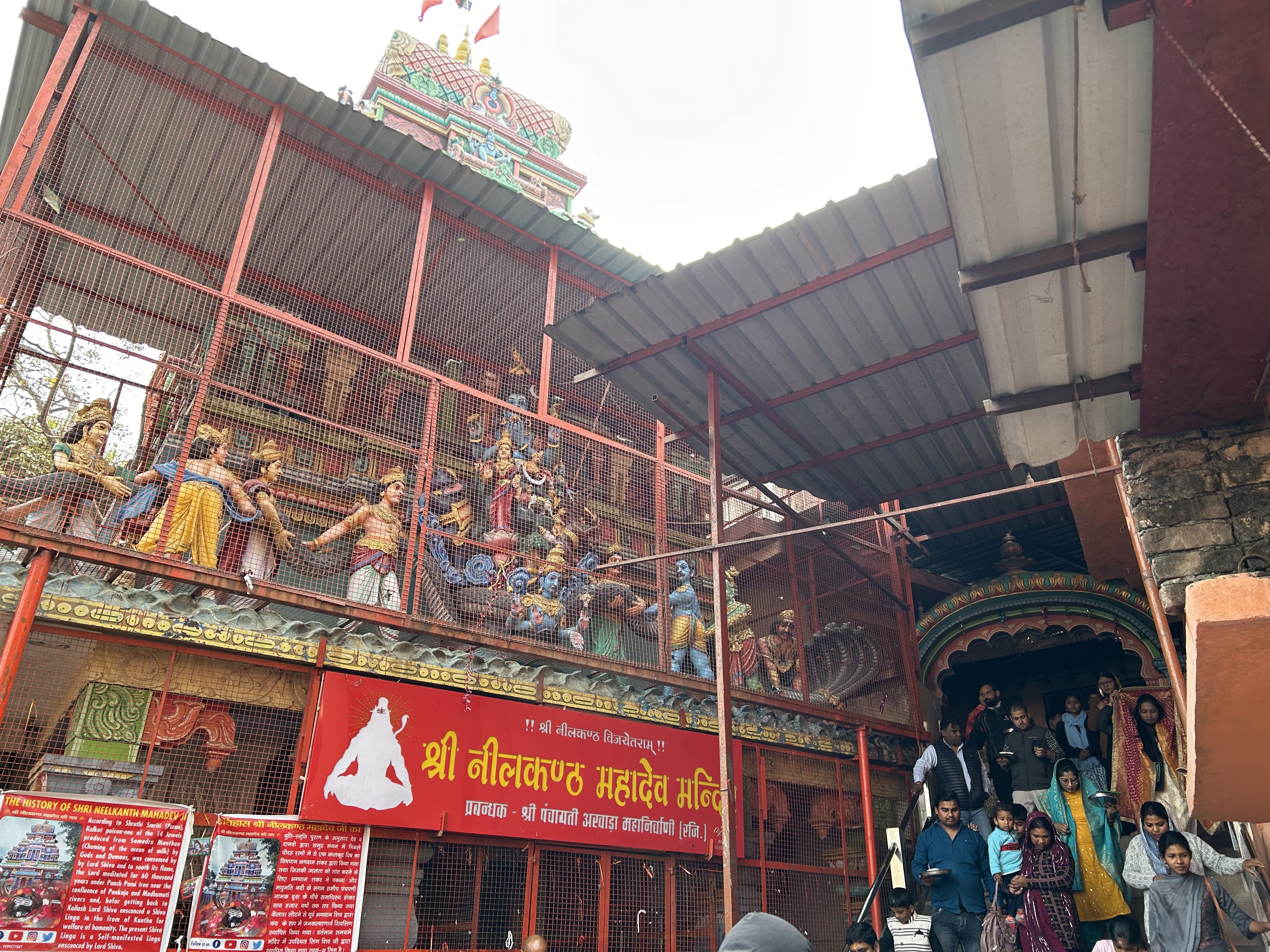
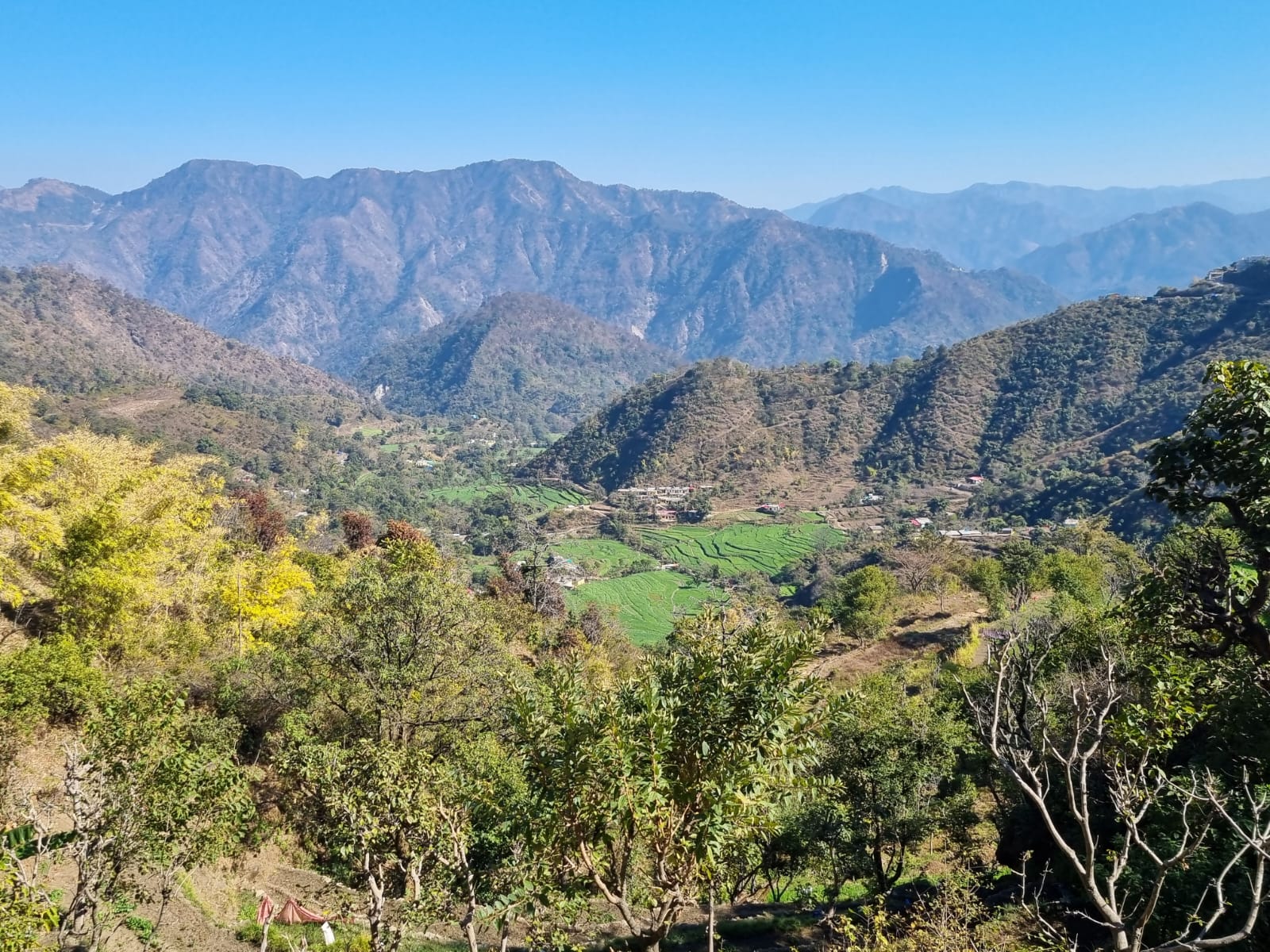
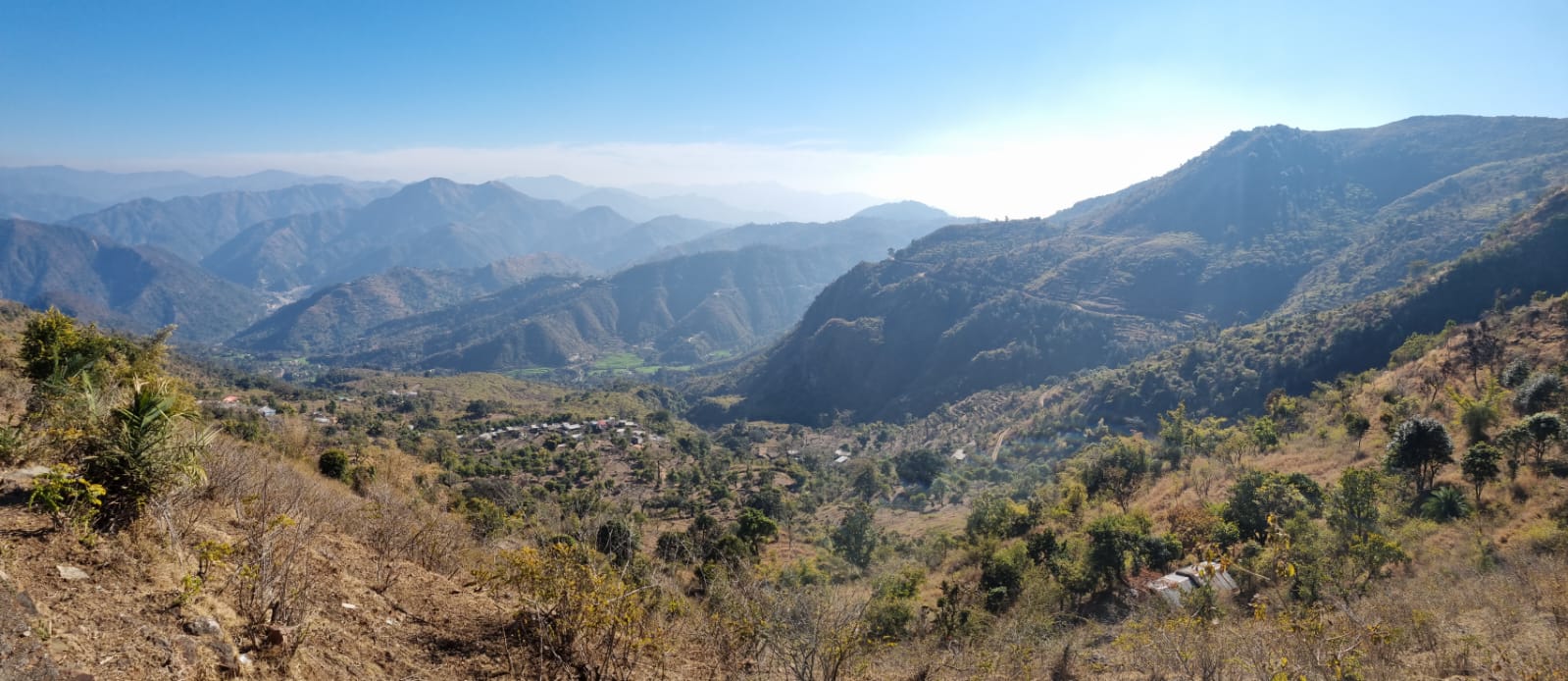

Tat cafe called us back for another picturesque evening and tasty food after a tiring trek. For the remainder of the evening, we engaged in discussions about the cultural, social, and geographical distinctions of our countries. It was a rare opportunity to interact with individuals keen on exploring our nation and comprehending our culture, making it an enriching experience to exchange insights and perspectives. We eagerly embraced the chance to learn from them while also offering them insights into our own culture. Coincidentally, it happened to be my friend’s birthday, so we returned to the hostel and decided to celebrate the occasion by cutting a cake. It was a simple yet heartfelt way to make the day even more memorable.
Fun fact – I wasn’t on vacation and hence, the next day I was expected to work from home (or hostel). Starting our day with a dip in the evening, we met a Sadhu on the banks of the river who sat there smoking some “holy leaves” from his chillum. We had the opportunity to engage in a conversation with him and learn about his life in Rishikesh, where he has resided for the past 25 years dedicating his time to worshipping Lord Shiva. We travelled to Triveni Ghat which is one of the largest ghats of Rishikesh for the Ganga Aarti. The place was overcrowded with devotees who sang bhajans and prayed during the aarti. The aarti was an amazing sight to behold and capable of evoking spirituality in anyone who beheld it. People sang and danced to the bhajan after the arti making it more special.
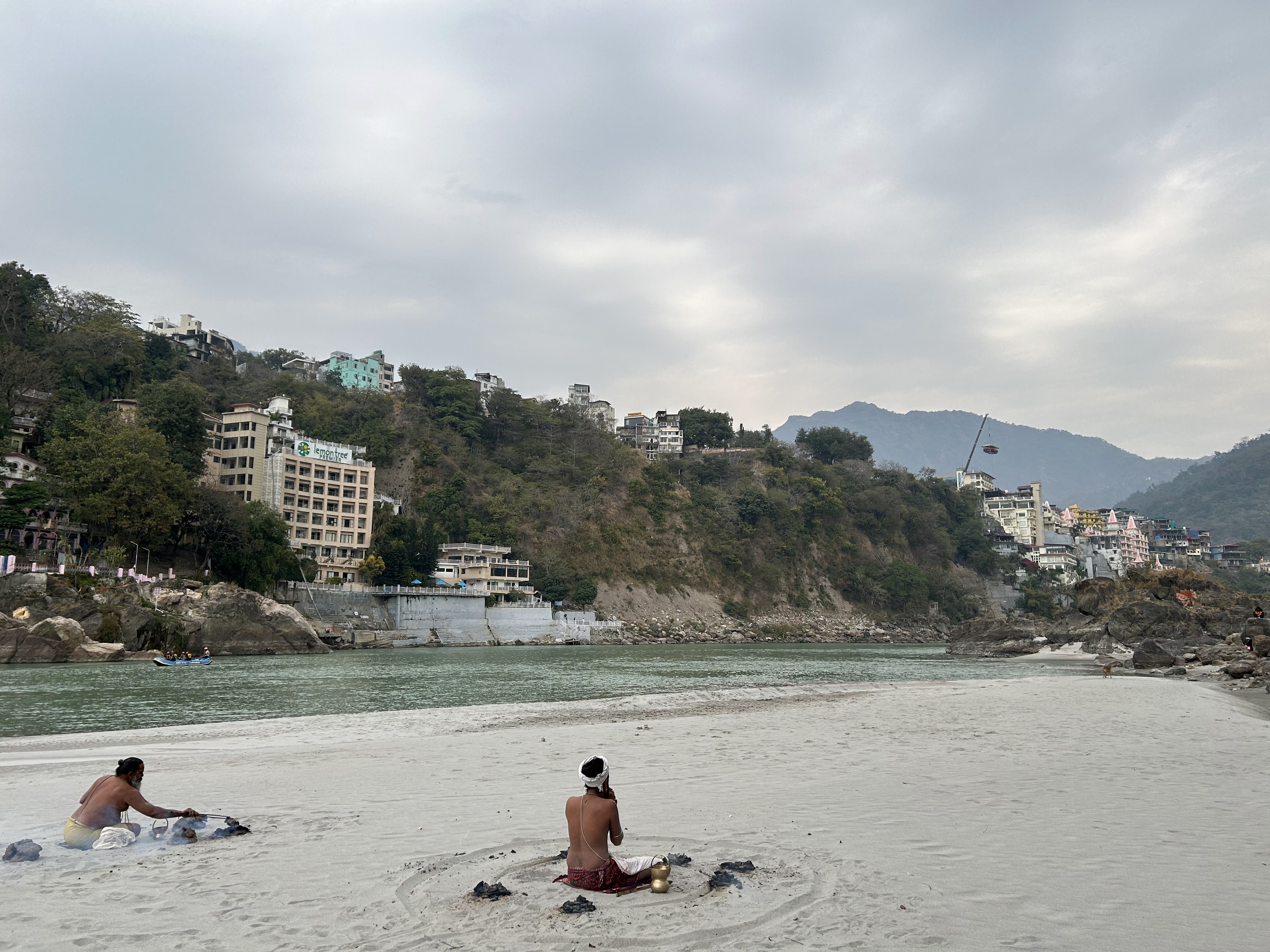
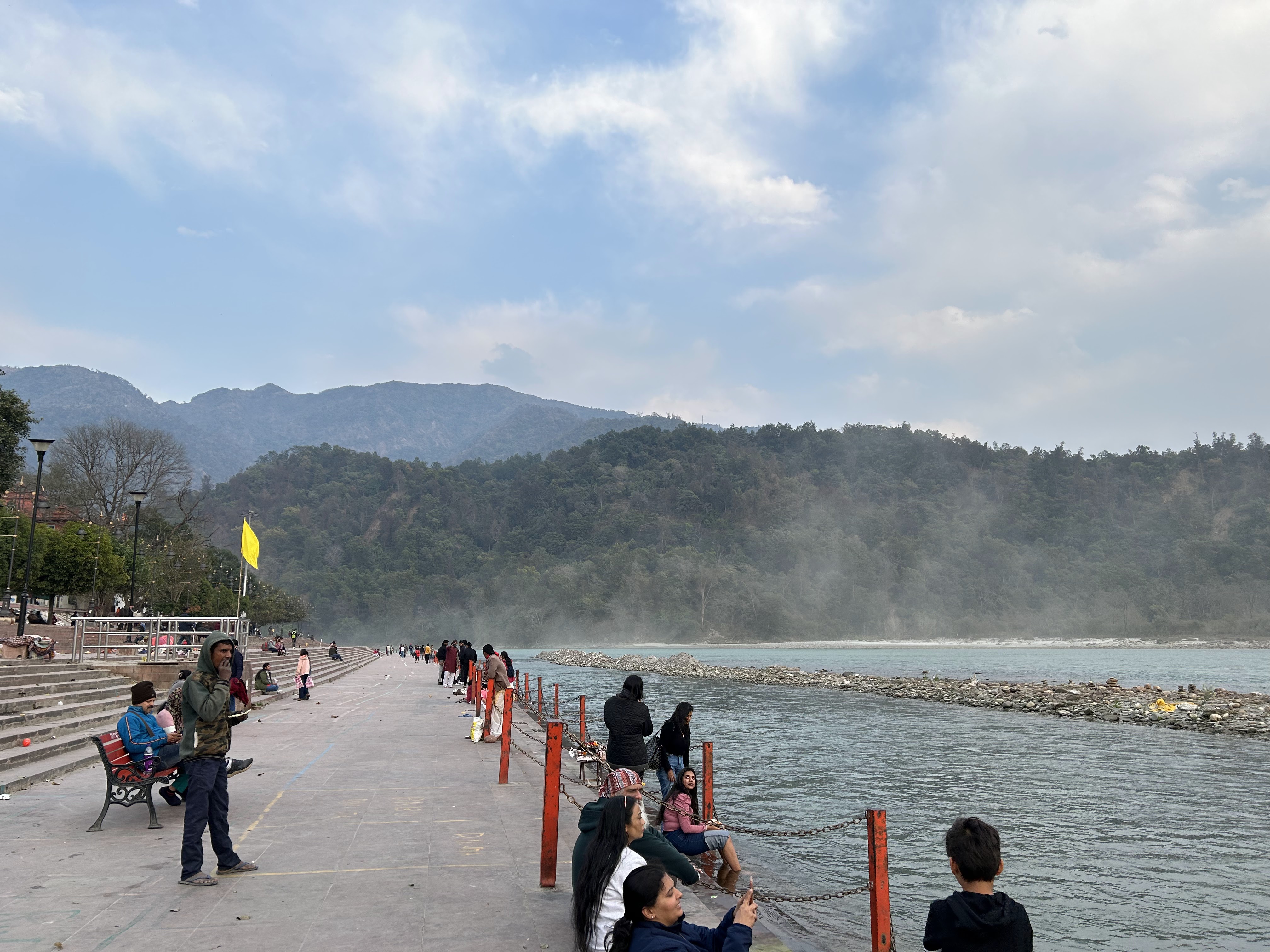
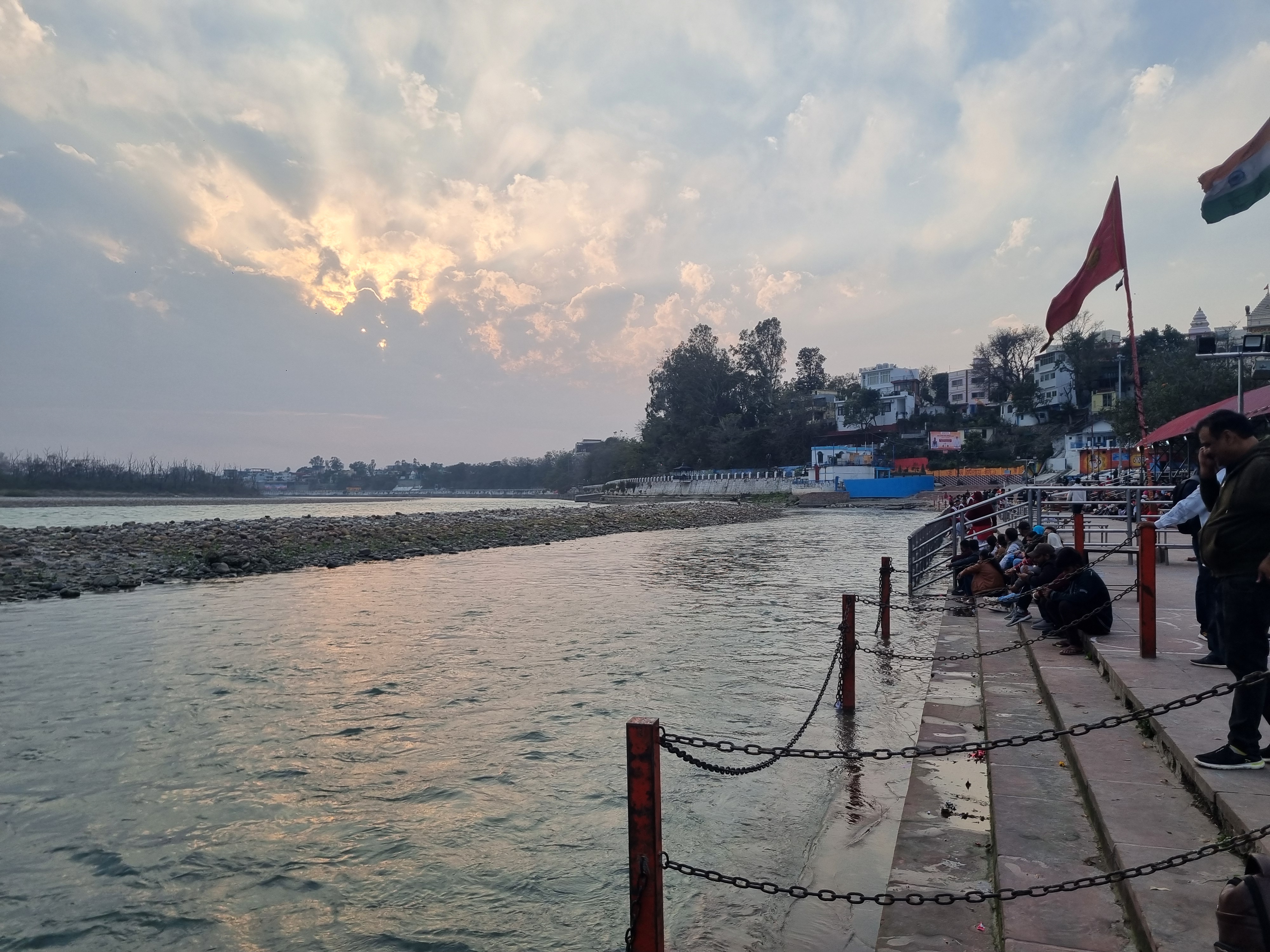
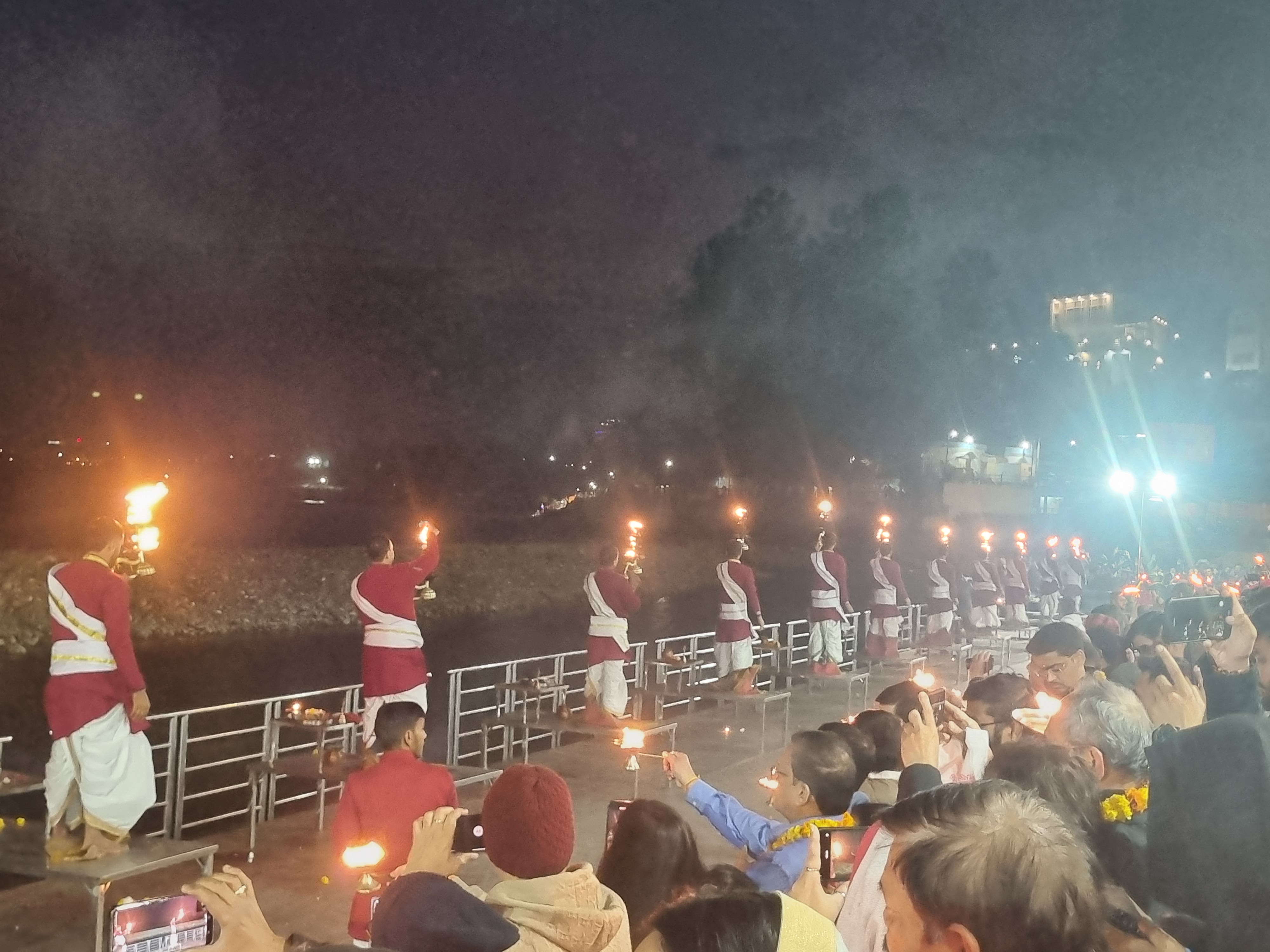

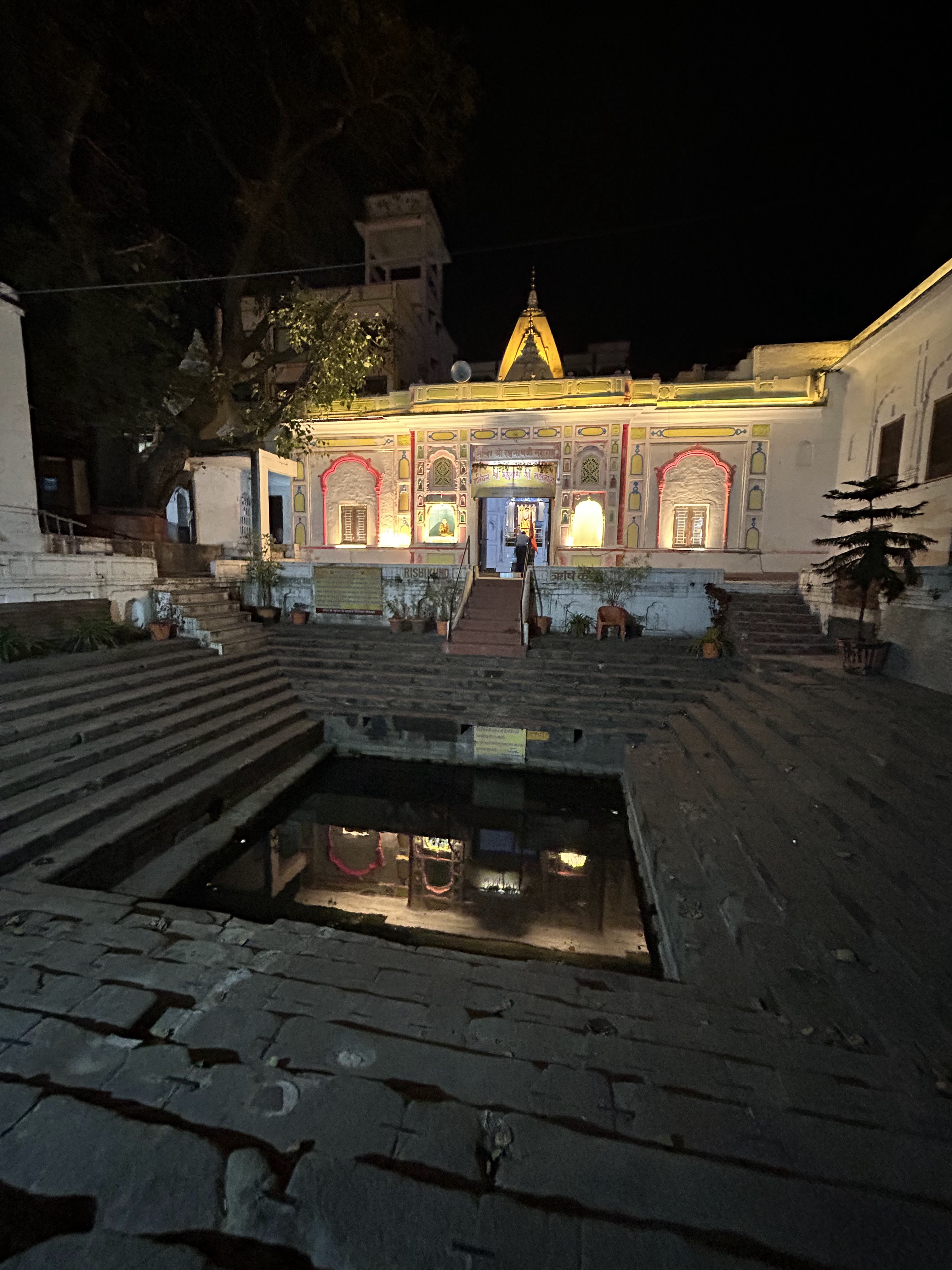
To switch up our work surroundings, we headed to Laxman Jhoola and stopped by the Om Freedom cafe. It was another lovely cafe situated by the riverbank, offering a view of Laxman Jhoola and prominent temples like Tera Manzil. We spent the rest of the afternoon working from there.
The most thrilling day had arrived: we were gearing up for a 25-kilometer white river rafting expedition along the Ganges, encountering around 13 rapids along the way. We were picked up by a nearby travel agent who drove us to the starting point of our rafting journey. Leaving our belongings in the vehicle, we were equipped with helmets, jackets, and oars. After a brief 20-minute briefing, we embarked on our adventure accompanied by two instructors. It was amazing to rush through the rapids and we also passed through some by sitting on the edge of the raft or in the water by holding the raft. We had the chance to jump out of the raft and experience the cool waters of the Ganga on our way. We reached the end within 2.5 hours and then headed back to our hostel. In the afternoon, we visited the famous Tera Manzil or Tryambakeshwara temple. It is a 13-floor structure and each floor has many small temples dedicated to many Hindu gods and goddesses. Tera Manzil temple is not dedicated to any single deity, unlike other temples. The top floor of the temple offers a panoramic view of sunset over the mountains of Rishikesh.
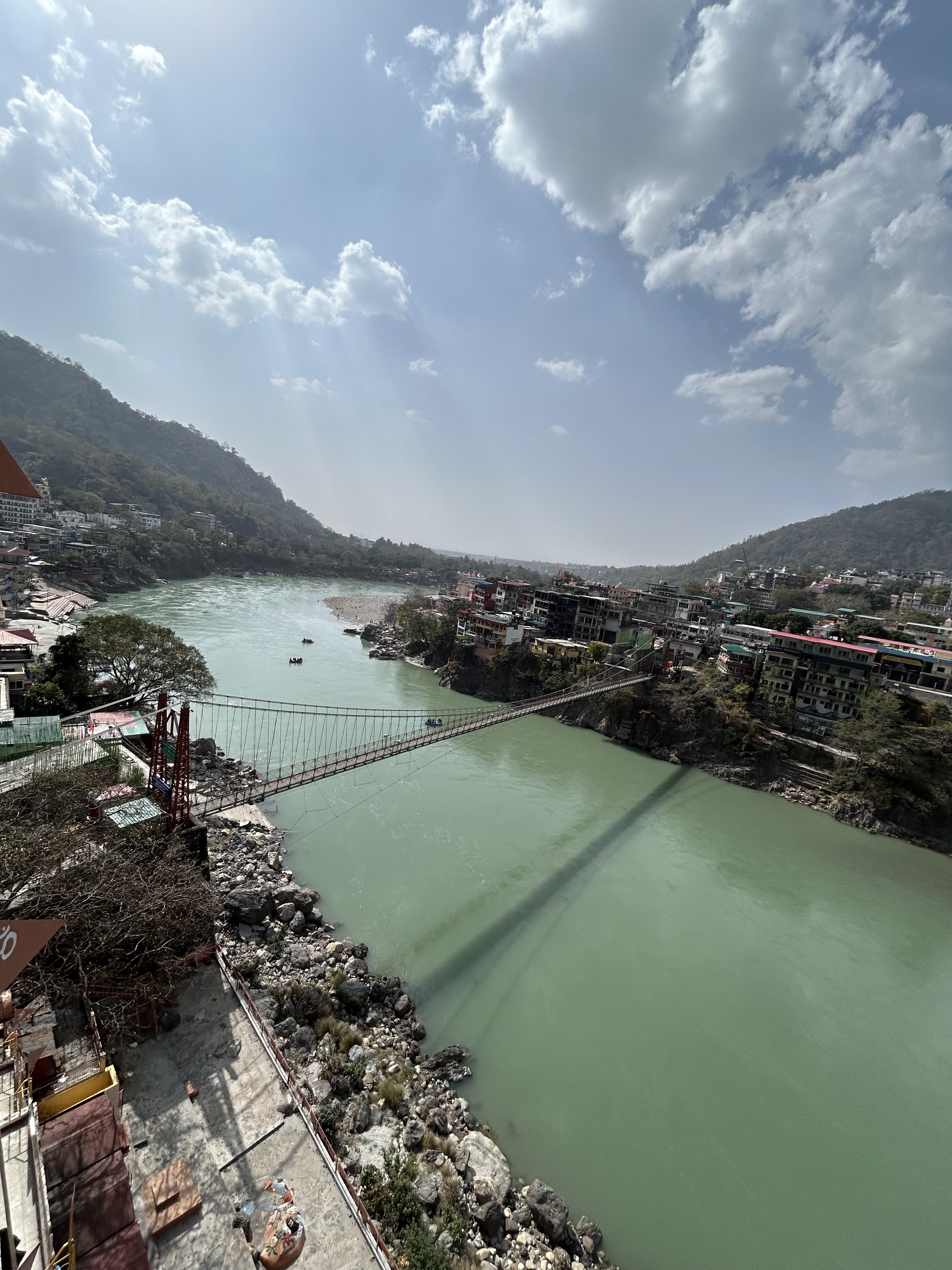
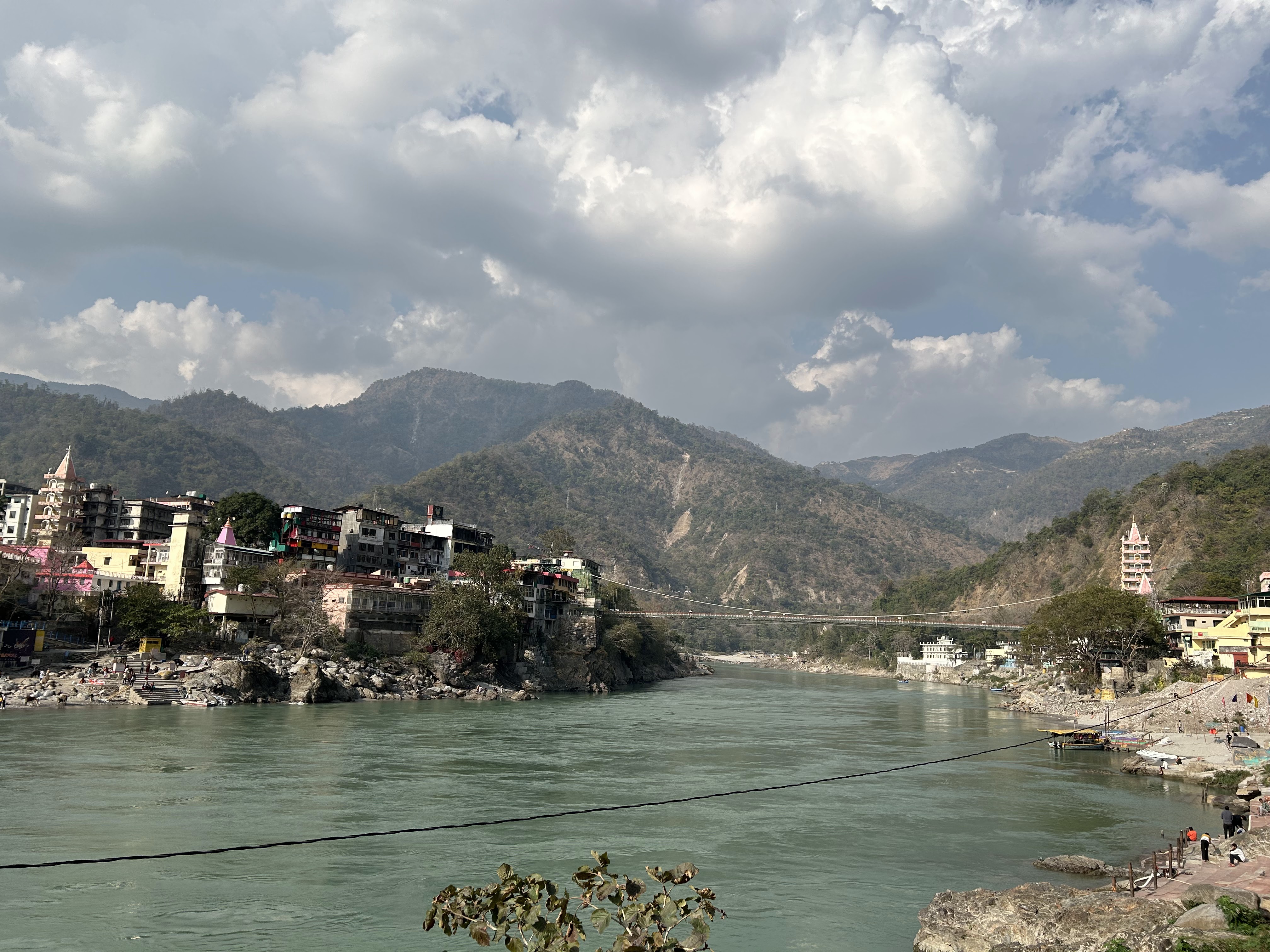
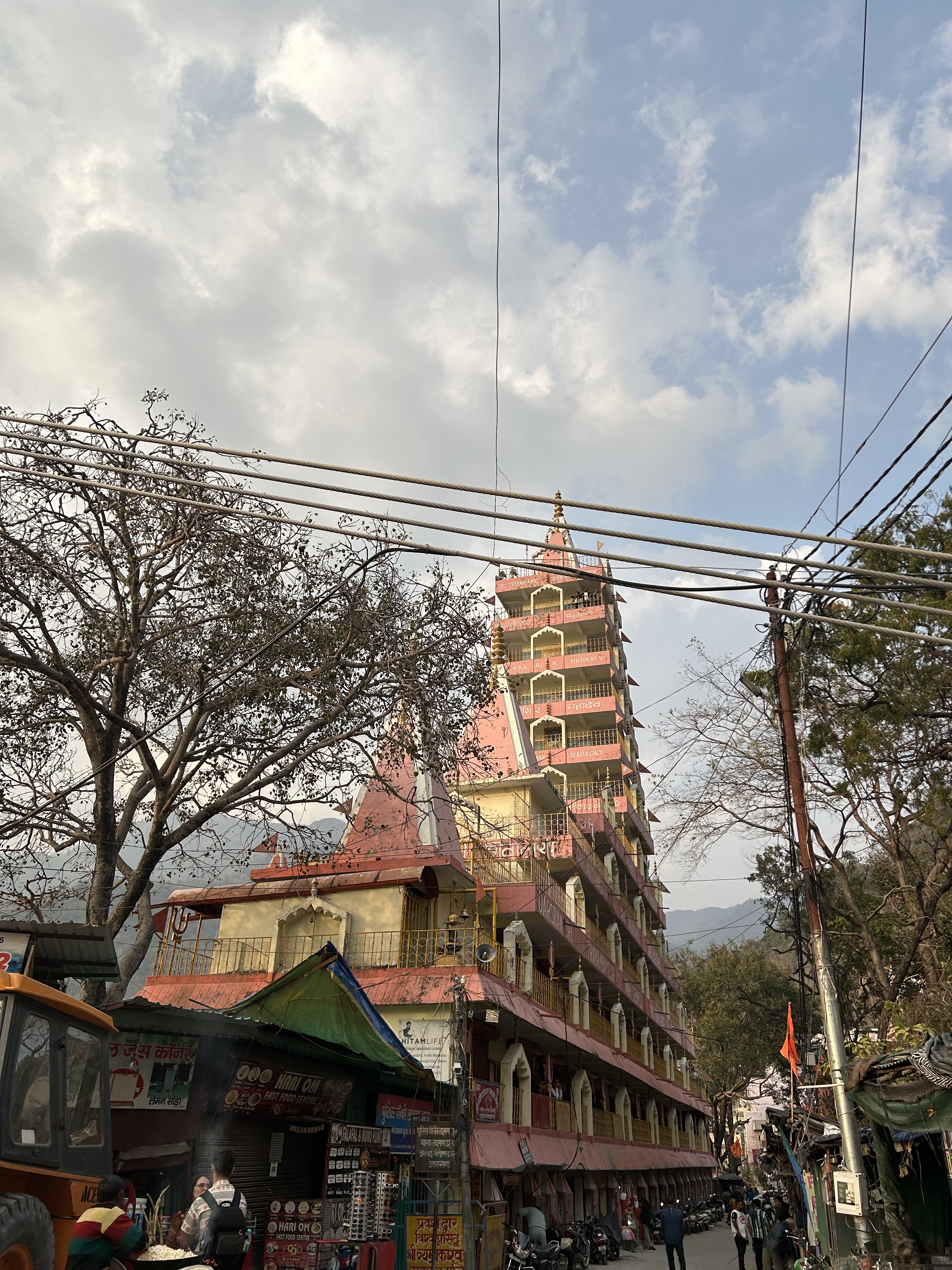

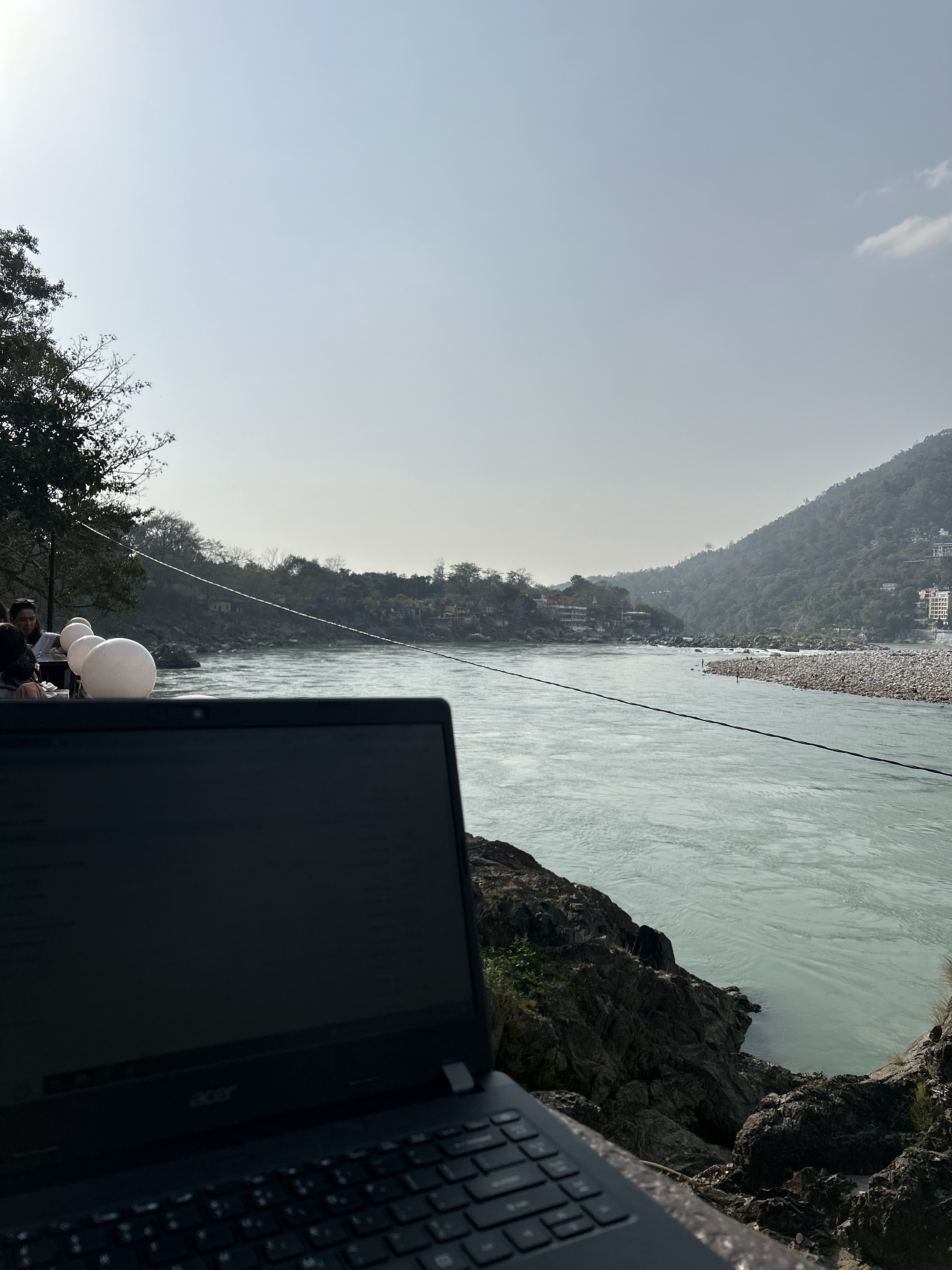
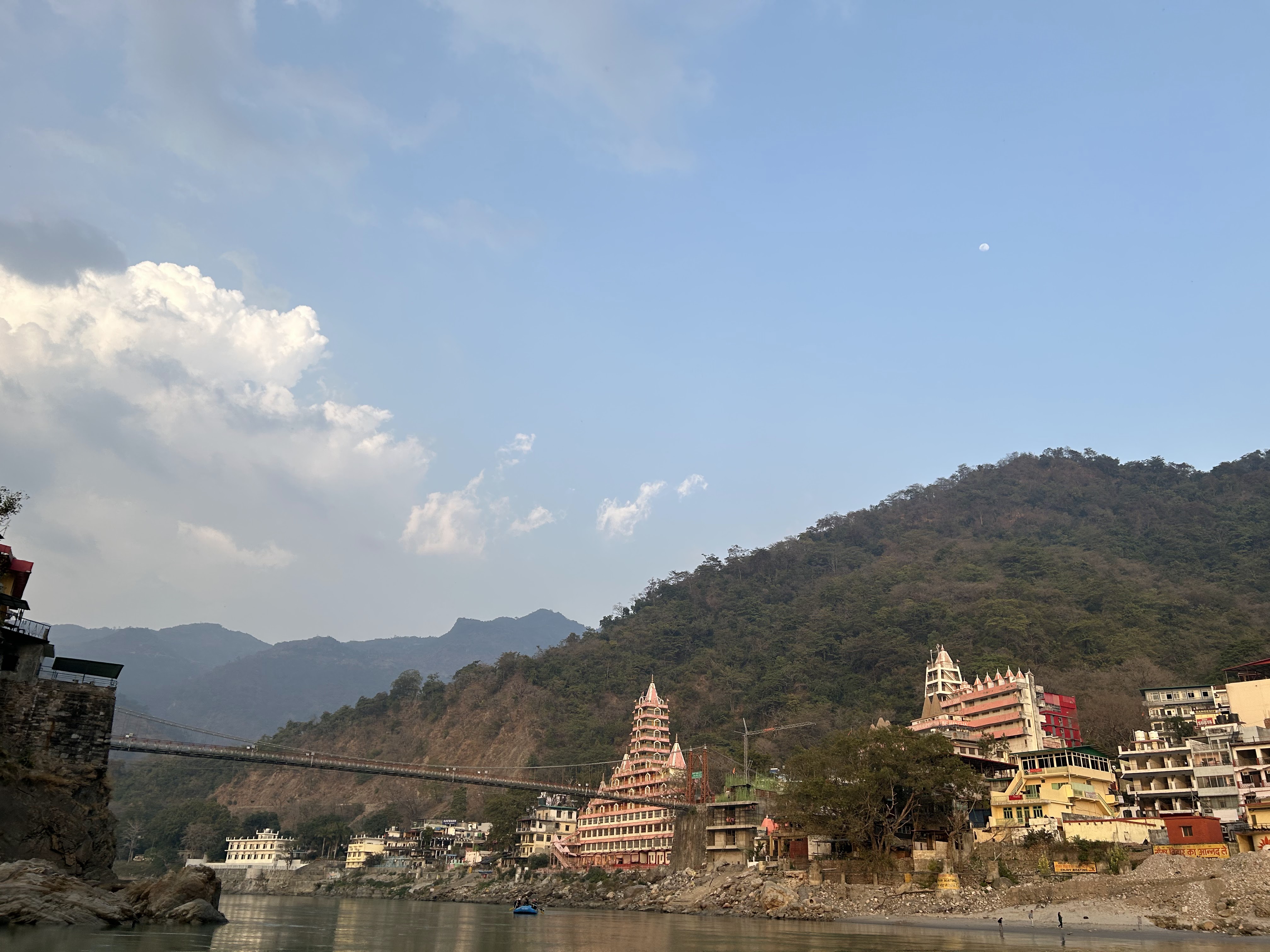
The next day was all about shopping on the streets of Rishikesh for clothes and other items. We spent the evening strolling through the riverbank and temples. We were supposed to catch a bus to Kasol, Himachal Pradesh which unfortunately got cancelled thus, pushing us to stay another day in Rishikesh.

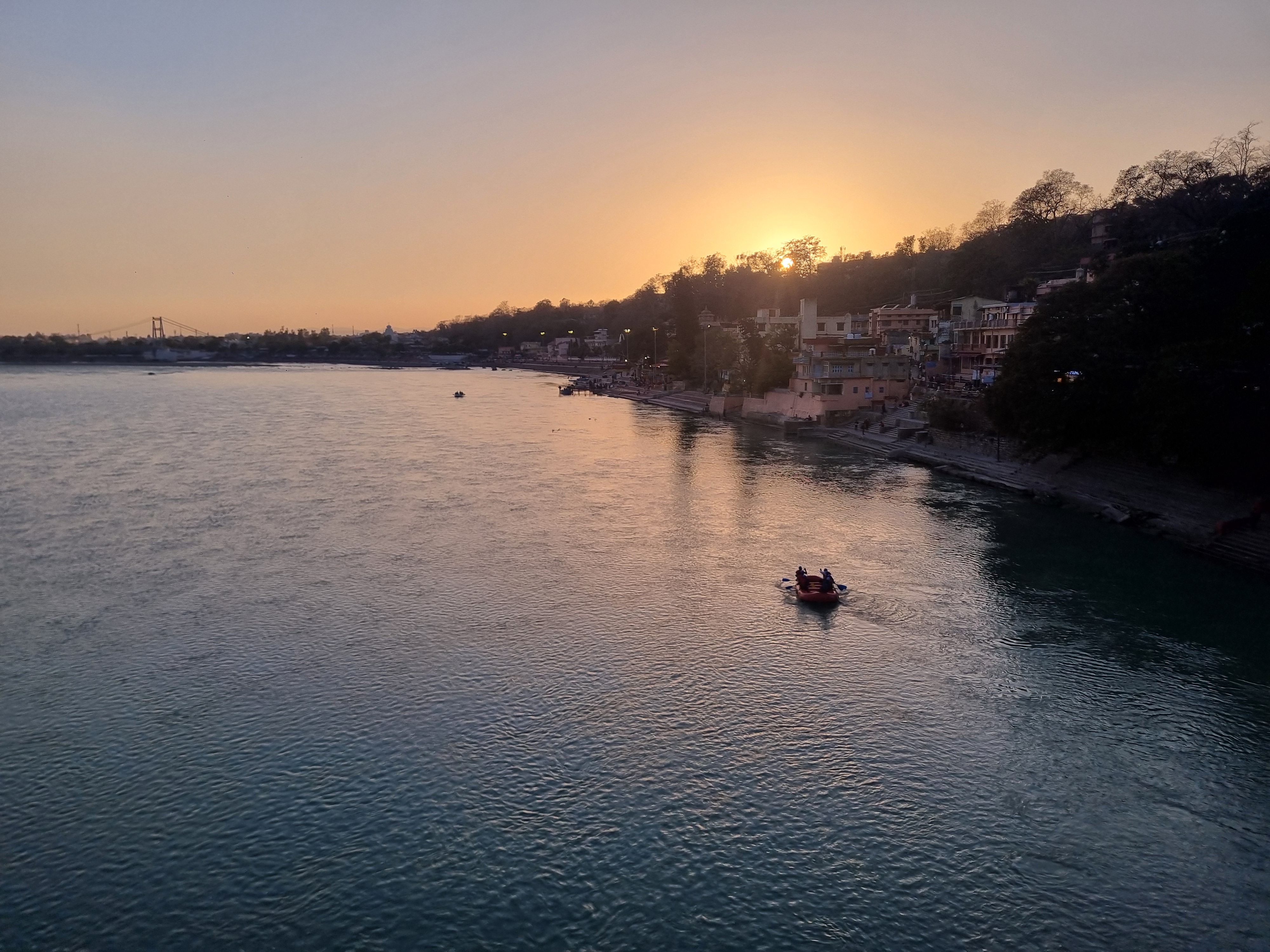
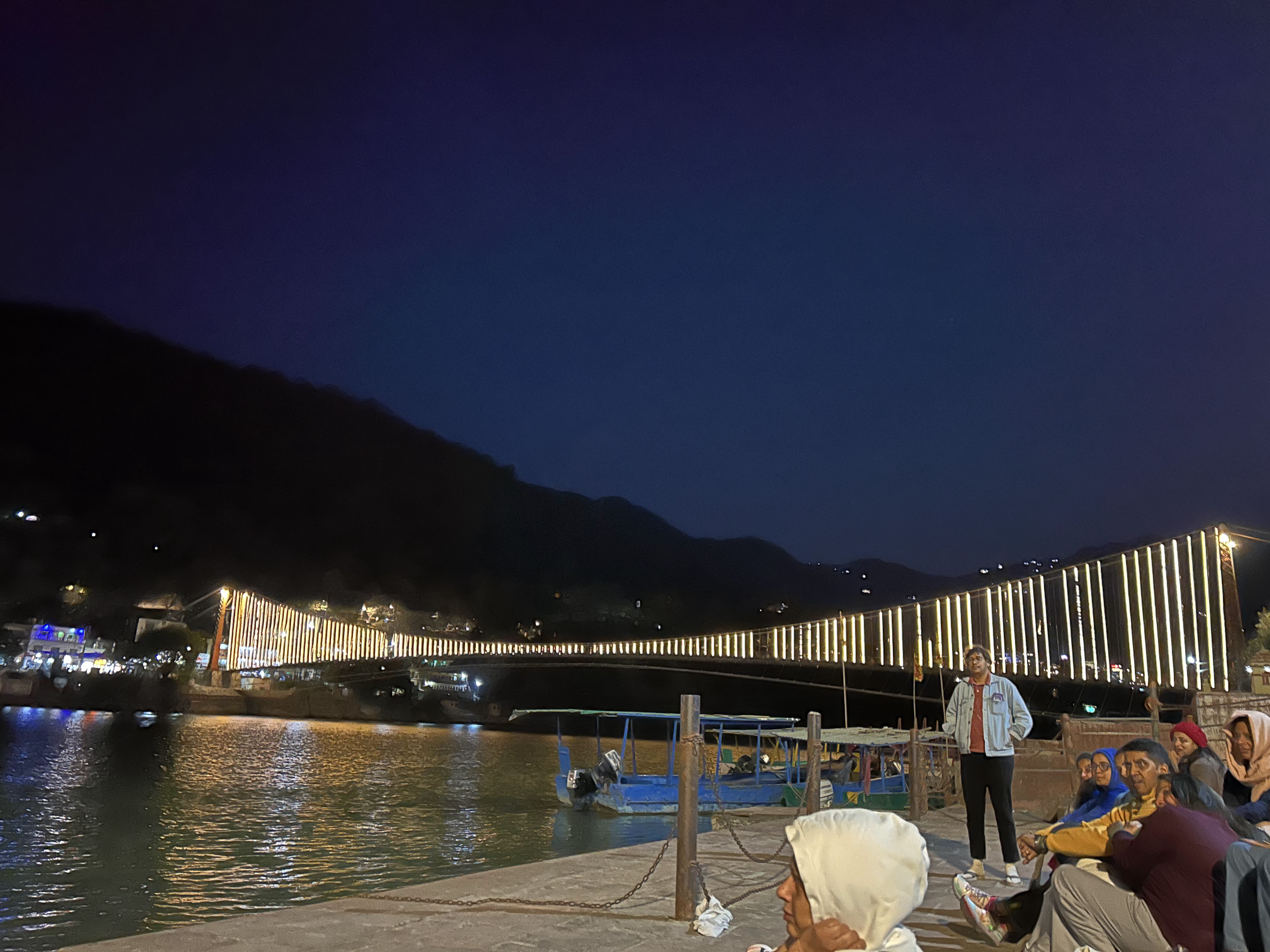
As we had an extra day, we decided to visit the sacred city of Haridwar which is 20 km away. It is situated along the banks of the Ganges River and is considered one of the seven holiest places in Hinduism. People visit Haridwar to take part in religious rituals and ceremonies, such as bathing in the Ganges and attending the evening Ganga Aarti. We visited the Mansa Devi temple situated atop Bilwa Parvat hill. Accessible by a cable car ride or a trek up the hill, the temple offers panoramic views of Haridwar and the surrounding areas. As expected, the temple was crowded with devotees who offered their prayers to the goddess Mansa Devi.
We then visited Har ki Pauri, a ghat where we could see thousands of pilgrims take baths in the holy river of Ganga. We came back to Rishikesh through the shared auto and we were once again welcomed by the news that our only bus to Kasol was cancelled again. It felt like Rishikesh didn’t want us to go. However, we found a bus belonging to the Himachal Road Trasport Corporation or HRTC from Haridwar to Kasol. We packed up early and left back to Haridwar with our baggage where we caught our 3X2 non-recline seated bus. Following a long and sleepless night, we reached Kasol in the morning.
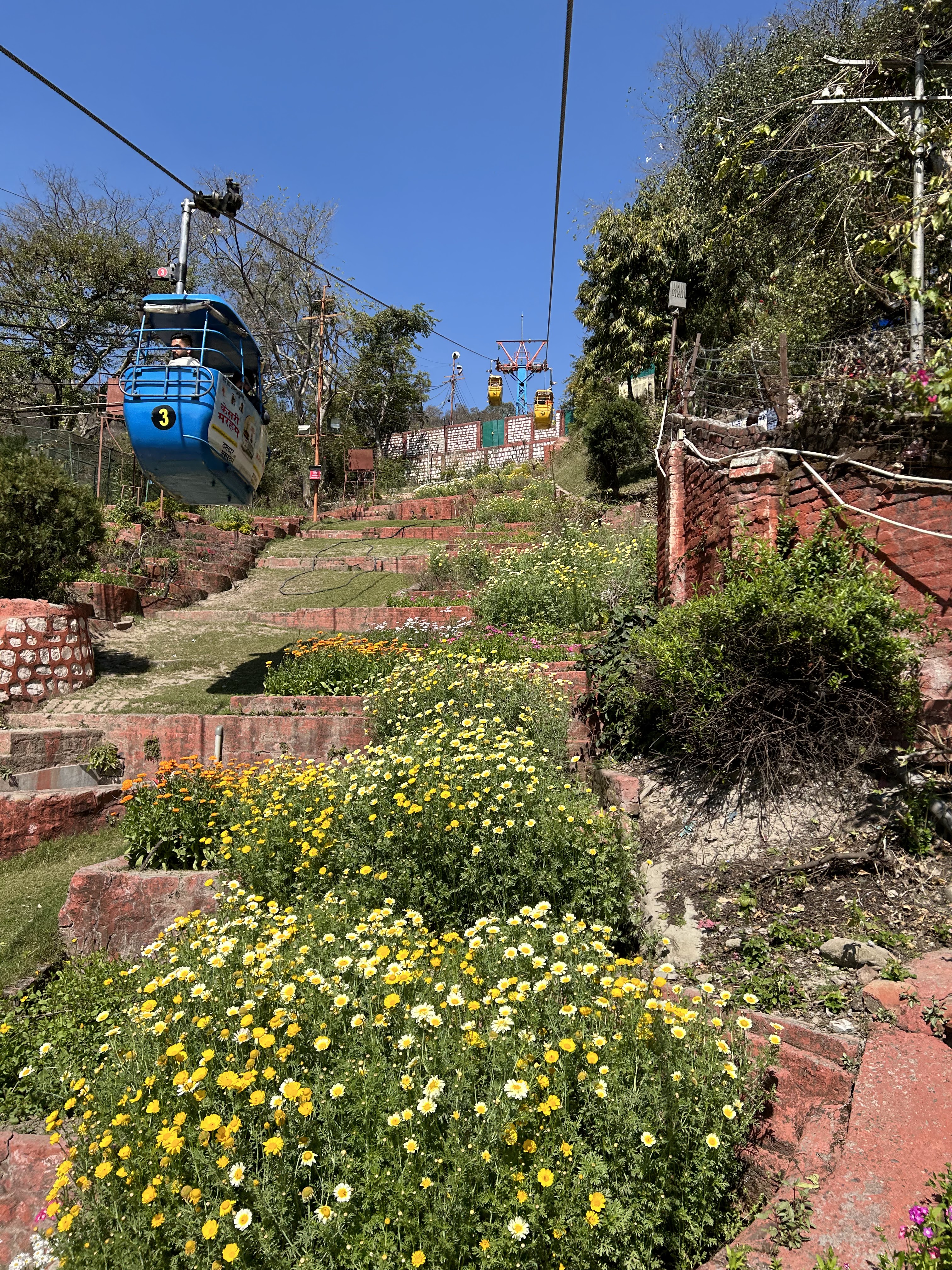
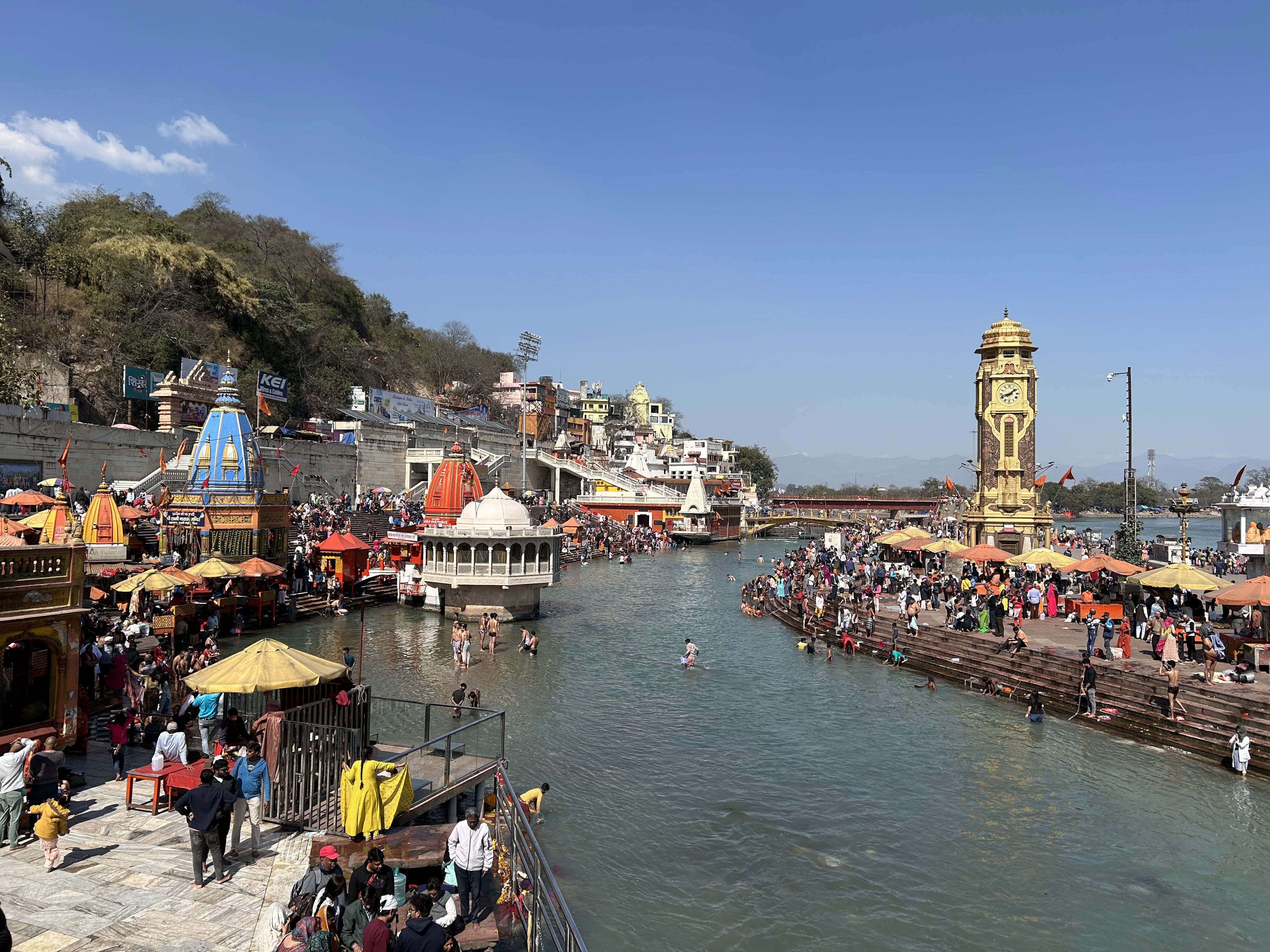
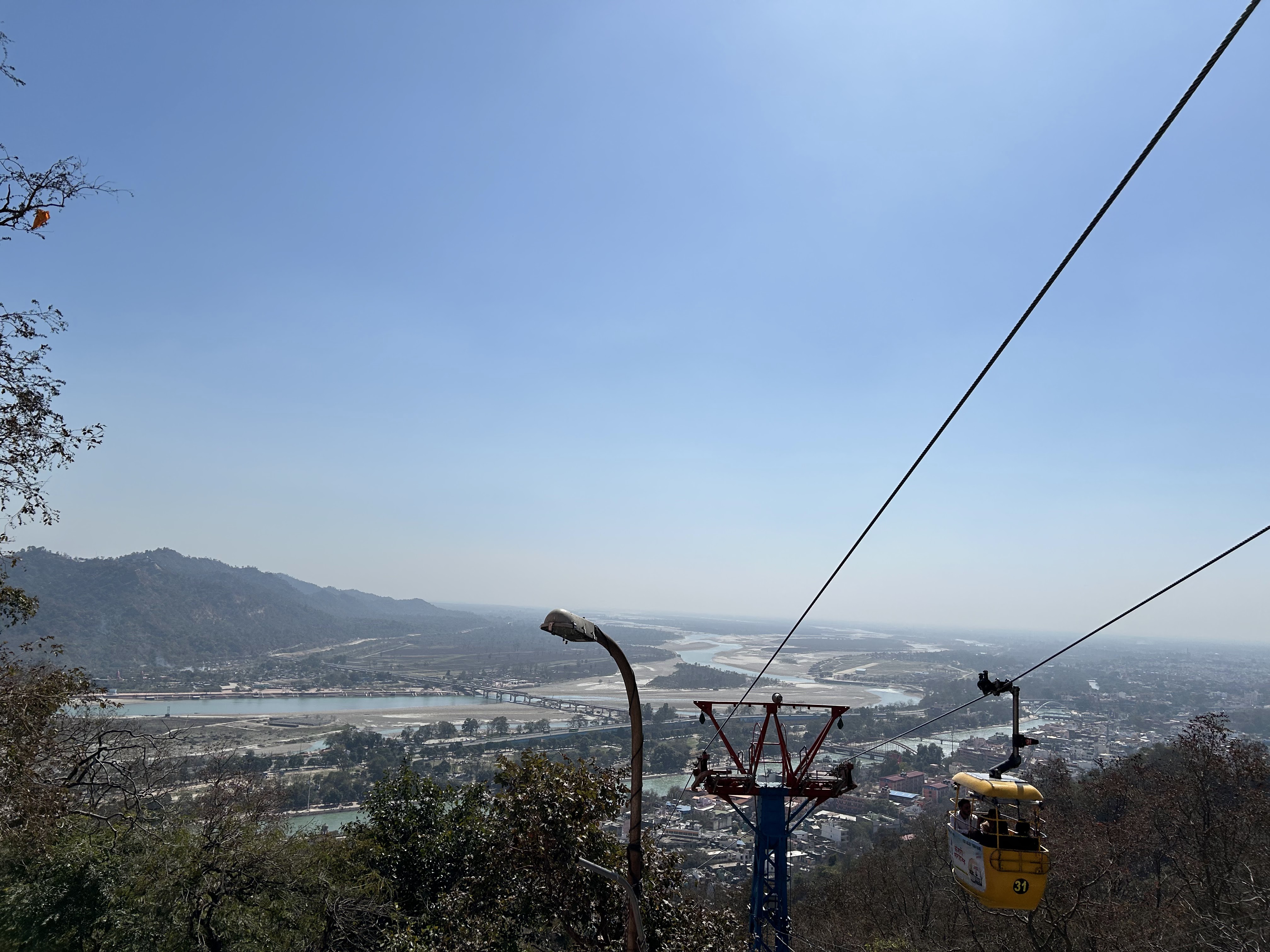
We disembarked from the bus and hurried to the nearby Evergreen cafe in Kasol’s main market. The weather was chilly, so we sought refuge in a room with a tandoor or heater fueled by burning wood. From the cafe window, we could catch glimpses of the snow-capped mountains in the distance. After filling up on some Israeli food, we freshened up in the cafe and stored our extra luggage in the nearby cloakroom cum travel agency. Upon equipping ourselves with winter clothes, we walked to the nearby village called Chalal while enjoying the scenic beauty of the Parvati Valley along the way. Following a stroll through the village, we settled by the Parvati River, taking in the scenic views of the nearby mountains and relishing the soothing sounds of the flowing river. Nearby cafes filled the air with trance music, adding to the tranquil atmosphere.
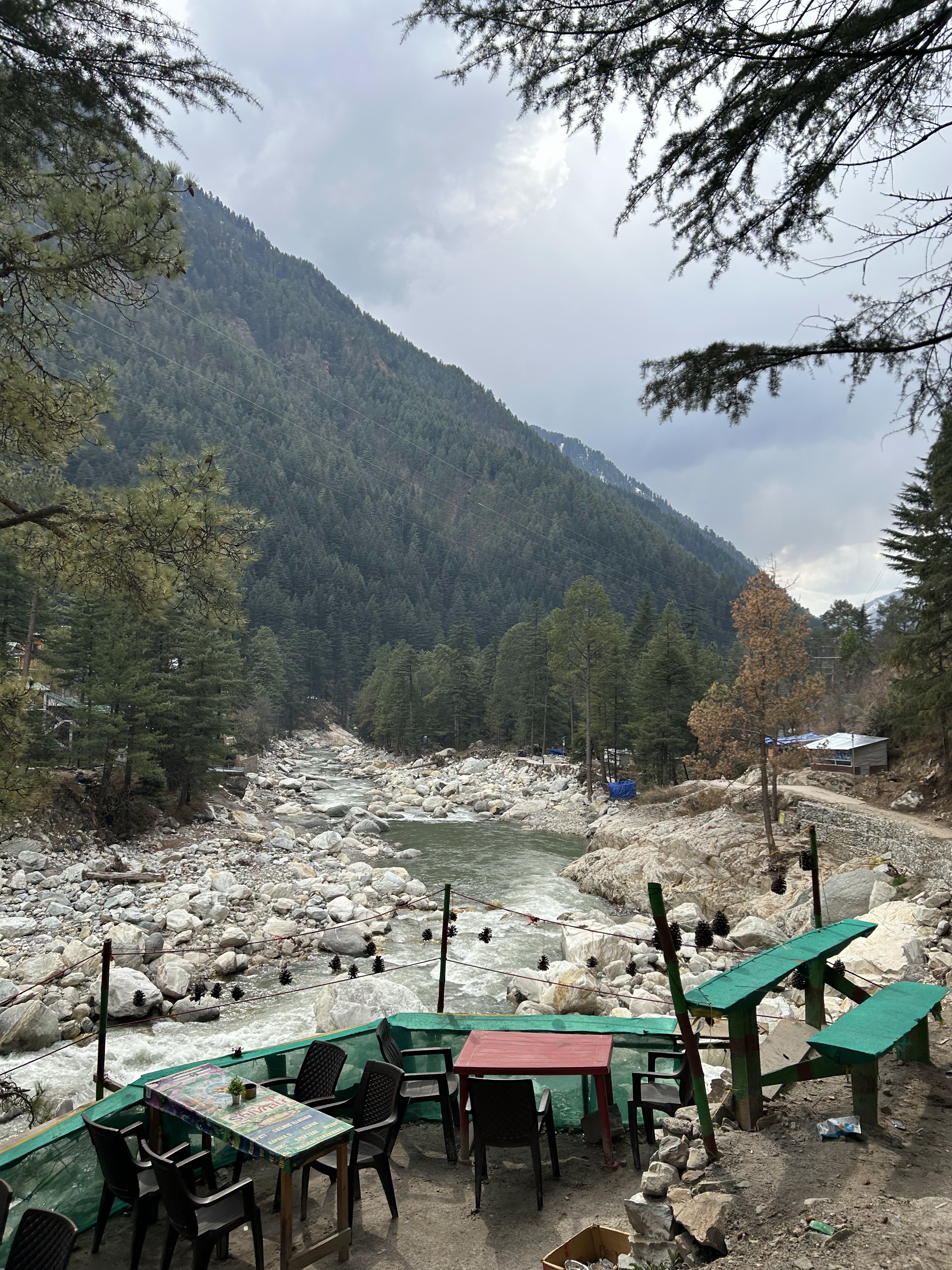
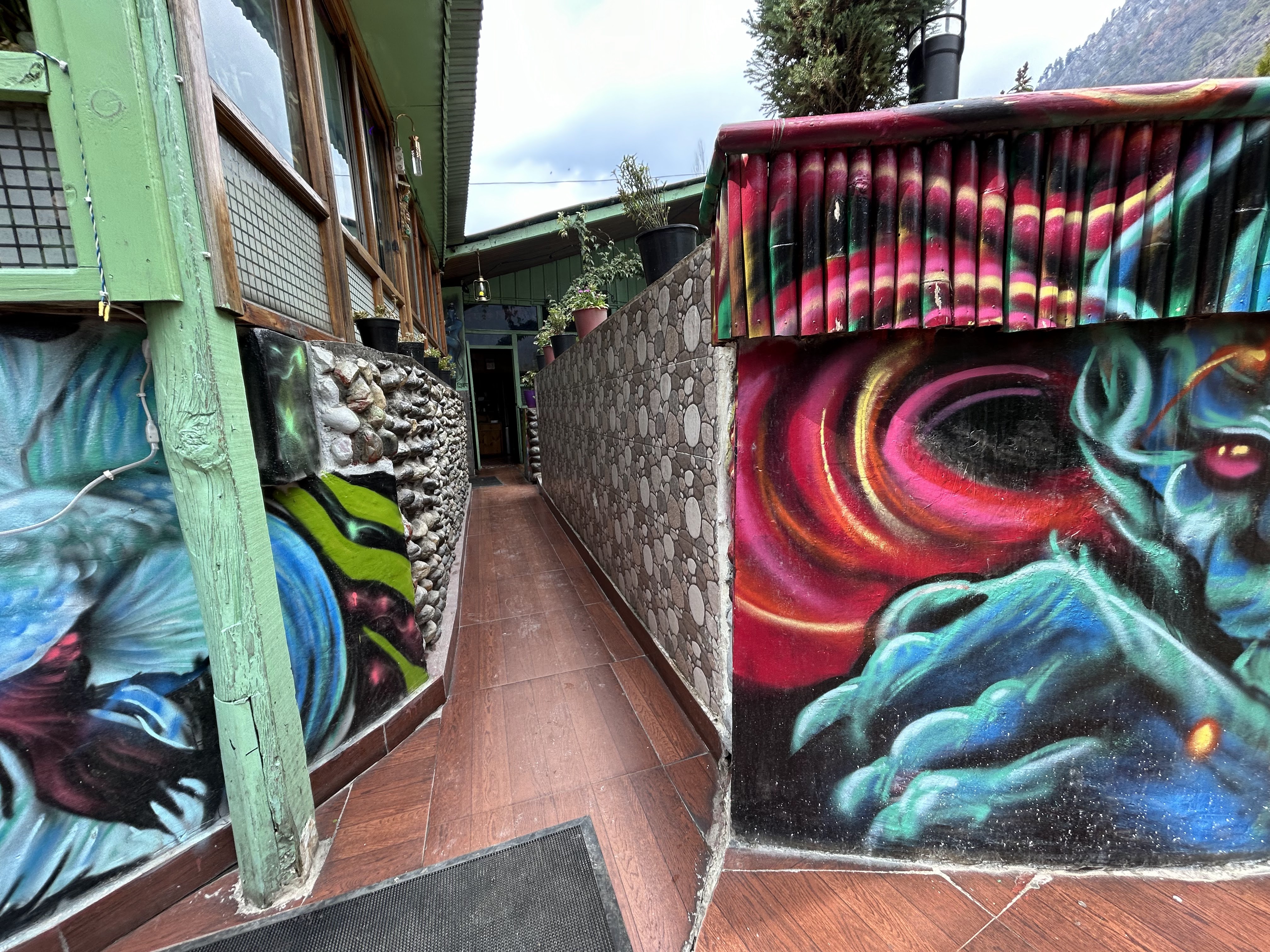
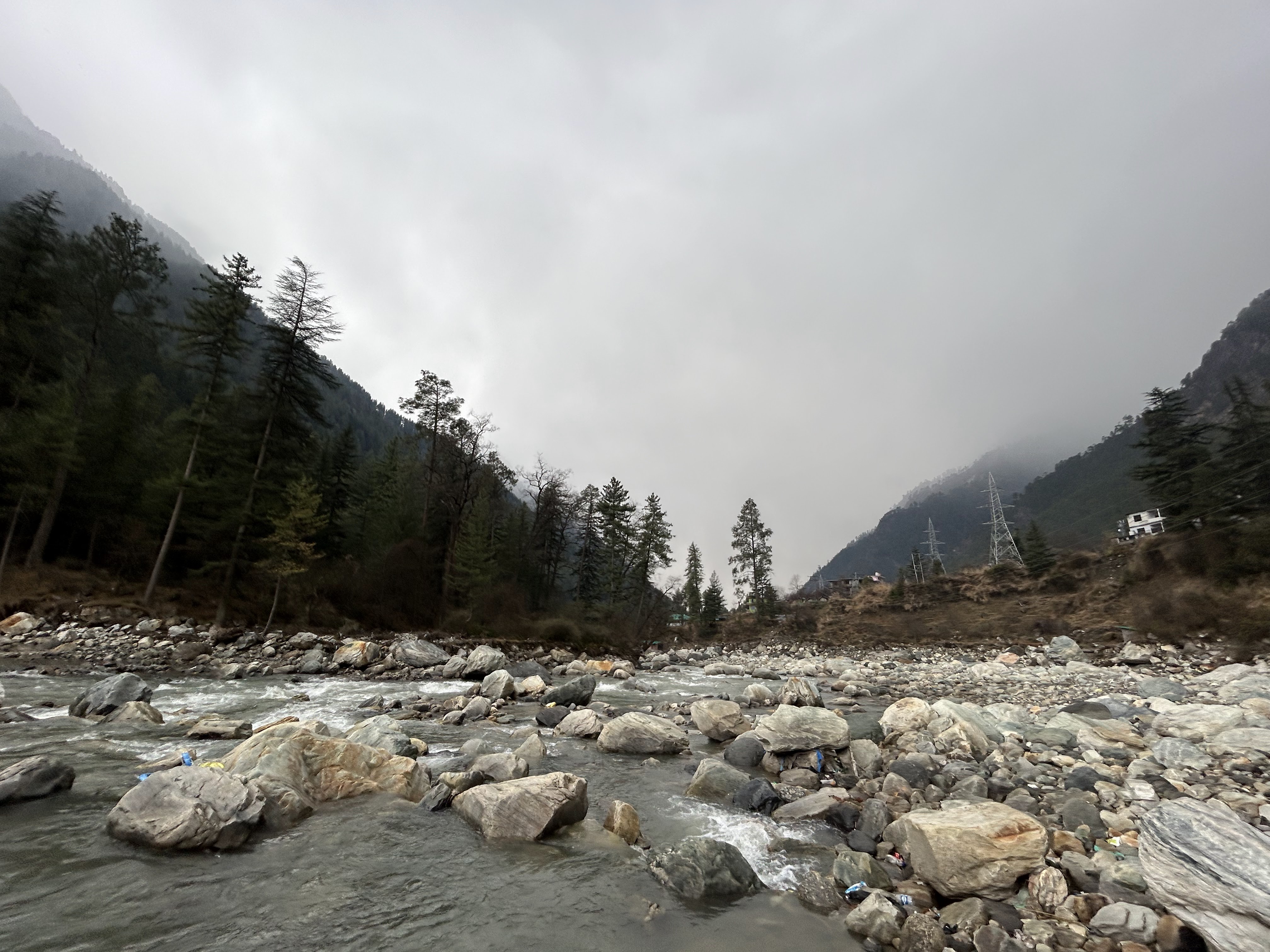
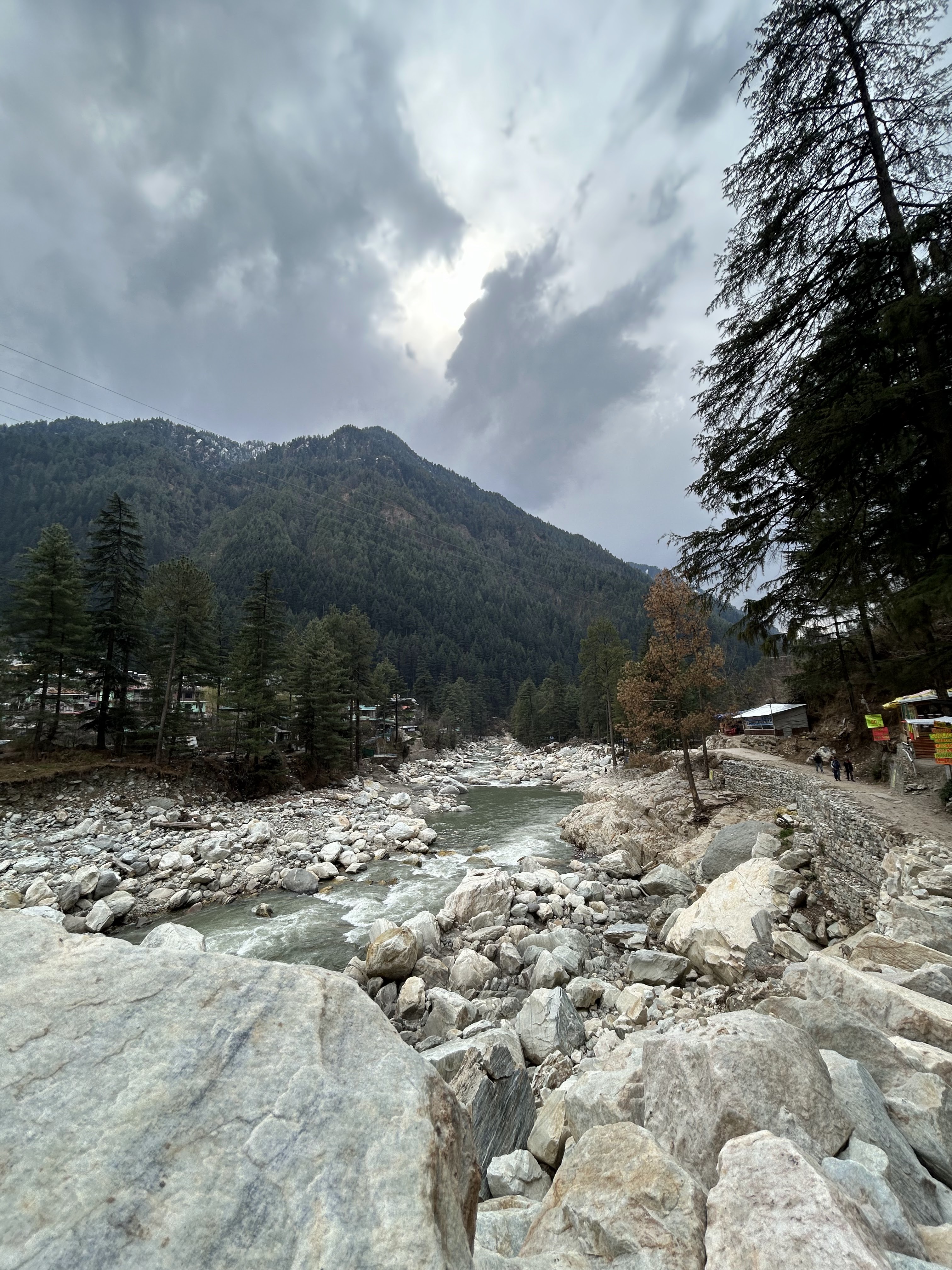
Upon our return to Kasol around 4 PM, we made the decision to embark on a trek to Grahan village. The journey commenced with a 6-kilometre open jeep ride, followed by a 4-kilometre trek. The rough terrain of the bumpy road left us feeling a bit shaky as we travelled alongside the Parvati River. The trip became a little more adventurous as it started raining. No cover could protect us from the rain, however, as we climbed higher and higher it felt like the raindrops were descending in slow-mo – guess what, the raindrops had turned into snow!! I just witnessed my first snowfall and with the backdrop of the snow-capped mountains, it was gorgeous.
The jeep dropped us at the trek’s base, also serving as the starting point for those embarking on treks to the Spiti Valley. As time passed, we grew uncertain about reaching the village before sunset, especially since none of us were familiar with the route. Luckily, our shared jeep included some locals – two women and a small child. Generously, they offered to accompany us and guide us to our destination. It was very astonishing to see how they carried their heavy luggage and the kid and trekked up in the snow as if it was an evening walk in the park. As we trekked up, the snowfall got heavier and the weather colder. Stopping in the shelters in between for rest and enjoying the beautiful views, we reached the village just when the sun had set.
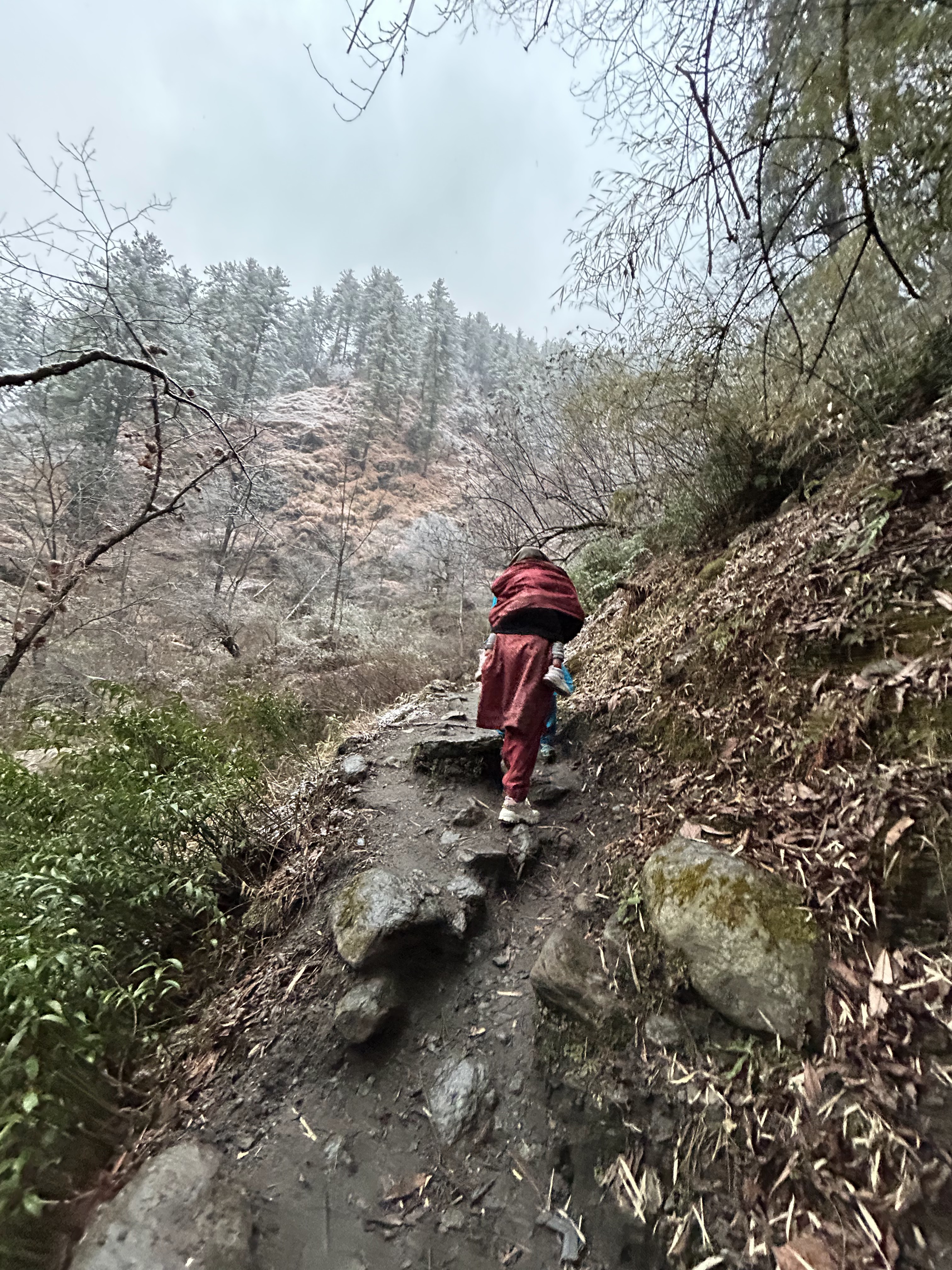
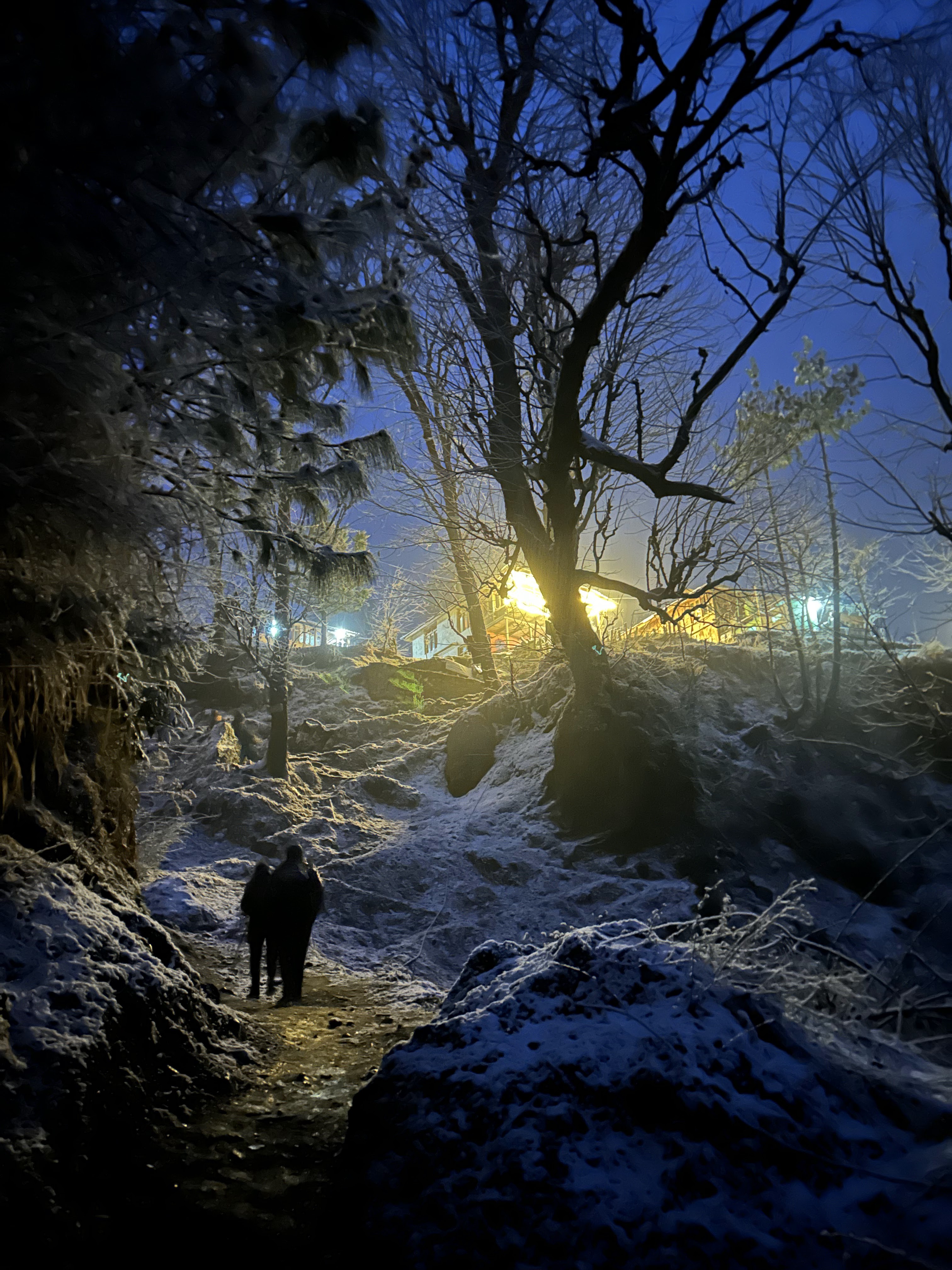
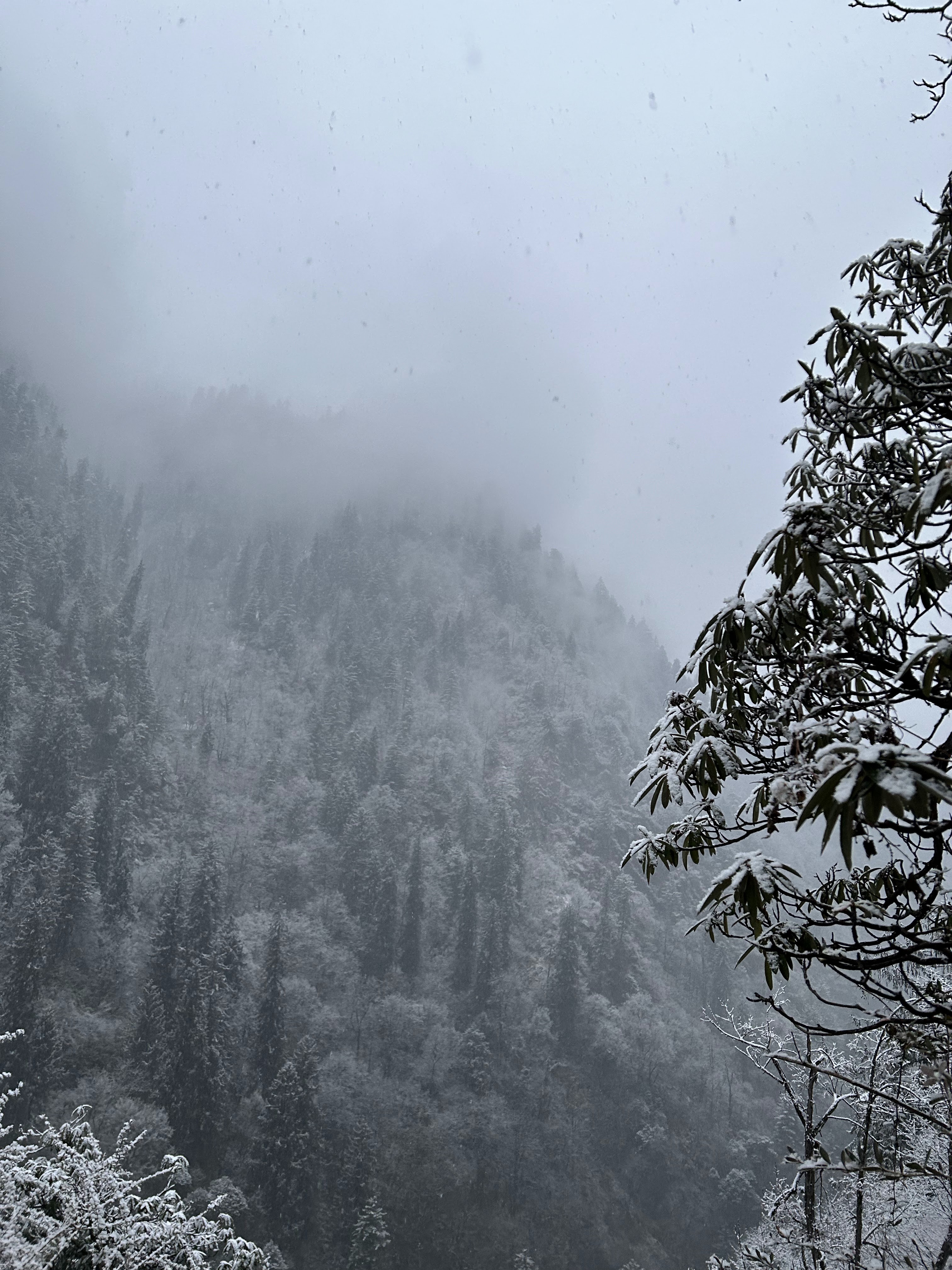
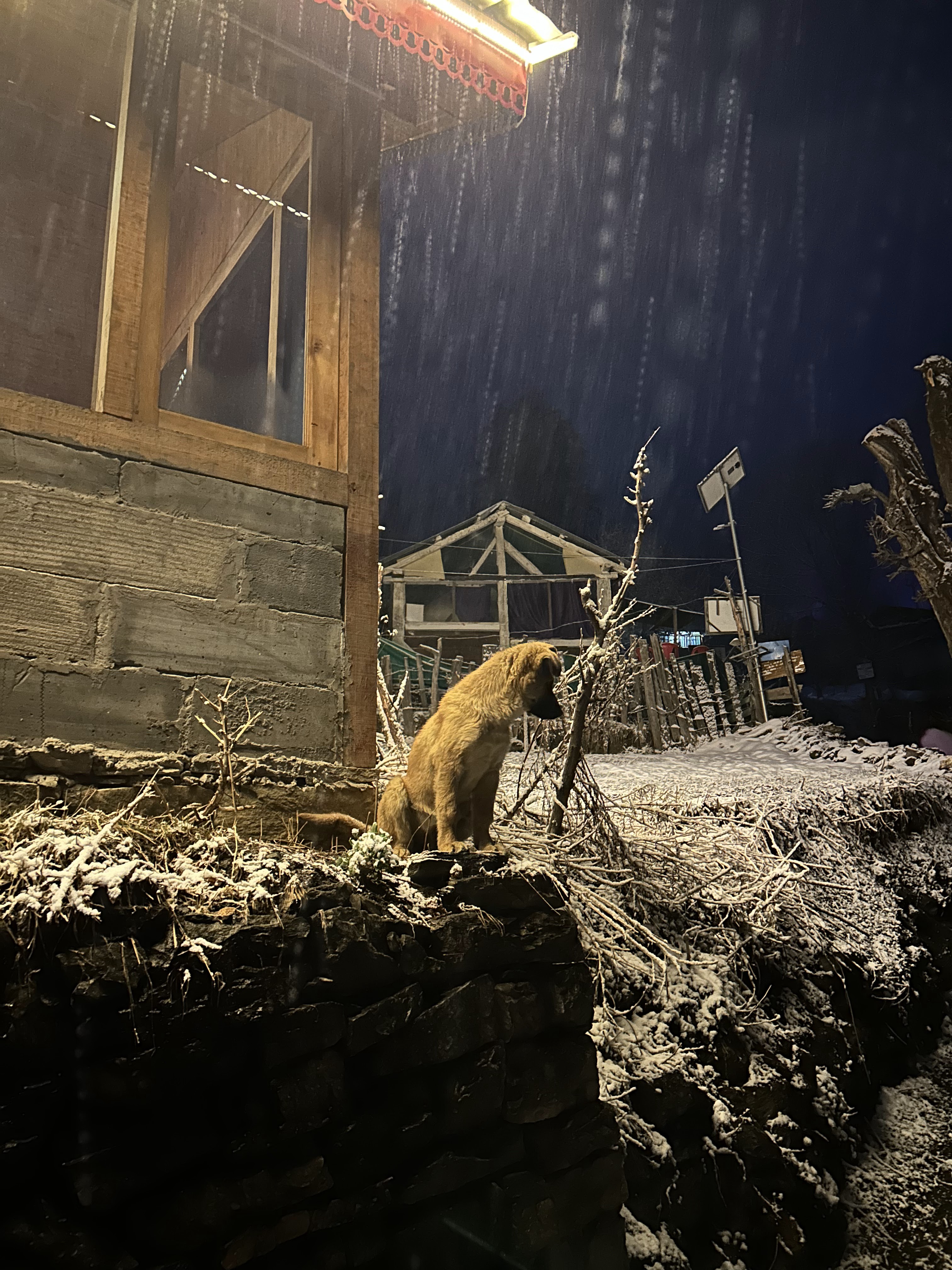
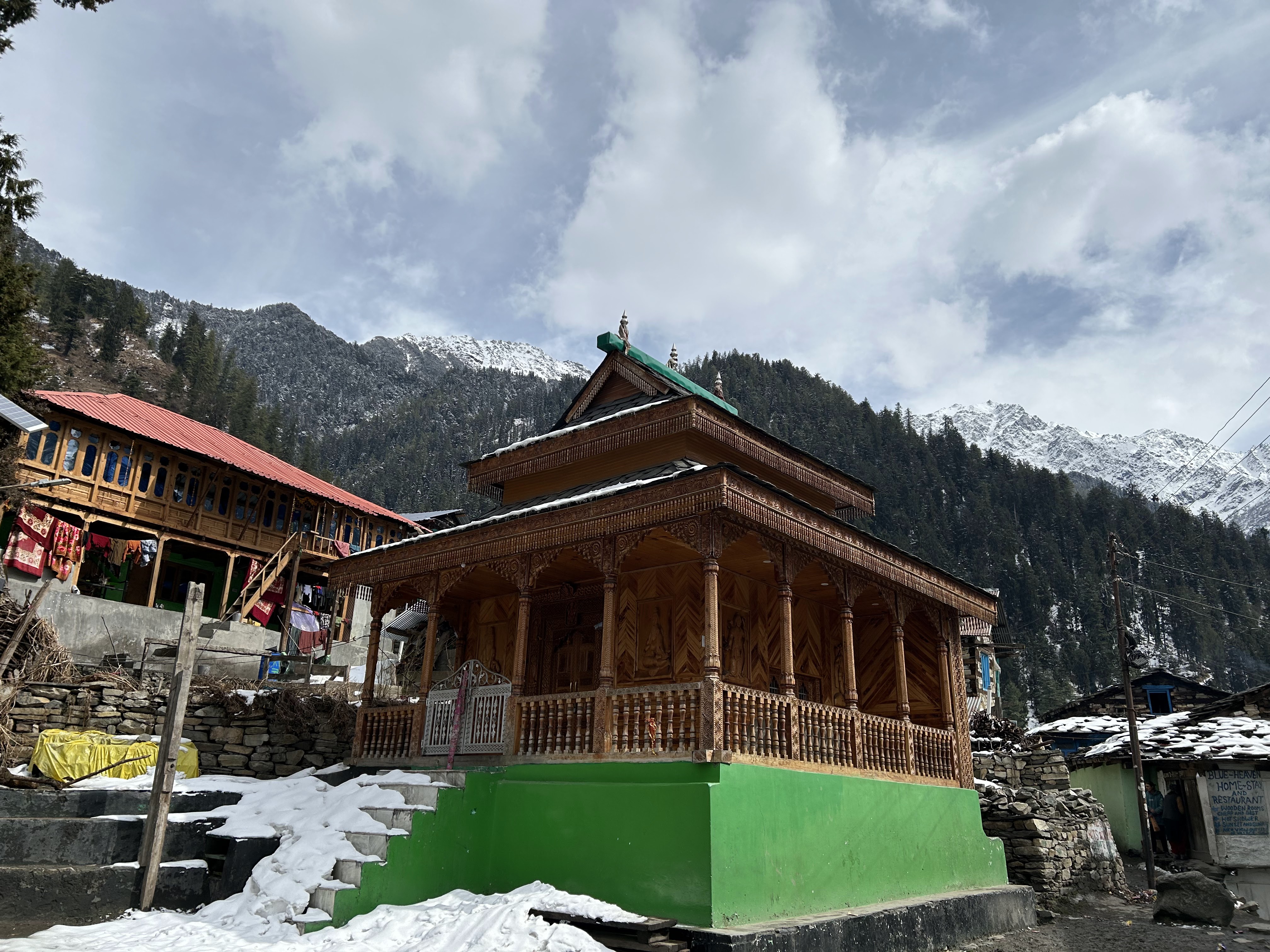
Grahan is a very small village with a lot of homestays and cafes. There is a temple of Mahrishi Yajnavalkya due to which alcohol is illegal in the entire village. Upon exploring, we decided to spend the night at Sacred Wood homestay. We got a huge room with 4 beds on the floor, wifi and a tandoor. As the entire place was made of magic wood, it stayed pretty warm even in cold temperatures and surprisingly they also used the same wood in the tandoor as it catches fire easily. After a cup of coffee and some tasty dinner, we spent the night talking and watching the humongous snow-filled mountains surrounding our place. The homestay was managed by a friendly couple who stayed in a separate cottage right next to our stay. Though the temperature dropped to -6 degrees Celsius, it didn’t stop us from spending most of the night filling ourselves with the beauty of Himachal.
Going to the washroom the next day was a disaster. The water in the jet spray, water sink was completely frozen and the water in the bucket had a thin layer of ice on it. Wasn’t the ice bucket challenge I was expecting early morning. After freshening up, we decided to visit the nearby waterfall. The path to the waterfall was incredibly beautiful, with a thick layer of snow beneath our feet, the morning sunlight reflecting on the ice, and snow melting off the pine trees, creating a picturesque scene. As we walked, a mountain dog joined us, trotting along the path. Although the waterfall itself was small, the overall experience was truly memorable.
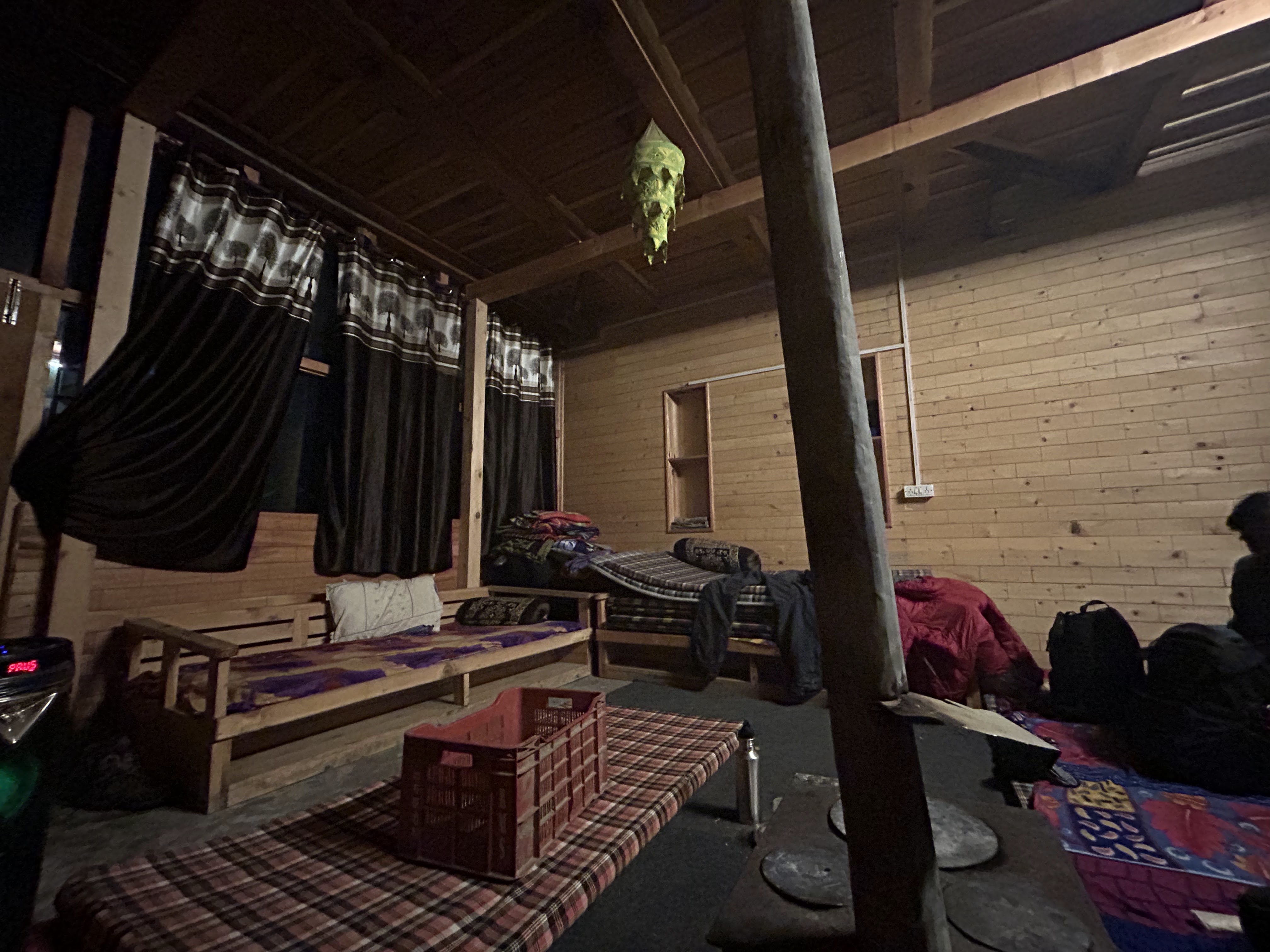
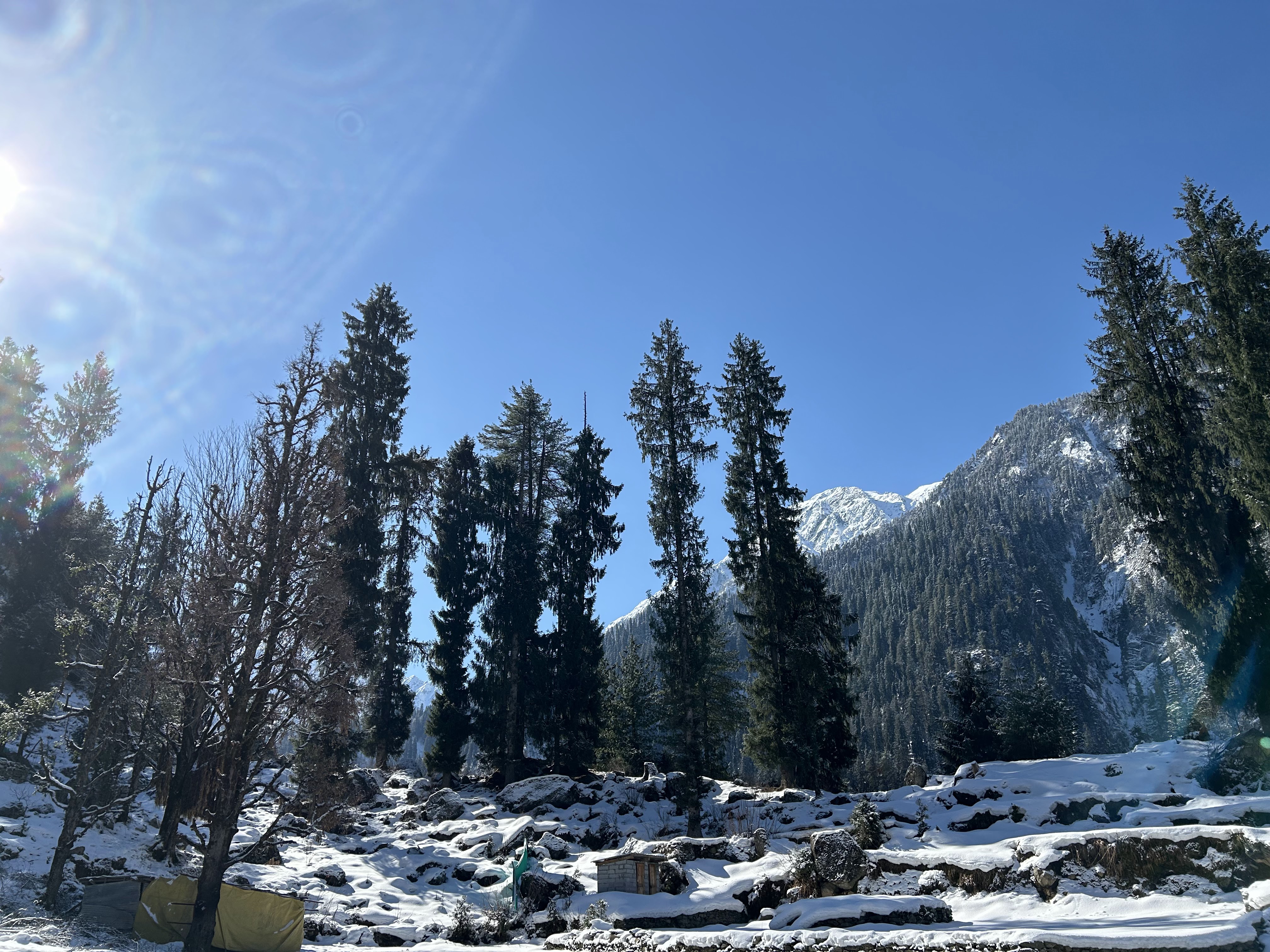
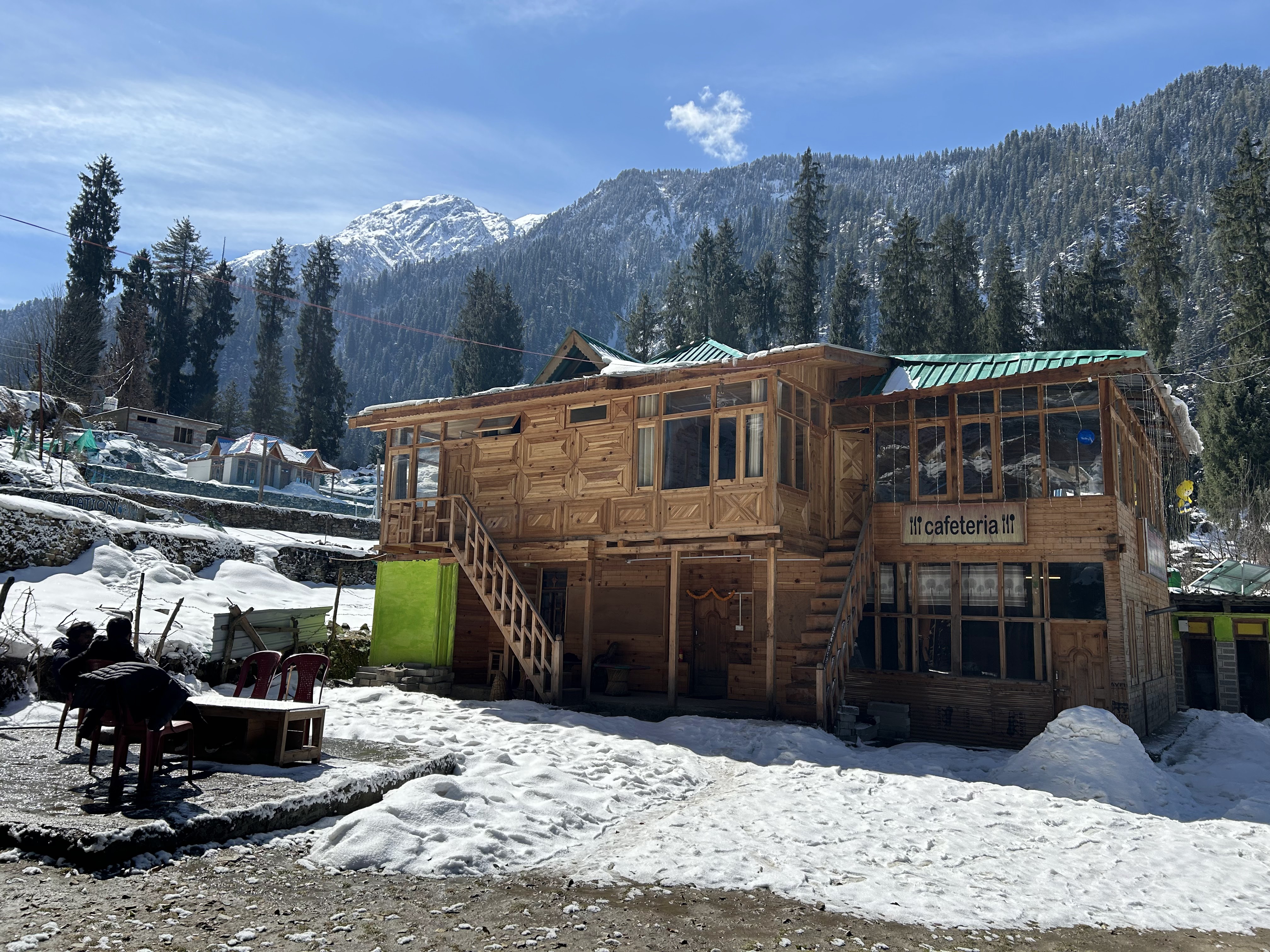
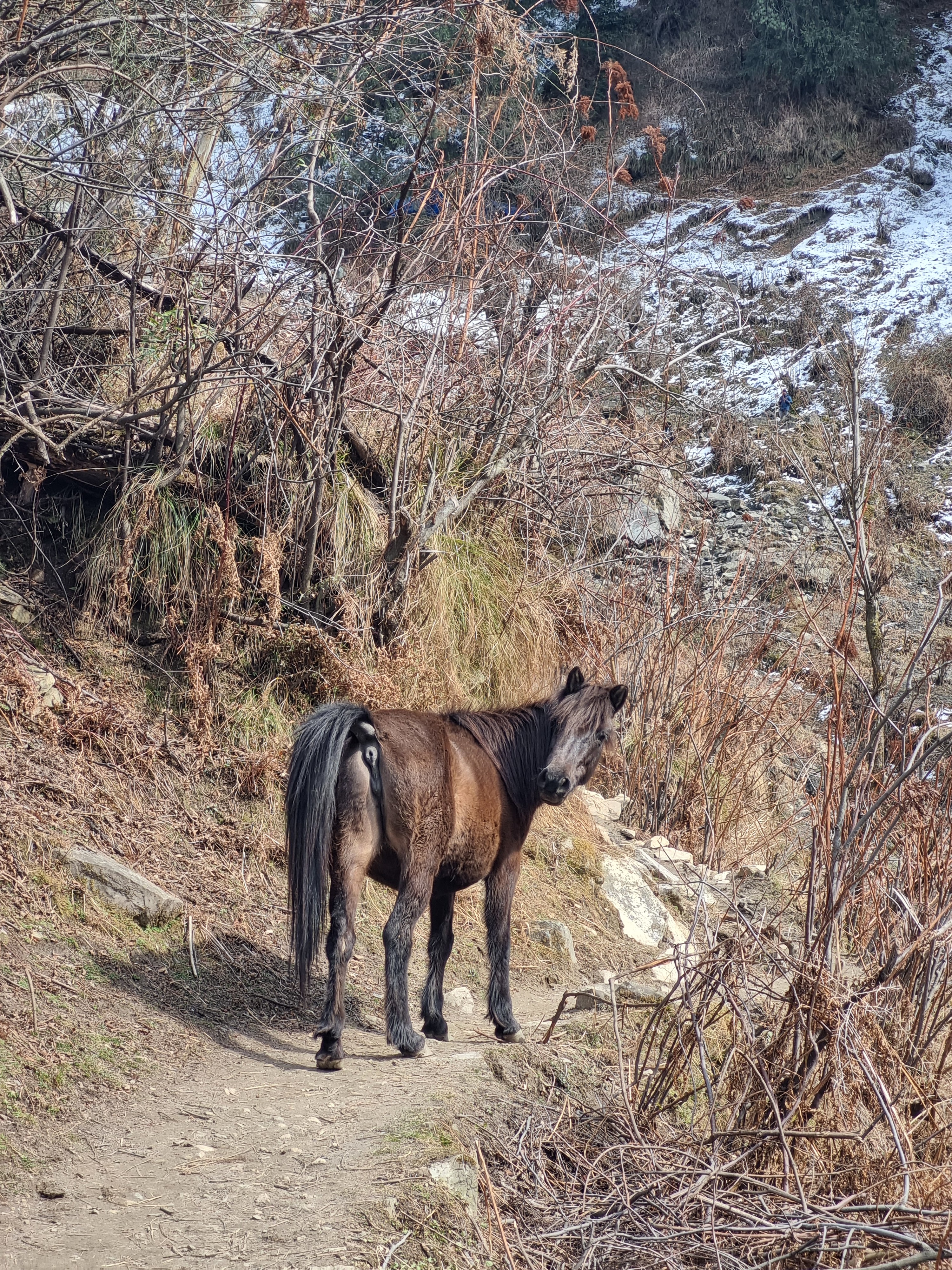
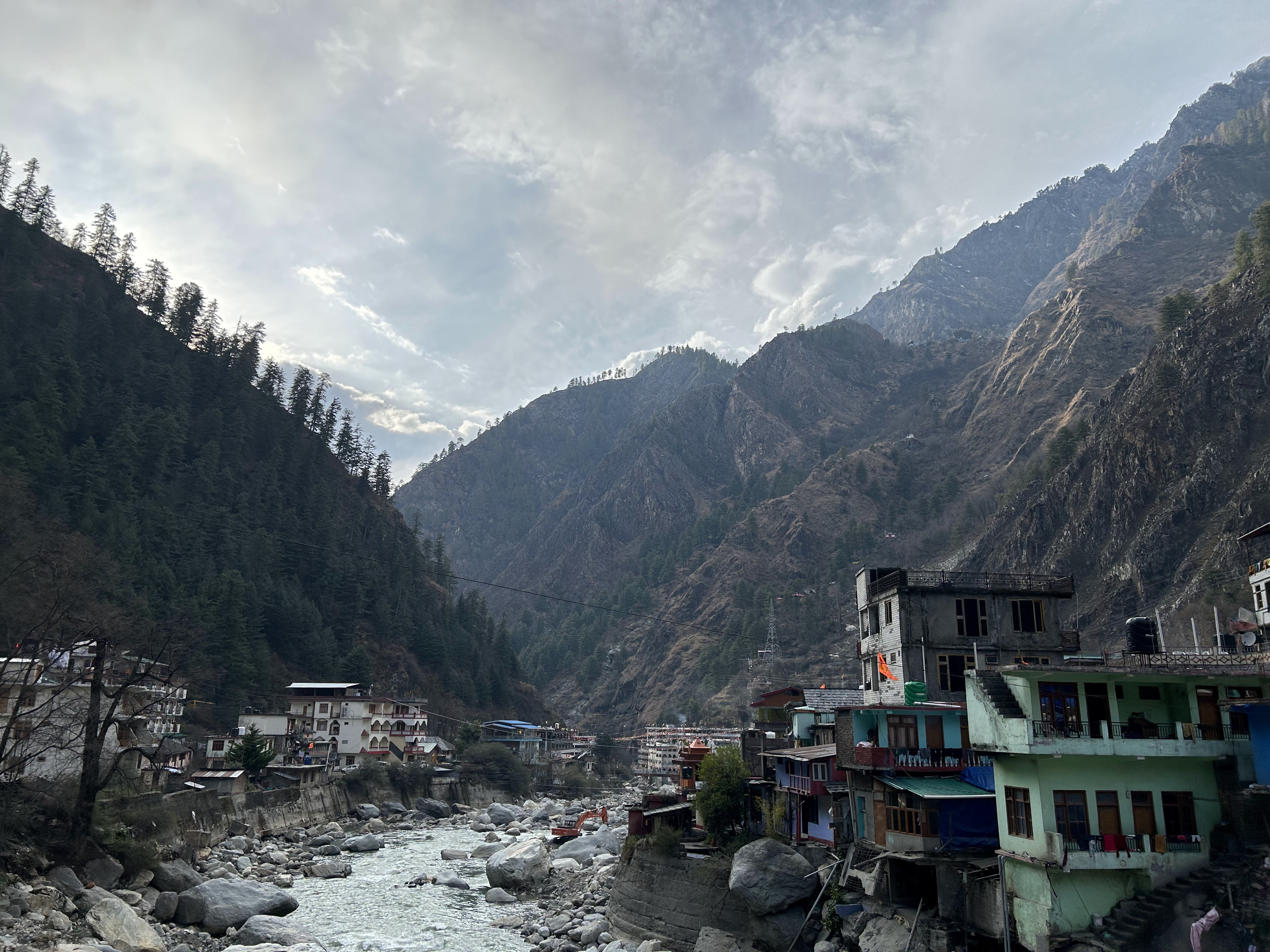
After returning, we packed our items and had butter toast and coffee for breakfast before starting our descent back to Kasol. The slippery road, covered with a mix of ice and mud, made our descent challenging, but we moved quickly. Once we were back in Kasol, we had some cake in the nearby German bakery and caught a bus to Manikaran. It is famous for its hot springs and is considered sacred by both Hindus and Sikhs. The hot springs are believed to have medicinal properties and attract devotees who come to take a holy dip in the waters. Additionally, Manikaran is home to several temples, including the Manikaran Sahib Gurudwara, which holds immense religious significance for Sikhs. The surrounding natural beauty, with towering mountains and the roaring Parvati River, adds to the spiritual ambiance of the place.
We had the opportunity to take a bath in the hot springs which was very refreshing considering the cold weather of Himachal. The Shiva temple adjacent to the Gurudwara was very peaceful and there was a mini hot spring where rice was boiled. On our way back, we also had a chance to witness a Himachali festival. The cultural celebrations featured a unique dance ritual where participants formed a circle and danced to rhythmic beats. We went back to Chalal for the night.
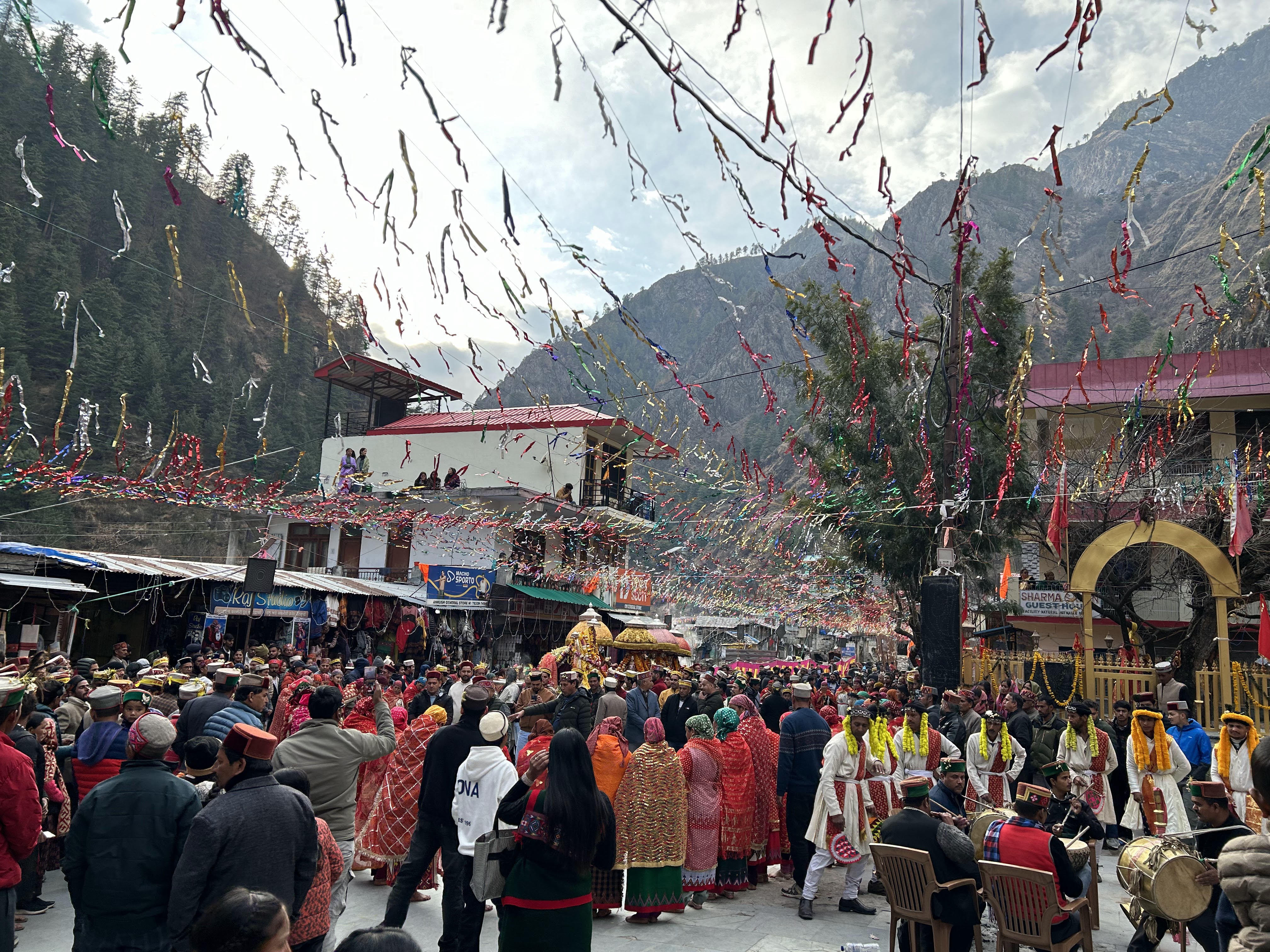
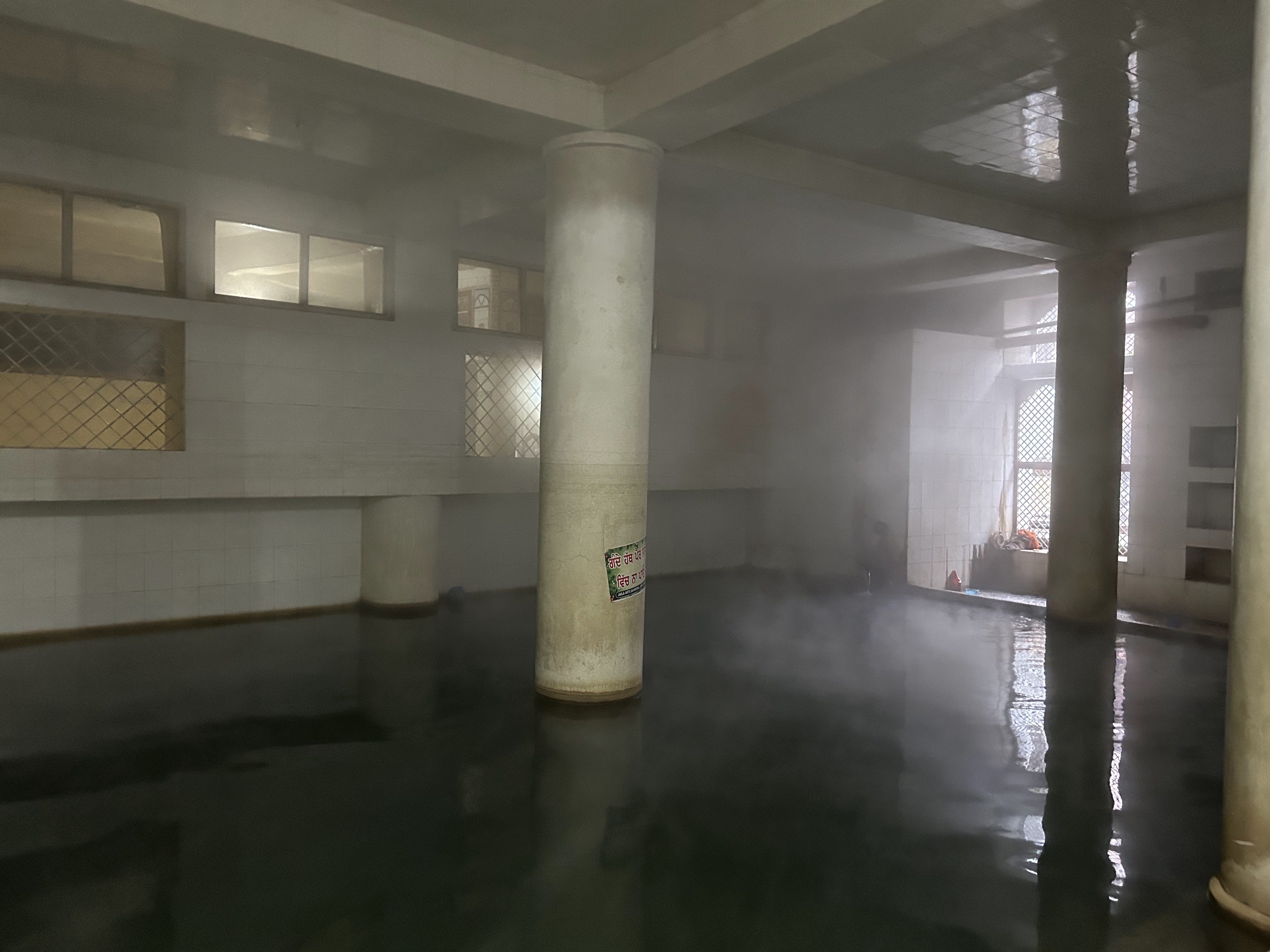

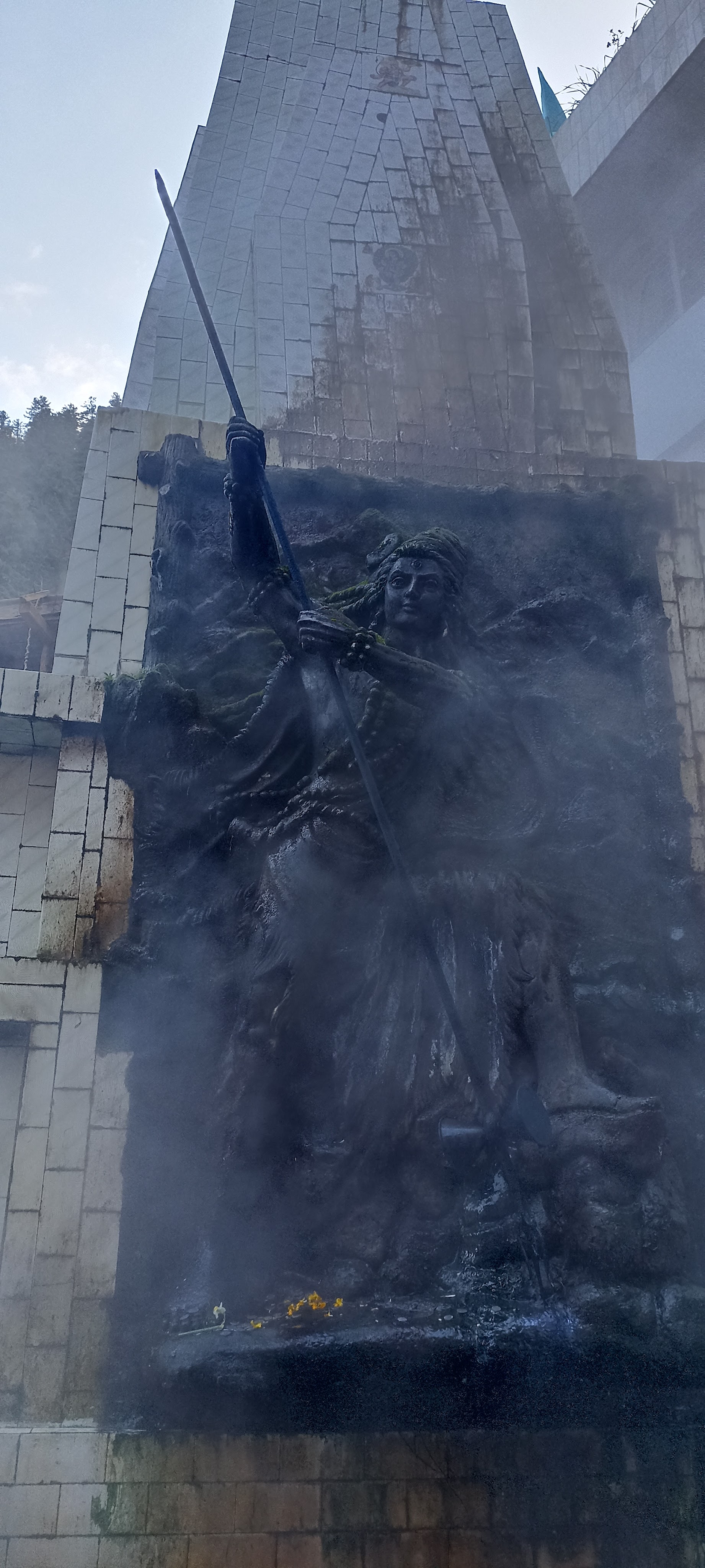
The next morning, after checking out, we headed to a nearby cafe where we spent the entire day. We ordered breakfast, lunch, and beverages at intervals while working. In the evening, we walked back to Kasol, took our luggage from the cloakroom and headed to the bus stop to catch our bus to Delhi. As I bid farewell, I couldn’t help but feel a bit of sadness knowing I would miss the clean, refreshing air and the stunning landscapes of Himachal. Nonetheless, I cherished the memories made during this perfect weekend getaway.
We reached Delhi at dawn and took a metro to reach Gurgaon. After checking into the hotel, we went to our office. We had just transitioned from nature to a vibrant city with buzzing vehicles, skyscrapers and hustling people. After two days of work in the office, we caught a train to Sirsa in Haryana. We then travelled 25 km more to reach Malwani, a small village bordering Haryana in Rajasthan. Surrounded by farmlands and old-fashioned houses, the village had everything from camels to cows giving it a perfect rural feeling. We stayed there for four days and enjoyed the pre-wedding celebrations upon which we travelled to Jaipur for the wedding.
After attending the lavish wedding in the Pink City, we decided to extend our stay for an extra day to explore more of Jaipur. Although our time was limited, the standout highlight was undoubtedly the delicious food. From delicious Kachoris and Kadhi to savoury Besan ka Ghatta and refreshing Chaaz. Unfortunately, I found myself in a similar situation, spending the entire night at Jaipur International Airport in preparation for my early morning flight with Indigo at 6 AM.
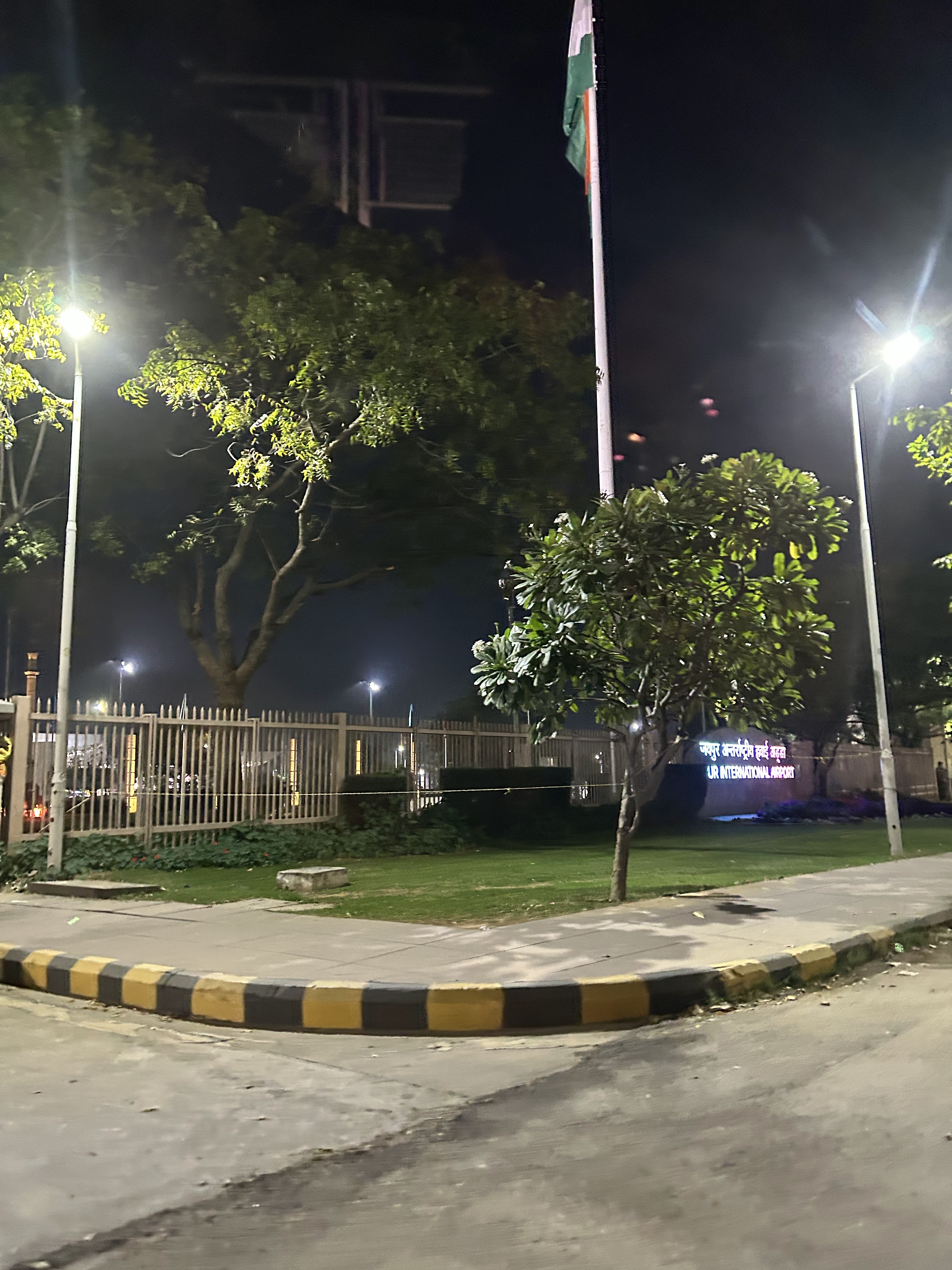

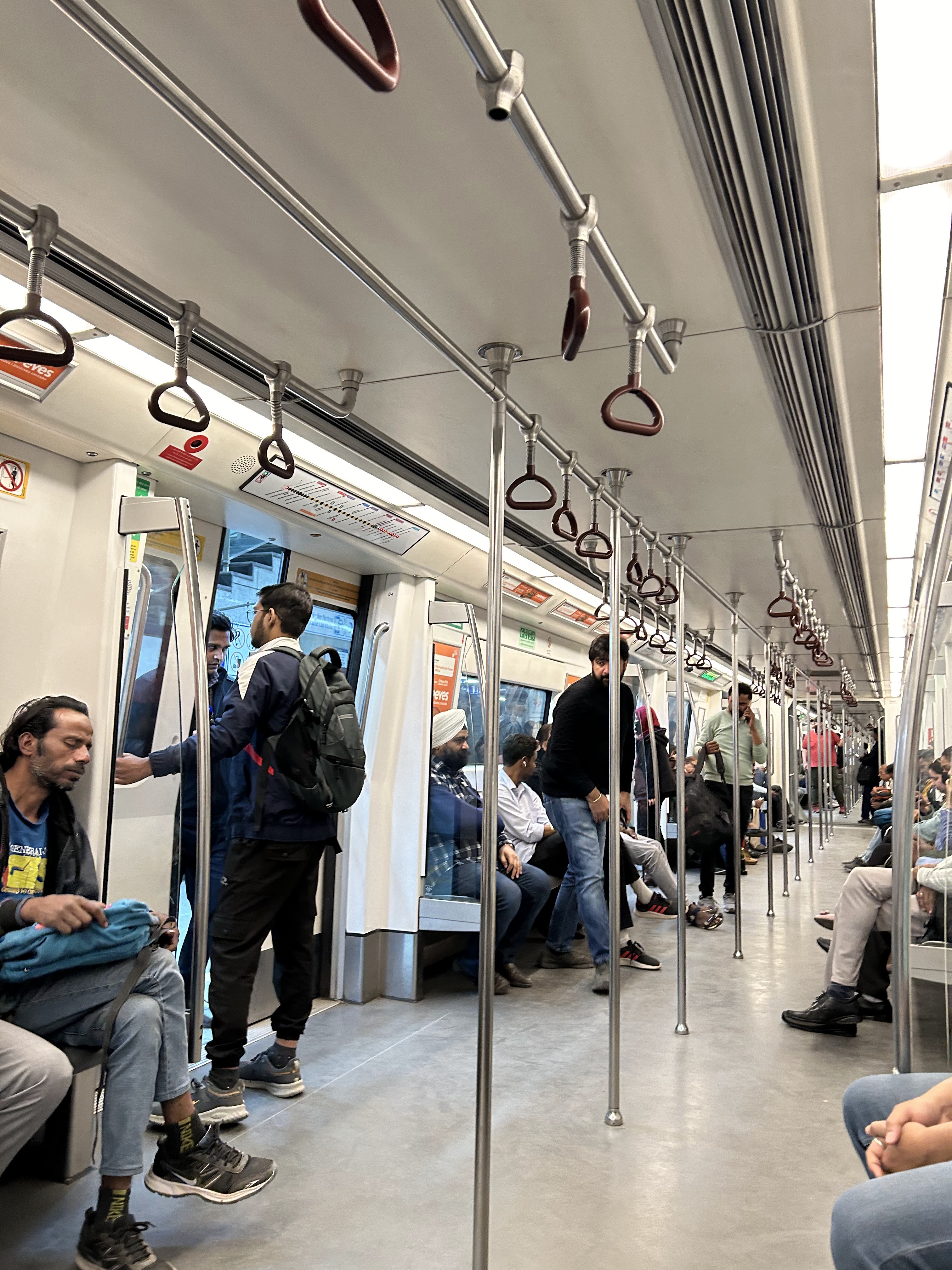
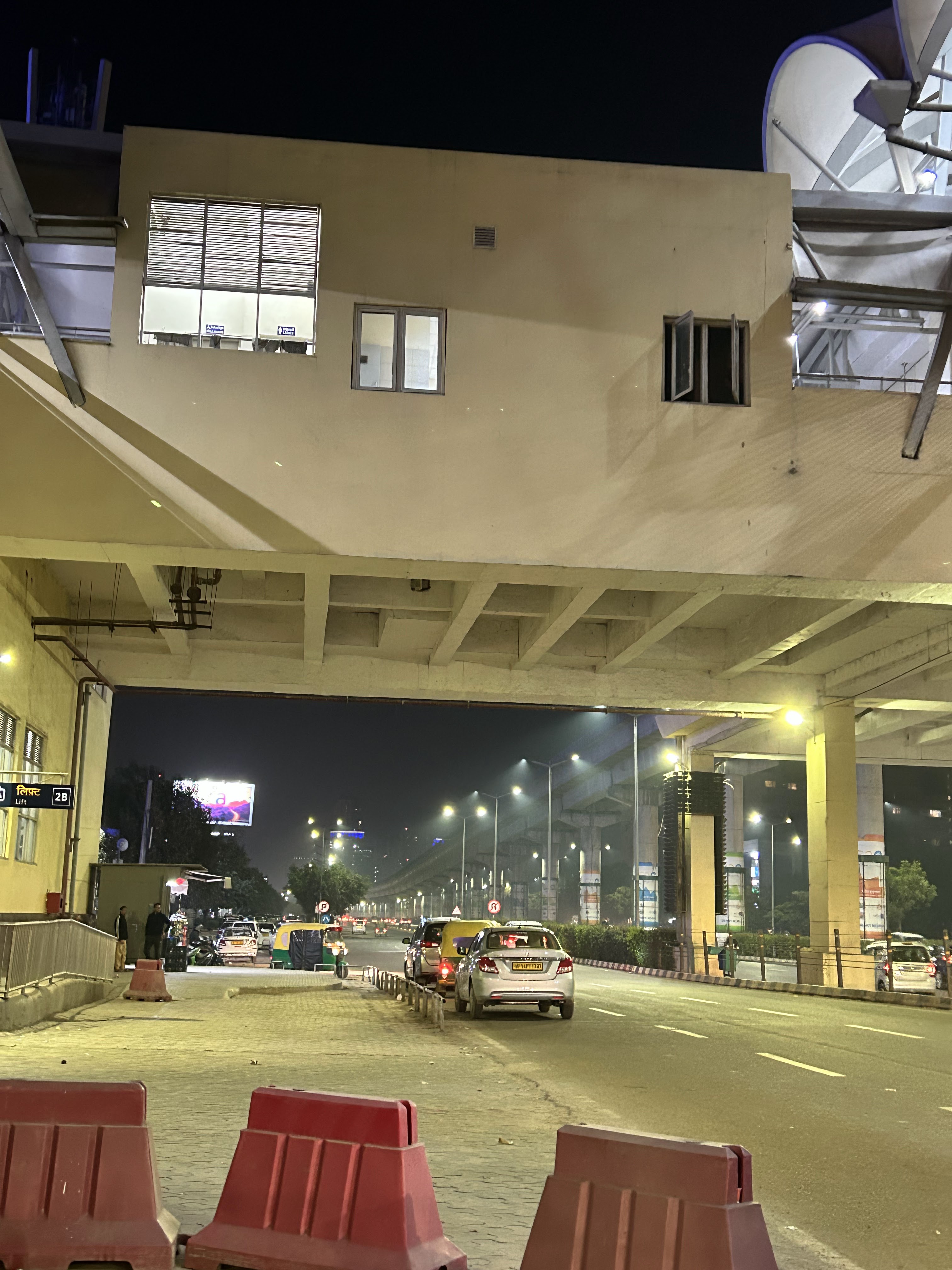
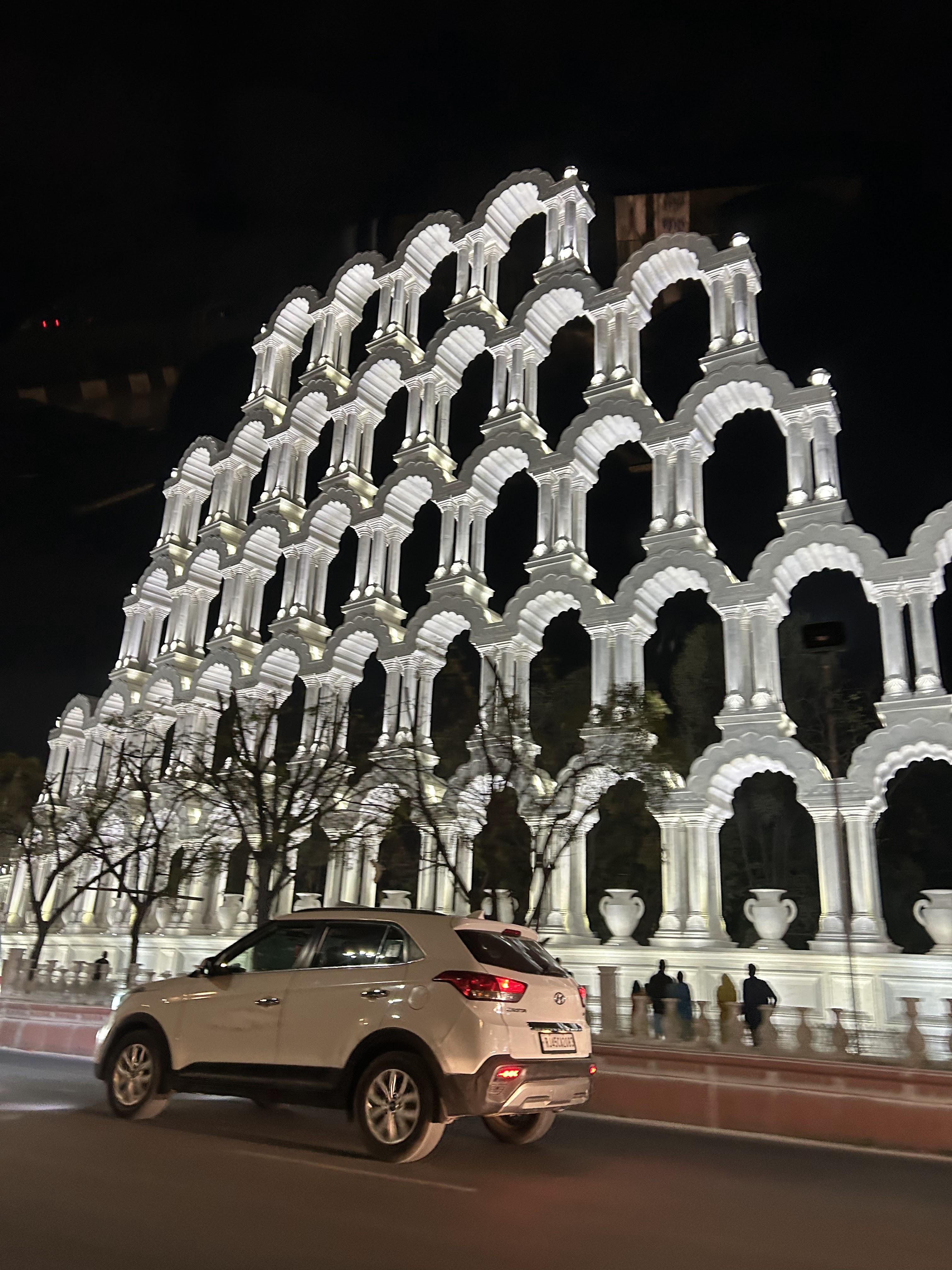
As my longest and most spontaneous adventure drew to a close, I couldn’t help but reflect on its diverse experiences. From moments of peace and spirituality to exhilarating adventures like rafting in Rishikesh and trekking snowy mountains in Kasol, it was a journey filled with unforgettable memories. Exploring the unique cultures of Himachal and Rajasthan added depth to my travels, leaving me grateful for the richness of India’s diversity. This trip ignited a newfound motivation within me to work harder and earn a buttload of money, knowing that there’s still so much more to discover not only in India but an infinity beyond. The trip may have come to an end, but the endless opportunities await. I’ll be back!